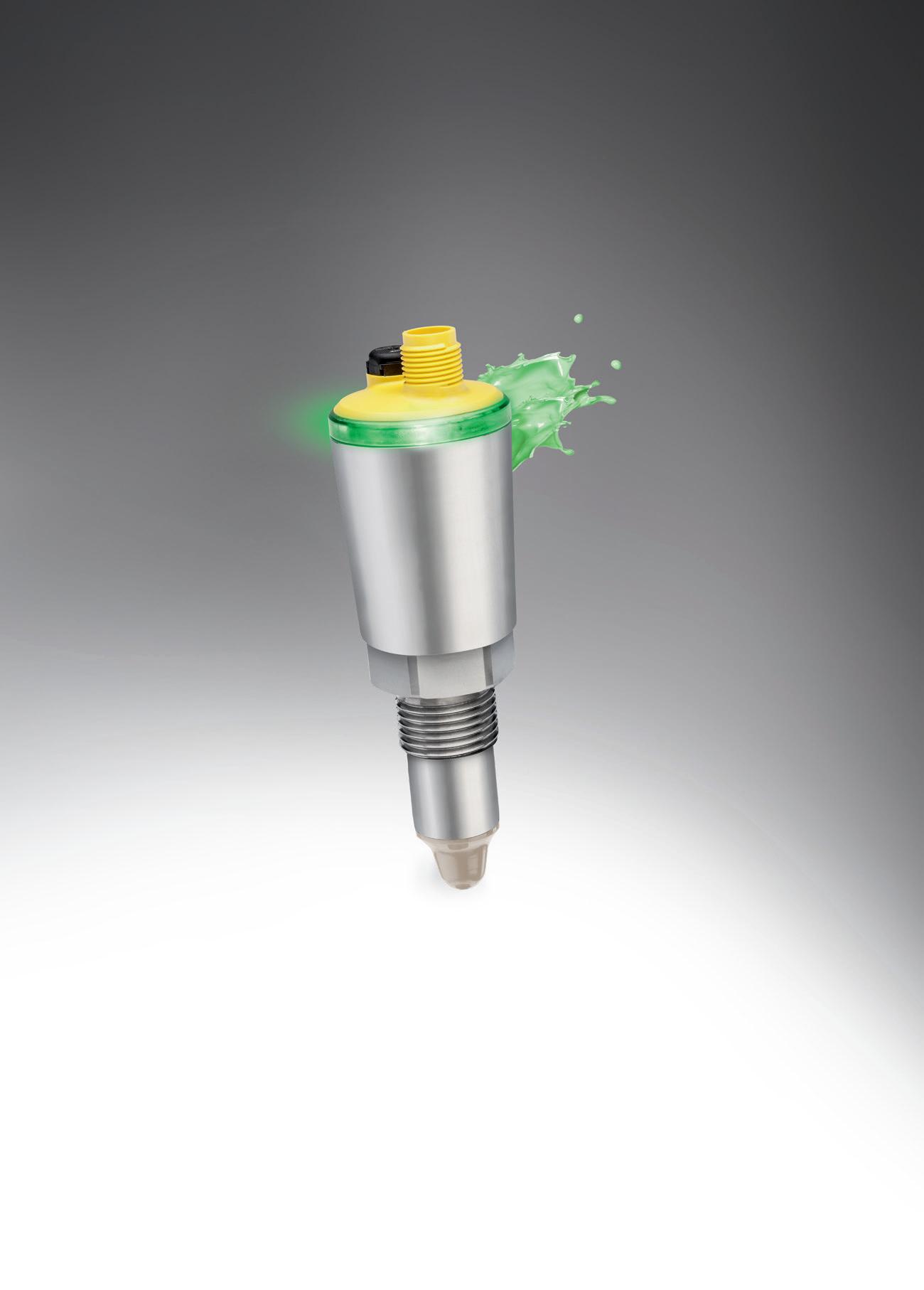
DIGITAL TWINS FOR ADVANCED ASSET MANAGEMENT

TECHNOLOGY TRIALS
ADDRESS WATER INDUSTRY CHALLENGES



ADDRESS WATER INDUSTRY CHALLENGES


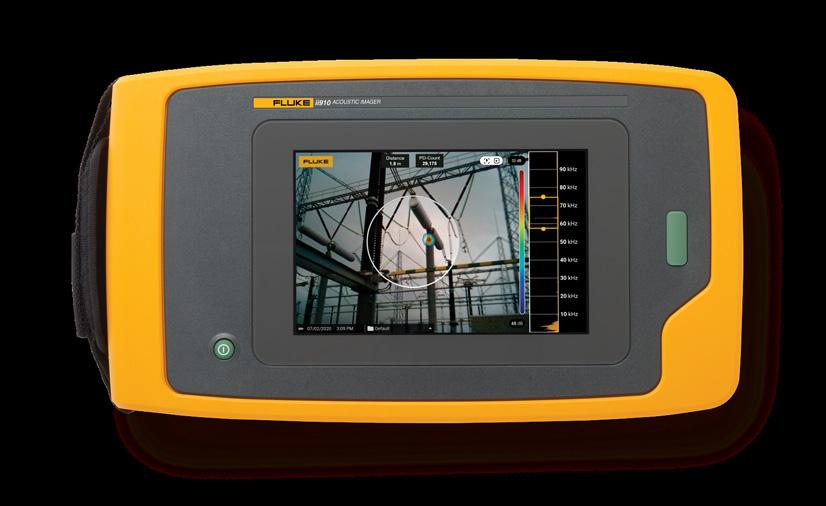
Quickly, easily, and safely monitor your equipment for partial discharge.
Partial discharge is a very serious issue that you would be like to be able to monitor quickly and easily. Whether you are inspecting insulators, transformers, switch gears or high voltage power lines you need to be sure that you can spot problems quickly and early. Partial discharge that goes unchecked can cause blackouts, fires, explosions, or even death from arc flashes. In addition, there is a significant monetary risk of downtime. Finally, a better way to safely detect partial discharge and prevent downtime before it occurs.
Learn more:



While most of the net-zero targets have been focused on reducing emissions from electricity use, attention has also turned to what leadership in reducing emissions from gas use looks like.
In June, the Clean Energy Finance Corporation made its first hydrogen-related commitment, investing in innovative electrolyser production technology developed by the University of Wollongong, which has the potential to boost Australia’s clean hydrogen industry by bringing down production costs.
As the largest gas distributor in New South Wales and the owner of some of Australia’s most important gas transmission pipelines, Jemena is well-placed to initiate the transition to renewable gas and a more sustainable energy future.
In this edition, we’ll be looking at the key projects Jemena is undertaking to better understand the interaction between renewable gases, such as hydrogen and biomethane, and existing gas infrastructure.
Finding the right scalable technology is also crucial for the water industry to meet its challenges.
In Victoria, this is where Intelligent Water Networks (IWN) comes in. It represents 16 Victorian water corporations, acting as a collective safe sandpit for testing and trialling technology.
IWN’s trials assess whether technology can solve common problems, drive business efficiencies and achieve better customer outcomes. With IWN’s ten-year anniversary passing quietly in the blur of 2020, we thought it was about time for an update on IWN’s eight programs and what they are currently focusing on.
Angelo Fiumara, Digital Asset Integration Manager at Essential Energy, has contributed an excellent article on how the utility is utilising a digital twin to uplift its asset management and operational practices, unlocking ways of working not previously possible.
Essential Energy manages one of the largest and most geographically dispersed distribution networks in the world. By
building a digital model of the network and its surroundings, the utility has access to new insights that better inform the asset decision-making process, because assets can be accurately modelled to replicate how they will perform in reality and interact with the real world.
I also have my own announcement to make: I am moving on from Monkey Media and this is my last edition of Utility as Editor. My colleague Jessica Dickers will be taking the reins and will be your main contact moving forward.
Jess is Monkey Media’s Senior Editor and currently looks after Utility’s sister publication, Infrastructure magazine. She has been with the company for six years and has worked across all the magazine brands, including previously on Utility, so she’s the perfect person to continue Utility’s reputation for high-quality, engaging content.
On a personal level, I’ve met so many wonderful people during my time as Utility Editor and I’ve loved being part of such a passionate community – one that is committed to delivering affordable, reliable and sustainable water and energy services to Australians everywhere.
It’s been a pleasure working with you all and thank you for making the past three years so rewarding and enjoyable. No matter what I do in the future, I’ll always look fondly on my time spearheading Australia’s only dedicated utility magazine and cementing its role as a consistent voice for the industry.
Change is simultaneously terrifying and exhilarating which is what makes it important – it keeps us fresh, energised and on our toes. While I’m sad to be leaving Utility and Monkey Media, I’m looking forward to this next chapter of my career and seeing where it takes me.
For those interested in keeping in touch, you can connect with me on LinkedIn at www.linkedin.com/in/charlottepordage. Otherwise, please welcome Jess as the new custodian of Utility – you can direct all enquiries to jessica.dickers@monkeymedia. com.au.
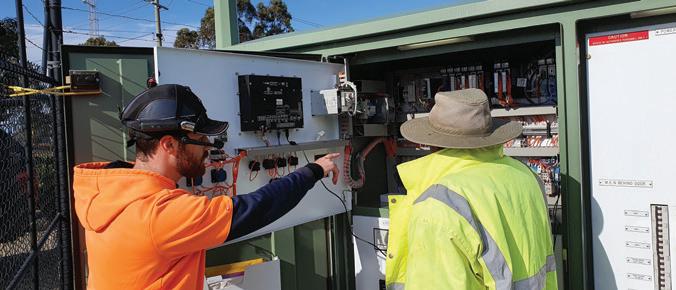
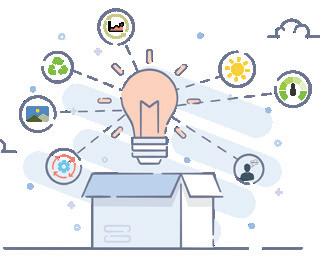



As
Australia’s recycling and resource recovery sector is undergoing major transformation, driven by global market pressures. A new Clean Energy Finance Corporation (CEFC) report has identified an upside to this upheaval: a potential investment pipeline worth billions of dollars.
temperatures continue to rise, and the number of extreme heat days each year increases, keeping cool is more important than ever. In Australia and worldwide, our cities are particularly affected by hot weather, with severe public health, liveability, environmental and economic consequences. Adopting innovative smart irrigation can significantly and cost-effectively cool urban spaces, mitigating the effects of heatwaves while also saving water.
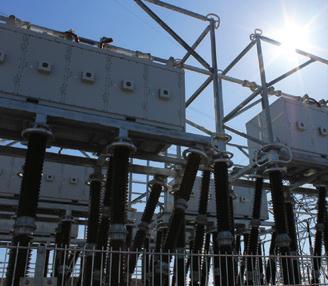
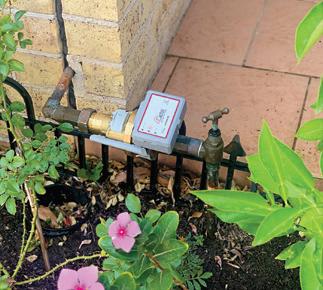

 RBy Dr Dennis Van Puyvelde, Head of Gas, Energy Networks Australia
RBy Dr Dennis Van Puyvelde, Head of Gas, Energy Networks Australia
esidents of Mitchell Park in Adelaide’s south-west are living in the future, today. In May, Australian Gas Networks launched its Hydrogen Park SA project, a hydrogen blending initiative that demonstrates hydrogen use in Australia is not some far away fantasy, but a reality.
Australia is on a pathway to decarbonise its gas sector to help meet our nation’s emission reduction commitments. A key part of this journey is to demonstrate the role of hydrogen for homes, businesses and industry. The logical steps are to start with renewable gas blends in networks, then to demonstrate 100 per cent renewable gas in dedicated towns or regions and ultimately to convert all existing networks to 100 per cent renewable gas.
The Hydrogen Park – South Australia (HyP SA) project started blending five per cent hydrogen into the residential gas network. This major step is demonstrating the supply of renewable hydrogen to 700 homes and subsequent stages may include providing hydrogen to industry or for refueling hydrogen vehicles.
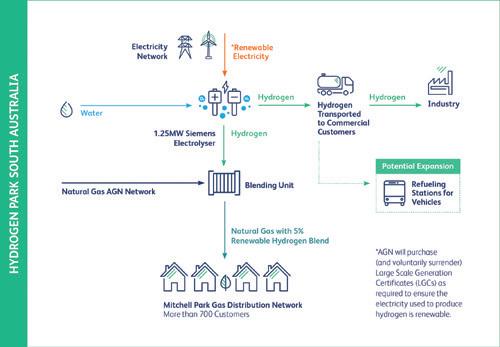
There are global examples of blending renewable gases such as biomethane and hydrogen into the gas grid. Demonstrations of up to 20 per cent hydrogen have been successfully carried out in France and the UK. A demonstration of 100 per cent in the Scottish town of Levenmouth shows how renewable hydrogen and hydrogen appliances can be used to provide heating services to homes.
The Australian projects build on this international experience and address local issues such as different operating pressures of the gas network, different energy content of the natural gas and different appliances. Shortly to follow will be more renewable gas projects increasing in scale, application and hydrogen blends. These are important stages to work through to minimise the impacts and disruptions to customers when converting to renewable gas.
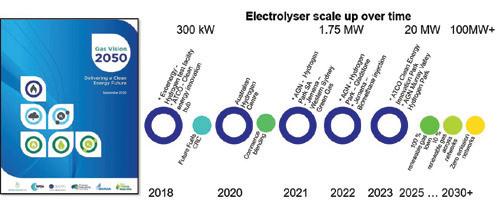
There are a range of different hydrogen production processes. The cleanest form is to use renewable electricity to produce hydrogen through electrolysis. The energy required in the HyP SA project will be generated by wind and solar power, so the whole process will be renewable.
A few weeks ago, the City of Yarra in Victoria pledged to switch its buildings from natural gas to renewable electricity by 2030. This pledge aims to reduce greenhouse gas emissions. Unfortunately, switching from gas to electricity comes with many challenges and increases the overall cost of reaching zero emissions.
Recent regulation-driven electricity price increases in the ACT, off the back of a 133 per cent hike in the Territory’s large-scale feed-in tariff, offer a cautionary tale about an electrification bias.
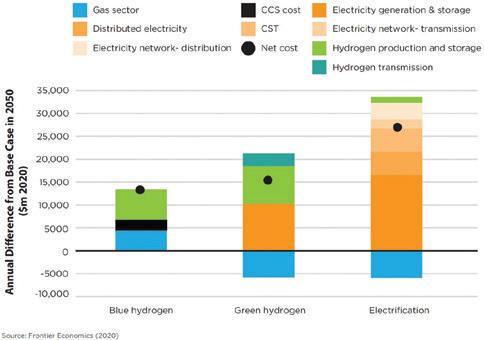
Decarbonisation costs (Source: Gas Vision 2050: Delivering a Clean Energy Future, Nov 2020)
The use of renewable gas is a cheaper option that should be on the table. It ensures efficient investment in energy infrastructure, manages seasonal and daily peaks, and creates benefits to other sectors such as transport and power generation. Most importantly, many customers prefer to use gas over electricity for cooking and heating.
Australia’s gas infrastructure businesses are demonstrating the most economically efficient way to achieve zero emissions by blending renewable gas into networks. Hydrogen is here today, and it has a big role to play for Australia to meet its Paris Agreement on climate change. You could say it is a primary element to do so!




This year, WSAA has formed significant partnerships to progress conversations and collaboration in the digital space. In March, WSAA and Internet of Things Alliance Australia (IoTAA) signed a Memorandum of Understanding (MoU) and officially launched the collaboratively developed Digital Reference Framework
In April, WSAA formed a MoU with BIM4Water, a UKbased cross-industry group, with a mission to lead the digital transformation of the water sector through better information management. Both partnerships see the advancement of conversations and knowledge sharing to benefit the urban water industry and its customers.
In addition, WSAA also re-confirmed its ongoing relationship with the Victorian Intelligent Water Networks (IWN), producing a leadership video on digital asset management around the Victorian Digital Asset Strategy (VDAS).
The collaboration with the IoTAA has seen the development of a Digital Reference Framework. This framework is designed to facilitate simpler and more direct conversations about digital technology both within the business and with suppliers – resulting in quicker, more informed and more effective adoption of new technology.
Its use should simplify the understanding of digital systems, improve clarity, and streamline digital procurement. The Internet of Things proposes significant opportunities for the water sector. Through collaborations such as this one with IoTAA, it is hoped we can provide tools and insights that will benefit not only the sector, but also our customers and the Australian economy.
A new collaborative opportunity is now being explored through the development of the IoT Water Hub. The initial concept is for an industry partnership IoT system of real-time monitoring and control to help the delivery of a secure water future, increased diversity of supply, enhanced ecosystems and engaged communities.
WSAA has been working with the founding members, South East Water, Melbourne Water, Monash University and Melbourne University, together with the IoTAA and IWN, to broaden industry participation. This initiative offers a unique opportunity for collaboration between several key water sector groups and the private sector in a way that will enhance the uptake of innovative IoT solutions.
The MoU with BIM4Water in the UK will facilitate mutual sharing and collaboration. Both WSAA and BIM4Water believe there is value in partnering and, where appropriate, developing Australian groups to mirror those in BIM4Water. The first collaborative initiative between the organisations has been to develop a mirror group for the UK Water Industry Classification and Hierarchy Standardisation group.
The intent is to accelerate the development of an international asset naming convention for water utility assets based on UK classification standard, Uniclass. Completion of this naming standard would enhance the ability of water utilities to manage their digital asset information and communicate with other sectors.
WSAA will develop these partnerships further as the industry continues the journey of digital transformation. For more information please contact Dr Greg Ryan, WSAA’s Director Business Excellence, on greg.ryan@wsaa.asn.au

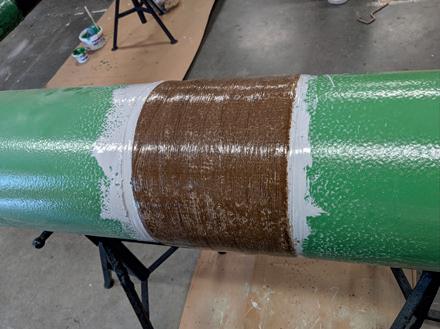
DENSO BORE-WRAP
FIELD-APPLIED ABRASION RESISTANT OUTERWRAP (ARO)

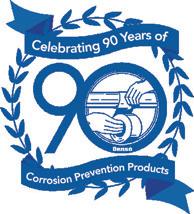
SUITABLE FOR: Field Joint Coatings | Mainline Coatings | Shrink Sleeves Trenchless Installation | Directional Drilling | HDD and Boring


DENSO® are leaders in corrosion prevention and sealing technology. With over 135 years’ service to industry, our mainline field joint coating solutions offer reliable and cost effective protection for buried pipelines worldwide.
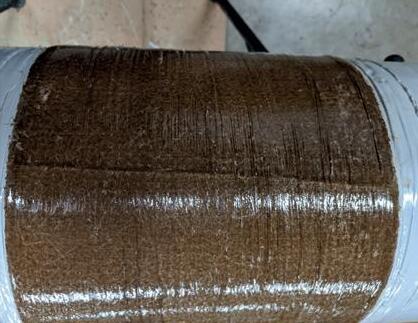
United Kingdom, UAE & India
USA & Canada
Australia & New Zealand Republic of South Africa
www.denso.net
www.densona.com
www.densoaustralia.com.au
www.denso.co.za
TransGrid will invest $1.8 billion to build Australia’s biggest electricity interconnector, Project EnergyConnect, which is expected to save NSW customers $180 million a year, and create 1,500 new construction jobs in regional NSW.
The TransGrid announcement coincided with the Australian Energy Regulator (AER) handing down its determination on capital expenditure for the project, approving $2.28 billion to deliver the project efficiently, including $457.4 million for ElectraNet to construct the South Australian section of the project.
Project EnergyConnect (PEC), a vital piece of energy infrastructure, will span more than 900km.
TransGrid CEO, Paul Italiano, said the company’s investment would deliver the major NSW section of PEC from Wagga Wagga in the state’s south to the South Australian border.
“PEC is a transformational energy project which will provide net benefits of up to $11.9 billion and save NSW customers $180 million a year, or $64 annually on an average household bill,” Mr Italiano said.
“PEC will be Australia’s biggest electricity interconnector built to date in the National Electricity Market (NEM) and it will help to accelerate Australia’s energy transition by connecting customers with more renewable generation.
“PEC will also help to abate an estimated one million tonnes of carbon emissions each year, contributing significantly to meeting Australia’s climate change targets.
“Regional NSW will benefit from the creation of 1,500 construction jobs and an injection of more than $250 million in direct project expenditure.
“The project will also contribute a further $4 billion in economic activity for NSW.”
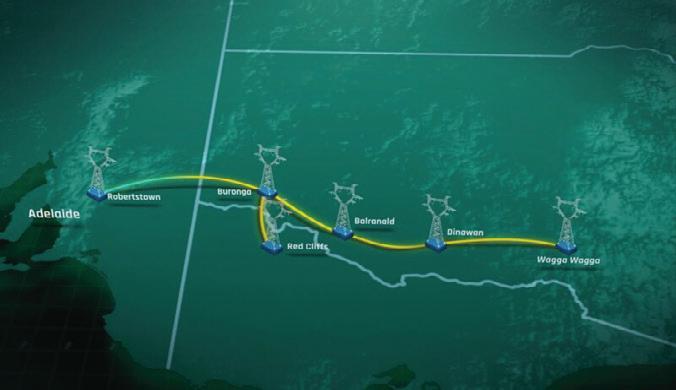
Mr Italiano thanked the South Australian Government for its support for the project, the Federal Government for the support it has provided via an underwriting agreement with South Australia and through the Clean Energy Finance Corporation (CEFC), and project delivery partner, ElectraNet, for the essential role it has played to advance the project through the regulatory process.
The ElectraNet Board will review the determination by the AER and consider its final investment decision on the project shortly.
ElectraNet also welcomes the TransGrid Board’s final investment decision to proceed with the NSW section of the project.
ElectraNet Chief Executive, Steve Masters, said, “The AER and TransGrid decisions are a significant milestone for PEC, which is a project of national significance and a priority project for the national electricity grid.”
The TransGrid Board’s investment decision came after it was able to partially resolve financeability issues for PEC, which challenged delivery of major regulated transmission projects in the NEM.
This has been achieved via an agreement between TransGrid and the CEFC on the issue of an innovative $295 million hybrid debt instrument.
“The agreement with the CEFC has been essential to the board’s final investment decision today and we are thankful to the corporation for working with us to progress this important project,” Mr Italiano said.
The CEFC investment, on behalf of the Federal Government, has been made via an innovative subordinated note instrument which has contributed to the crowding in of further private sector debt to this critical project.
CEFC CEO, Ian Learmonth, said, “It is significant that the largest single investment the CEFC has made since we began investing will help deliver more renewable energy to Australian consumers by adding such a substantial piece of infrastructure to our electricity grid.
“We are proud that CEFC finance is supporting this important investment in the grid.”
The CEFC commitment is a significant first step in the delivery of the Australian Energy Market Operator’s (AEMO) 2020 Integrated System Plan (ISP).
The CEFC investment will see TransGrid build the NSW portion of the new 330kV interconnector connecting
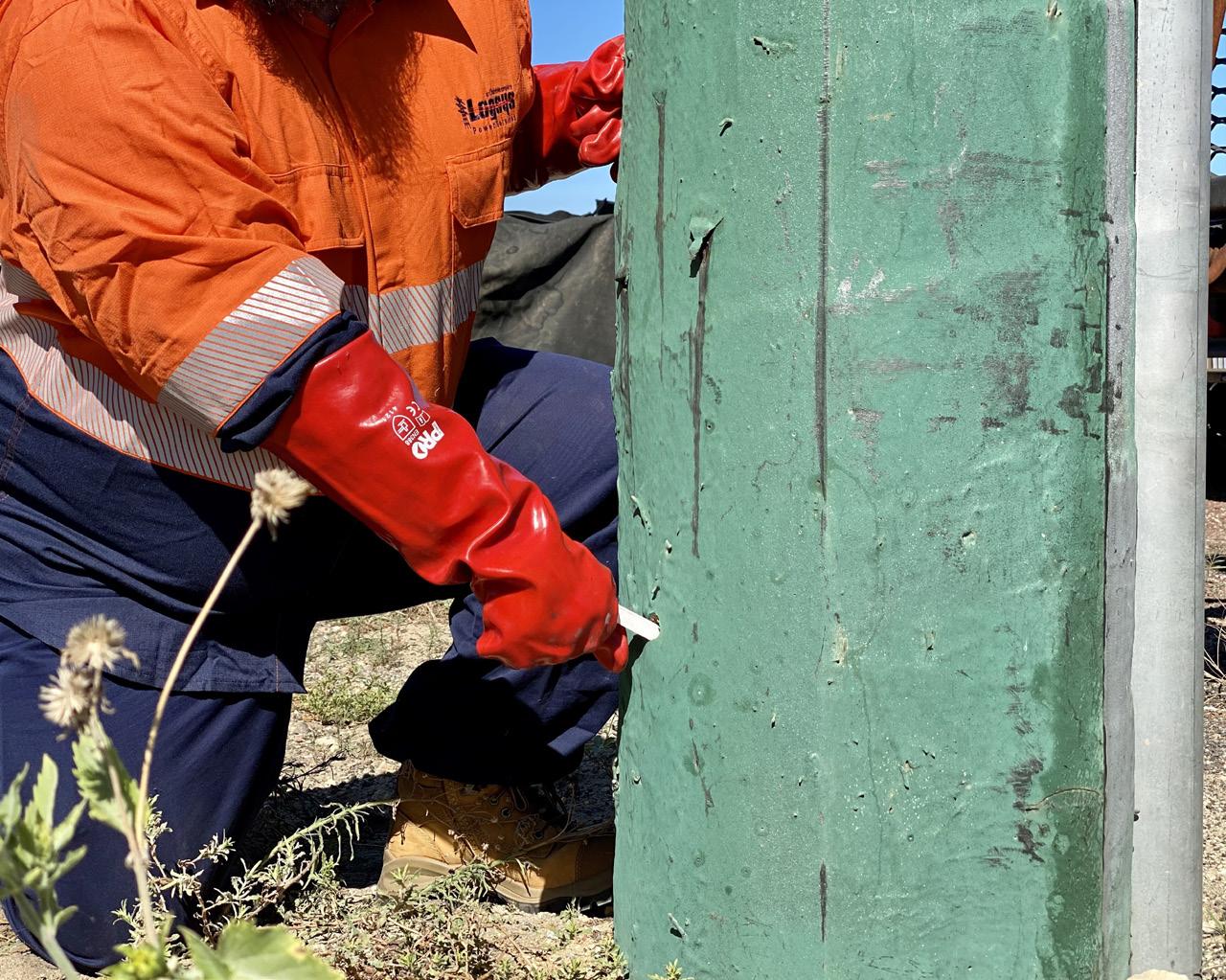

Using OsmoFume to protect your wood poles from internal decay provides benefits to your utility infrastructure through added resiliency and extended asset life.



OsmoFume meets the rigorous performance and toxicity criteria established by the Australian Pesticides and Veterinary Medicines Authority (APVMA Reg. No. 88348/120987).
First dazomet-based wood pole fumigant commercially available in Australia. Dazomet provides superior long-term benefits when compared to a diffusible rod.
Proprietary, stick design provides a controlled dose and sufficient space for a copper accelerant, like Hollow Heart CB Wood Preservative (APVMA Reg. No. 90556/129272). ®
the energy grids of NSW and SA, with an additional link to North West Victoria. ElectraNet is constructing the SA portion of PEC.
Clean Energy Council Chief Executive, Kane Thornton, said that PEC is a really exciting and necessary project that will help build a 21stcentury electricity network.
“A lack of transmission investment is now one of the most critical challenges facing the Australian energy system. This is stifling new generation investment, constraining existing generation and resulting in increased energy security and reliability risks as well as higher power prices,” Mr Thornton said.
“While it’s great to see Project EnergyConnect progress to this stage, the time taken to navigate the regulatory framework and the need for the CEFC to play a crucial role in financing is a stark reminder of the flaws inherent in the current regulatory environment.
“The pace of change in the energy transition warrants a major overhaul of the regulatory process for transmission,
particularly in light of the implications and importance to push ahead with the remaining transmission projects identified in the AEMO’s ISP.”
Energy Networks Australia (ENA) CEO, Andrew Dillon, echoed Mr Thornton’s concerns regarding the current regulatory framework.
“This commitment from the CEFC of a $295 million hybrid instrument has enabled TransGrid to manage financeability issues that threatened its capacity to proceed,” Mr Dillon said.
“The CEFC support is very welcome, but if the regulatory regime was delivering reasonable returns for major projects like this, it wouldn’t have been necessary.’’
AEMO forecasts that PEC will unlock as much as 1,800MW of renewable energy generation across Renewable Energy Zones, including approximately 800MW in SA, 400MW in NSW and 600MW in Victoria.
Importantly for energy consumers, PEC is expected to deliver estimated annual energy savings of about $100 to SA households and $60 to NSW householders. Businesses can also
expect higher savings, proportional to their energy use.
The enhanced grid is expected to drive competition in the wholesale electricity market by connecting more low-cost generation to the grid. Its location near identified renewable energy zones will support grid connection for future renewable energy projects as well as enable SA to increase the export of its renewable energy production into the national market.
By creating a second point of connection between SA and the NEM, the PEC will significantly reduce the risk of the SA grid being “islanded” or disconnected from the NEM.
Victoria’s Alcoa Portland aluminium smelter will also indirectly benefit from PEC, with an alternate interconnector from SA to the rest of the NEM enabling critical maintenance to be performed at the nearby Heywood interconnector.
Work on Project EnergyConnect is expected to commence by the end of 2021.
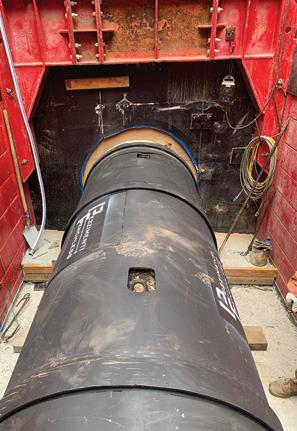


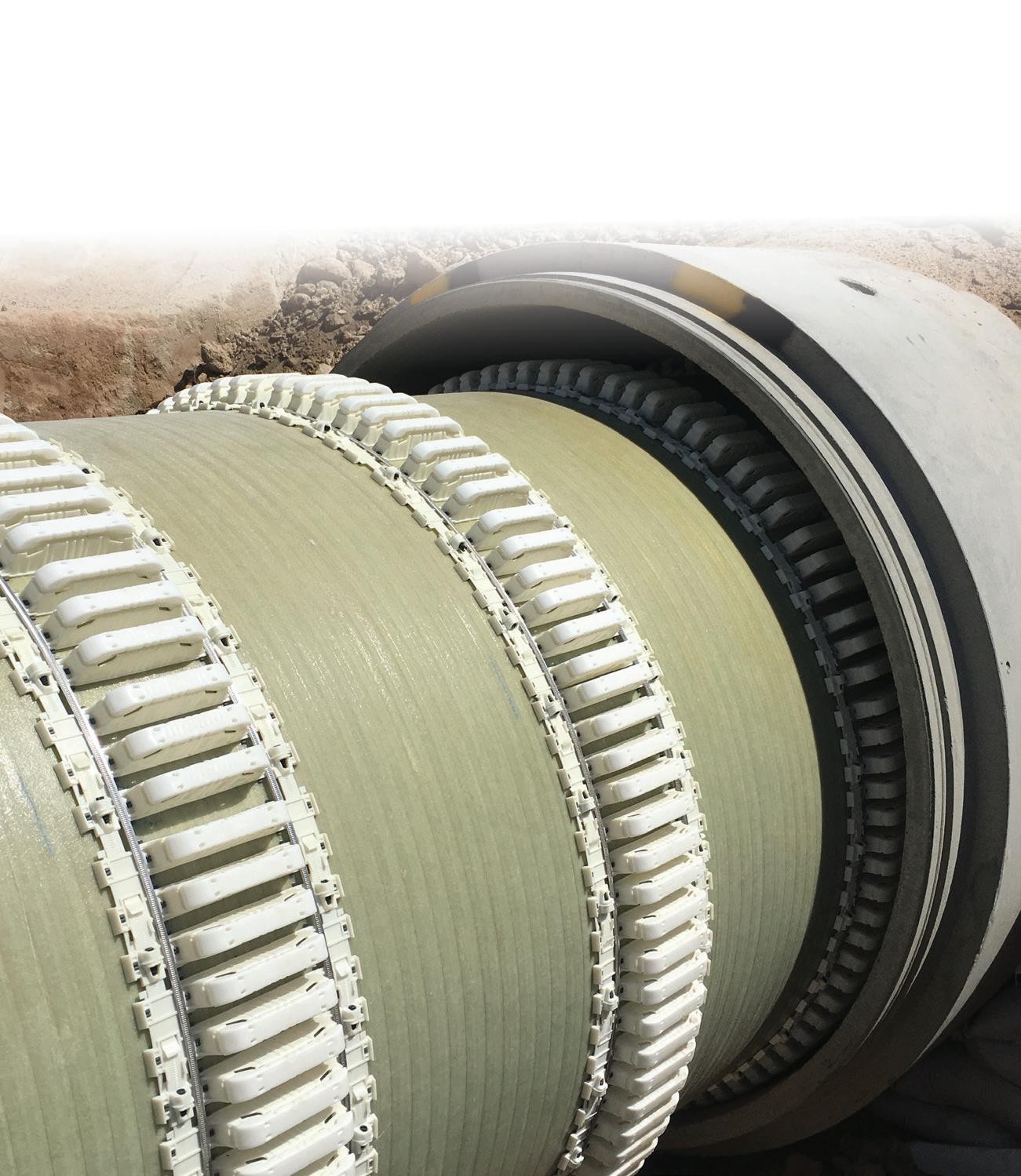


The Best Municipal Water for 2021 at the Berkely Springs International Water Tasting Event in West Virginia has come from a small regional town in Tasmania, which was once deemed unsafe for consumption.
The award went to Rossarden Water Treatment Plant in Tasmania’s Northern Midlands.
The global event judged water from five continents, 14 countries and 19 US states.
Significantly, this is the first time water from Australia has won the prestigious award, which is a major coup for the nation and the state.
TasWater Acting CEO, Juliet Mercer, said the international award was a testament to the hard work that went into the organisation’s 24glasses Regional Towns Water Supply Program, which resulted in the removal of all public health alerts on Tasmanian drinking water.
“Just over three years ago, Rossarden was under a Do Not Consume notice,” Ms Mercer said.
“A safe, clean and reliable water supply underpins the health and well-being of our communities, which was the driving motivation behind the 24glasses program.
“The program saw public health alerts removed from 29 Tasmanian towns and drinking water systems through the installation of 17 new water treatment plants, 16 reservoirs and more than 70km of new trunk mains.
“Seeing a town where so recently you could not even drink the water, now recognised as having the best drinking water in the world is an incredible result and is a great source of pride to TasWater.
“This global recognition reinforces that the standard of treatment processes we have implemented is truly world class.”
The Rossarden Water Treatment Plant is run in partnership with water utility services provider TRILITY, which built and designed the facility as part of TasWater’s 24glasses Regional Towns Water Supply Program Work Package One in 2018.
TRILITY Managing Director, Francois Gouws, said it was a great honour for Rossarden to take out the Best Municipal Water for 2021 in the world, against some high-calibre competition.
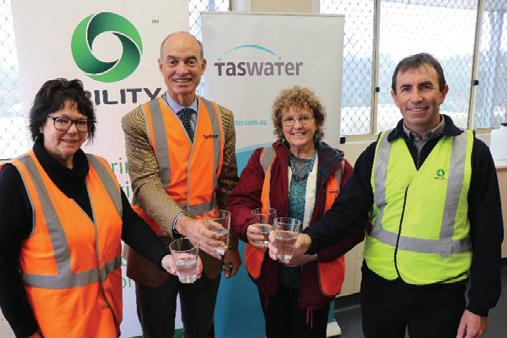
“This makes us very proud of our team of dedicated operators at TRILITY who put in a lot of work each week at these sites to ensure we are providing the community with great tasting, safe and reliable drinking water, which is leaps and bounds ahead of what they previously had access to in Rossarden,” Mr Gouws said.
The Water Industry Operators Association (WIOA) Chief Operations Officer, Craig Mathisen, said WIOA conducted taste tests across Australia before the top drops were decided to represent the country.
“This celebrates our unsung heroes – the water operators and their crews who, despite the impacts of COVID-19 and before that drought, fires and floods, ensure we have water which is essential to keep us alive,” Mr Mathisen said.
“Our members, including TasWater and TRILITY, work diligently to deliver high-quality drinking water to their communities.”
Tasmanian Minister for Finance, Michael Ferguson, congratulated TasWater on its success in transforming Rossarden’s water supply, with the achievement testament to the benefits of TasWater’s focus on removing public health alerts.
“Without investment in water infrastructure, the Rossarden area would still be facing a Do Not Consume notice,” Mr Ferguson said.
“The State Government’s $200 million much-needed capital injected into TasWater will accelerate its capital works program, allowing more Tasmanian households to benefit from modernised infrastructure over the next decade, just like the residents of Rossarden have.”
The international recognition acknowledges that TasWater is delivering great tasting, safe and reliable drinking water to Tasmanians at a world-class standard.


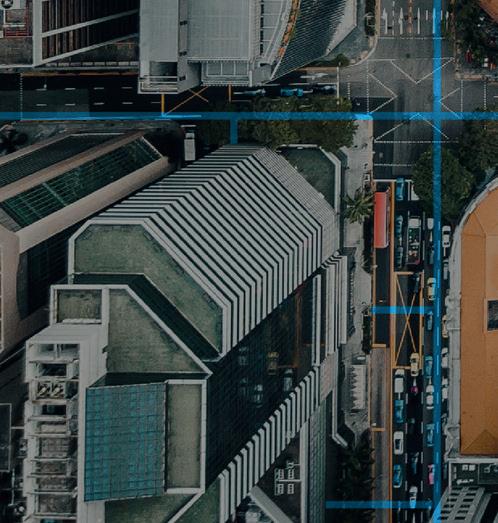





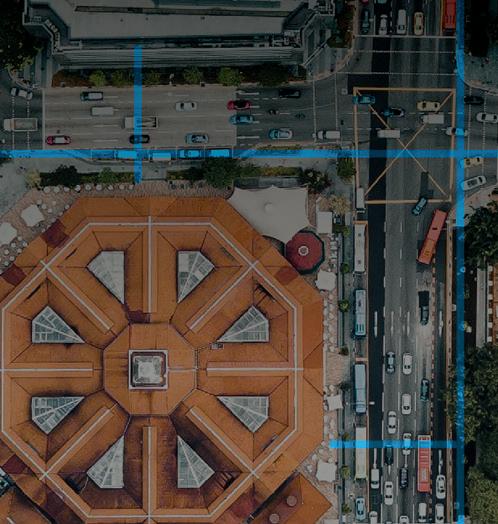

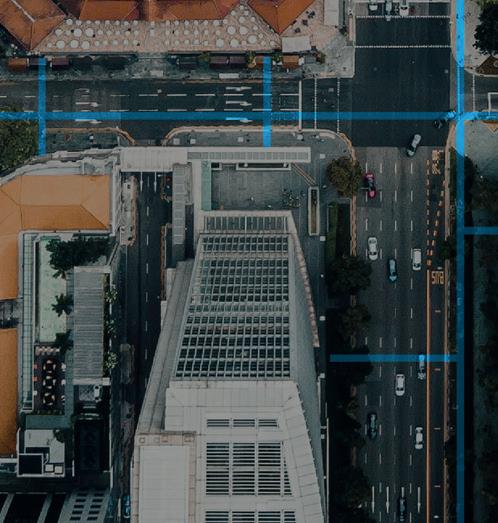



Industry legend Aurelio Pezzimenti, who invented the first prototype of a vacuum extraction microtunnelling system in his father’s garage, has passed away.
Aurelio Pezzimenti is the inventor of the world’s first microtunnelling system using vacuum power as the means to transport the spoil from the cutting chamber to the surface.
Thanks to Aurelio’s invention, the trenchless technology technique of microtunnelling was introduced into Australia, literally changing the way pipes would be installed forever.
In 1986, Aurelio and his brother Gilbert started Pezzimenti Laserbore, which was founded as a manufacturing company and commissioned and trialled the country’s first laser guided microtunnelling system in major sewerage projects around Melbourne.
After seeing how the rest of the world had embraced trenchless techniques, Pezzimenti Laserbore
became a founding corporate member of the Australian Society Trenchless Technology (ASTT).
Aurelio has continuously improved the capability of the system so that diameters up to 3m in material as hard as basalt can be tunnelled. In 2013, Aurelio was awarded ASTT Person of the Year for his dedication to developing an accurate, rapid and reliable microtunnelling system.
Pezzimenti Laserbore continues to focus on the design and manufacture of microtunnelling systems, with Aurelio founding Pezzimenti Tunnelbore, which operates in New South Wales, Queensland, the Northern Territory and Western Australia, as the contracting arm for the group.
Born in Italy, raised in Australia, gifted with a creative mind and the courage to pursue his vision, Aurelio Pezzimenti will be remembered as a true pioneer of trenchless technology in Australia.

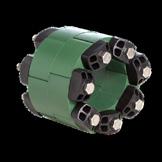

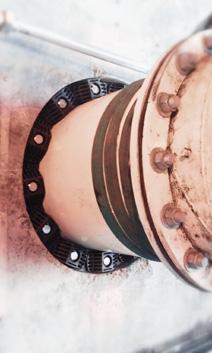

Link-Seal offer hundreds of solutions to seal pipe penetrations ranging in size from 10mm to 3 6 meters diameter
Link-Seal are suitable for most types of pipes including PVC, HDPE, Copper and Steel
Resistant to water, oil, gas, aggressive chemicals and fire
Projex Group helps calculate the right Link-Seal size and model for your application

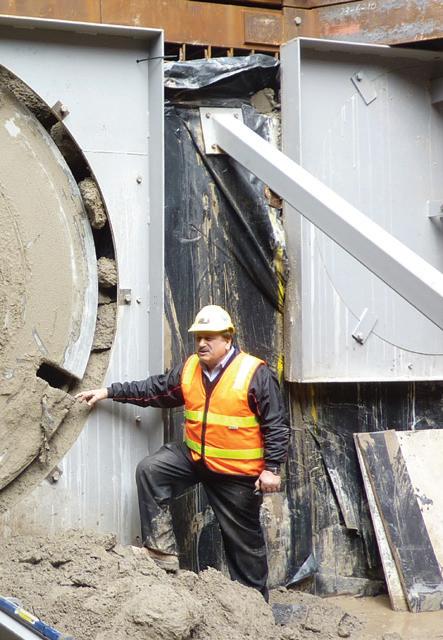




your leading source of news for the local government sector
Council has been developed to keep you up-to-date with all of the latest news, discussions, innovation and projects in the local government sector.


Council is fully integrated across print and online, featuring a website updated daily with the latest industry news, a weekly e-newsletter delivered direct to your inbox, and a quarterly magazine that can be read in print and online.
Published by industry publishing experts Monkey Media, Council will arm community decision-makers with the critical information they need to deliver a better future for cities, towns and suburbs all over Australia.


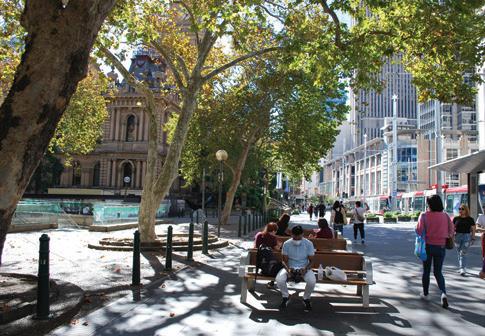
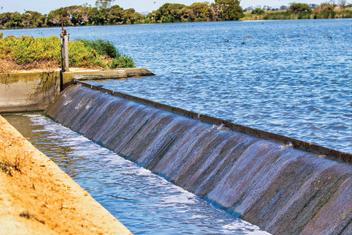
HEAD TO THE WEBSITE TODAY to sign up for the FREE WEEKLY NEWSLETTER!


www.councilmagazine.com.au
info@councilmagazine.com.au
Anew Board of Directors for Greater Western Water (GWW) commenced on 1 July 2021.
The GWW Board includes new directors and previous City West Water and Western Water directors, to ensure fair representation at a board level of both organisations, plus a mix of required skills.
The inaugural Chair will be David Middleton, who has been Chair of City West Water for the past six years and brings a depth of experience in the water sector.
The new GWW Board includes Western Water Directors Llewellyn Prain, Claire Filson and Liza McDonald, and City West Water Board Directors Bruce Cohen and Tania Fryer.
New members to the board include Matthew Burns, a proud Taungurung man and CEO of Taungurung Land & Waters Council, Efim Tkatchew, an experienced chief financial officer, and Linda White, a skilled lawyer with extensive board expertise.
In June, Maree Lang was announced as the inaugural Managing Director of GWW.
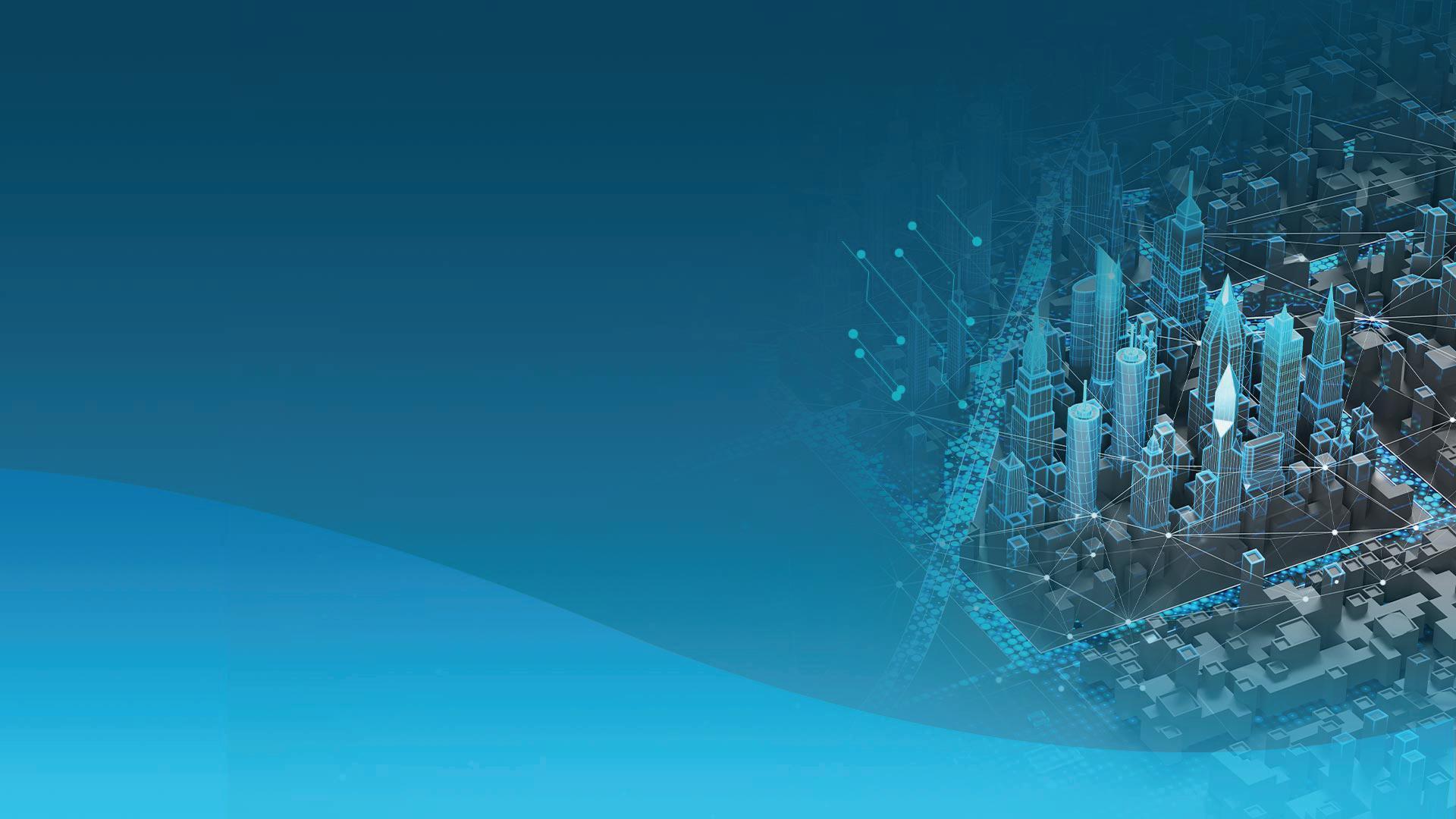
In welcoming the new GWW Board, Ms Lang paid tribute to those who have served on the Western Water and City West Water boards.
“I would like to acknowledge the outgoing directors of Western Water and City West Water for their contribution and commitment to the water sector,” Ms Lang said.
“In particular, I thank Andrew Cairns for his significant contribution as the Western Water Chair.
“I look forward to working with the new GWW Board. This team of highly qualified, dedicated directors will guide Greater Western Water through its early phases from 1 July 2021 and represent the diverse community of which they are a part.”
The selection process was overseen by an independent selection panel, chaired by former CEO of the Victorian Bushfire Reconstruction and Recovery Authority, Ben Hubbard.
Greater Western Water’s formation follows work by the Victorian Government, City West Water, Western Water and Melbourne Water to identify the best way to cater for population growth in the region and deliver high-quality, affordable water services.
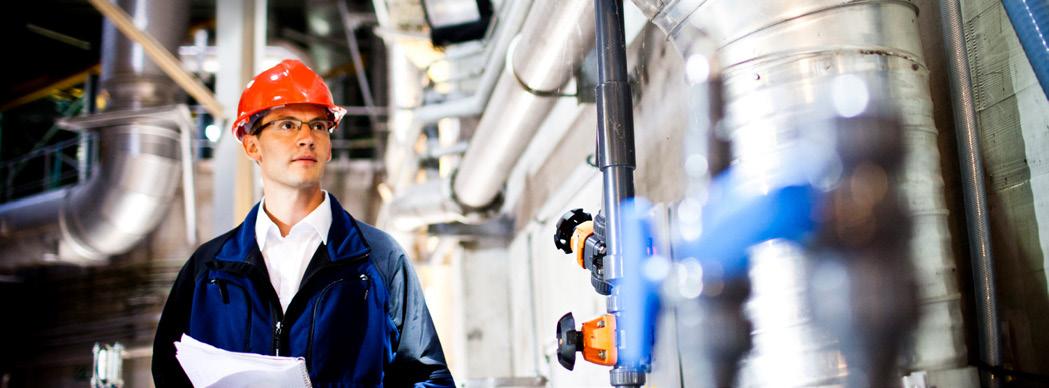
Through its innovative solutions, Veolia Water Technologies enables industry, local authorities and citizens to optimize their use of resources for more efficient, environmentally-friendly and socially responsible outcomes.
We understand the importance of increasing the value of water and we do so by supplying high quality water, treating and reusing wastewater, producing and/or recovering energy, extracting raw materials and capitalizing on valuable byproducts.
www.veoliawatertechnologies.com.au
© Veolia Photo LibraryPower Your Decisions with a Dynamic Digital Twin.
Info360.com is a SaaS platform that enables real-world water management workflows using the scalability and accessibility of the cloud.
To learn more contact an Innovyze water expert today.
+61 (0) 7 5506 5700
sales-asiapac@innovyze.com
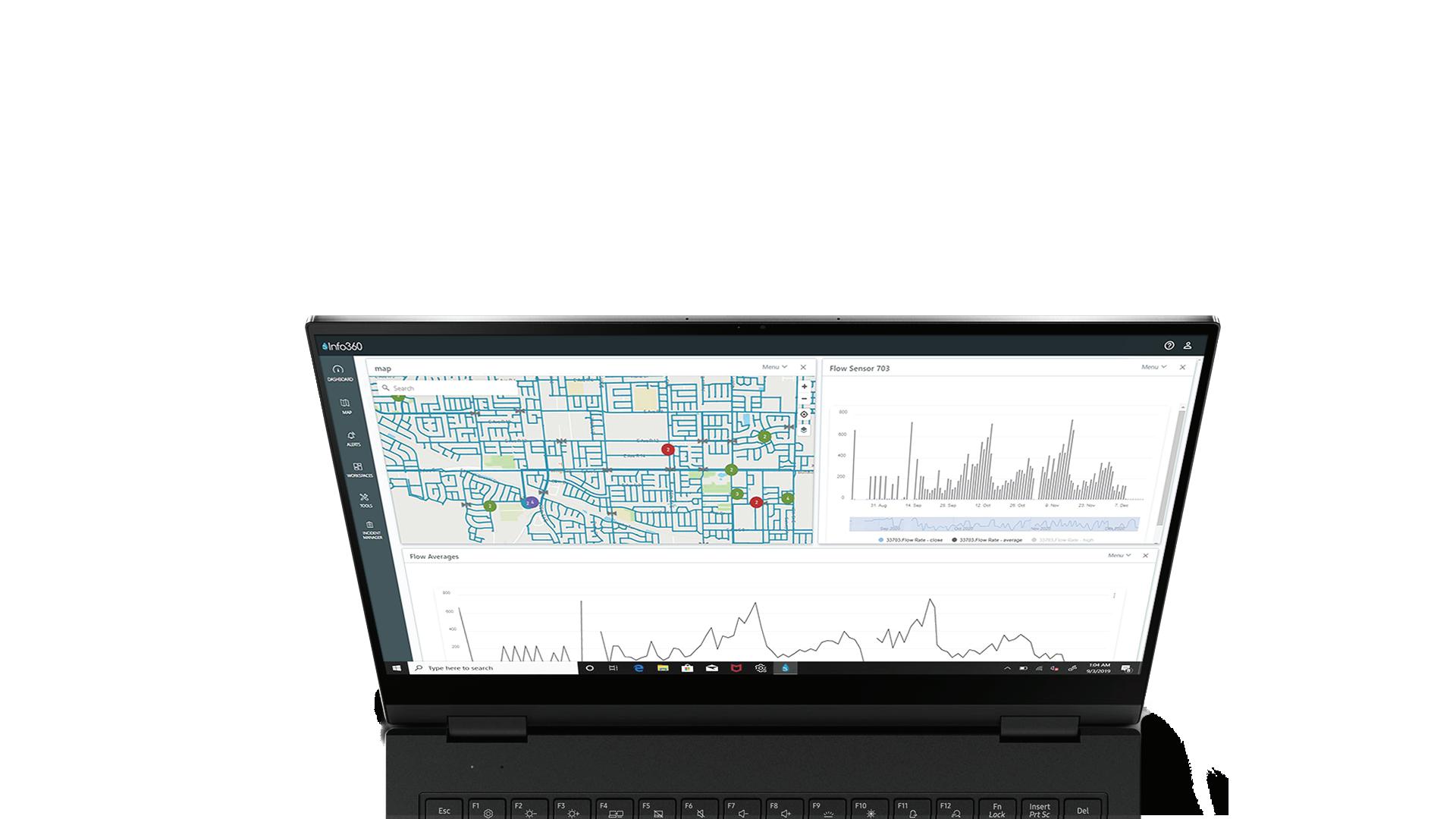


Finding the right scalable technology is crucial for the water industry to meet its challenges. Here’s how Intelligent Water Networks helps with this in Victoria.
Water corporations face common challenges –aging infrastructure, changing climates and population growth. But with daily operational demands, it’s not easy to dedicate time and resources to find scalable technology to solve these challenges and provide better outcomes for corporations and customers.
In Victoria, this is where Intelligent Water Networks (IWN) comes in. It represents 16 Victorian water corporations, acting as a collective safe sandpit for testing and trialling technology. IWN’s trials assess whether technology can solve common problems, drive business efficiencies and achieve better customer outcomes.
It also runs Champions – a two-year leadership program –to develop tomorrow’s leaders for the water industry through professional development, coaching and mentoring.
With IWN’s ten-year anniversary passing quietly in the blur of 2020, it’s time for an update. Here is a glimpse of IWN’s eight programs and what they are focusing on at the moment.
This program helps water corporations manage assets effectively and optimise performance with better tools and technologies.
It is currently working on a PumpCheckR2 trial with five water corporations to optimise pump station operational expenses. It is also trialling remote level sensor technology to collect height data and levels from streams, intermediate bulk containers, reservoirs and potable water tanks without having to attend a remote site.
This program assesses and runs projects to manage the pressing issue of biosolids.
It is working on a pilot plant to turn biosolids into biochar, which is a significant trial in partnership with RMIT and South East Water. The pilot is being held at a Western Water treatment plant. If successful, it will provide a pathway for the industry to turn waste into a usable, value-add product.
IWN’s unique role in trialling technology on behalf of the Victorian water industry also means it is well positioned to share information and introduce new innovations to the sector.
To this end, the program manages an annual conference, a popular monthly webinar series and other initiatives. It aims to not only share IWN’s work but to foster more collaboration and knowledge sharing across the industry.
Good decisions depend on good data and that’s what this program is about. It looks into technologies designed to better manage and analyse data, so water corporations can make cost-effective asset decisions.
At the moment, this program is working closely with ten Victorian water corporations on an automated sewer CCTV footage trial with the potential to reduce the manual review of this footage by about 85 per cent. If successful, the program will consider artificial intelligence options related to the trial’s findings.

This is IWN’s newest program. It aims to share knowledge and resources to support digital metering adoption across Victoria.
The team is working on a 2021 water industry State of Play report, showing where each Victorian water corporation is on their digital metering journey. It is also developing a state-based business case template and economic model for all IWN member water corporations to use and share their learnings.
As the name suggests, this program investigates new and emerging technologies on behalf of the Victorian water industry, avoiding risk and expense that might otherwise put individual corporations off trying these innovations.
One of its most successful trials to date is underway –using augmented reality headsets to support field workers. The headset connects into Zoom or Microsoft Teams so support staff in the office or elsewhere can see what the field worker sees and send them information. The field worker receives information and records data through the headset, hands free.
This technology was especially useful during 2020, allowing site commissioning to continue despite COVID restrictions. It has also worked well for inductions to high-risk sites and safety audits in remote locations.
This program focuses on developing a shared understanding of how the industry can reduce emissions, optimise energy usage and work together towards zero emissions.
At the moment, the team is looking at fugitive wastewater emissions, working with the Water Services Association of Australia (WSAA) on a report detailing measurement and reporting methods, process innovations and optimisation methods. This will be available for water corporations to inform work on mitigating fugitive wastewater emissions.
This program investigates new technologies to refine pipe replacement, reduce costs and minimise service interruptions.
It is currently testing a modular sewer monitoring solution that monitors levels, flow and hydrogen sulfide. The trial aims to provide information to the water corporation so they can detect issues early and deal with them proactively, reducing customer impacts.
IWN is a membership-based organisation, driven by the industry and the hard work of its Executive Group, Champions, Program Managers, deputies and working group members who all have jobs at water corporations.
To find out more about IWN’s programs, head to its website at iwn.org.au where you’ll find an interactive map showing the technology trials currently underway across Victoria.
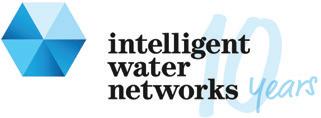

There are strict standards placed on the quality of water used for drinking and food production, and water with a high iron concentration can cause major issues including cloudiness and impaired taste. It’s therefore critically important that a treatment plant’s iron removal system is checked continuously – a process that can demand a great deal of time and resources.
An excessively high iron concentration in water can cause long-term sedimentation of iron particles in pipes and valves, which leads to a reddish discolouration of water. An iron concentration of 0.5 mg/l can be tasted by humans, but the actual limit value is 0.2 mg/l. If this limit value is exceeded, it needs to be dealt with immediately to prevent adverse effects.
In conventional systems, iron removal is achieved using oxygen or chemical dosing. Iron dissolved in water is oxidised and precipitates as metal hydroxide, and then filtered out with quartz sand.
When it comes to the monitoring process, one turbidity sensor is used for each individual filter. However, monitoring individual sensors requires a large amount of time and personnel, as it is carried out randomly for each individual filter line with the laboratory or handheld photometer.
A turbidity sensor does not show if the iron removal process is running successfully or if it is working with the optimum amount of oxygen or chemical dosage.
In traditional plants, the filter load must be monitored at all times and each individual filter checked, so it is difficult to find the optimal backwash time. Each individual sensor must also be cleaned and calibrated regularly, making the entire process time-consuming and not cost-effective to the plant’s operation.
With any laborious and expensive process in the water sector, utilities are turning to automation to reduce manual monitoring and costs. Automated sensors are highly beneficial for iron content because it is something that must be observed constantly to prevent the limit value being exceeded.
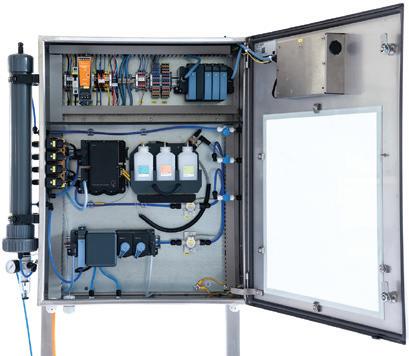
Bürkert’s MS06 flow injection analysis (FIA) sensor cube for iron content and online analysis system is helping to automate the process of controlling iron content and turbidity in raw water. The MS06 sensor cube uses state-of-the-art flow injection analysis to quickly detect excessive iron values in process water, monitor the load status of filters and react accordingly – with just one sensor able to monitor multiple filters.
It analyses the iron content in cycles, operates fully automatically and has extremely compact dimensions. Its flow injection analysis requires only a few reagents, making it economical, and the barcode-based reagent detection prevents misidentification.
It works by using high-precision microfluidic components. A sample is taken from the flowing medium, and a reagent is added. Then the sample and reagent are pumped through the system and mixed – the reaction forming a specific dye. The iron content is then determined through the photometric analysis of this dye.
In addition to the iron sensor, you can integrate sensors for pH, chlorine, chlorine dioxide, ORP, conductivity and turbidity, and in combination with Bürkert water sampling, just one sensor unit – consisting of the aforesaid sensors – can monitor up to eight sample water lines.
For more information, visit www.burkert.com/en.



Introducing the FILTEC UF 2/10D Membrane Skid – a pressurised ultrafiltration water treatment solution to help you make water safer in a cost-effective way.
Suitable for drinking water, process water and treated wastewater, this modular plug-and-play system provides an economic solution to many water treatment applications.
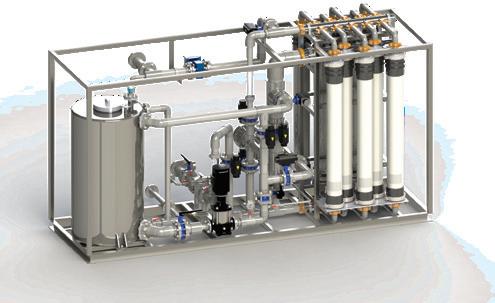
Based on the Suez ZeeWeed 1500 Membrane, the FILTEC UF 2/10D is delivered as either a skid-mounted package or containerised solution and provides you with a range of engineered filtration systems.
The FILTEC UF 2/10D also delivers an absolute barrier of 0.02 micron, screening out viruses and making it a true ultra-filter, and includes fully automated operations for
filtration, backpulse, scour aeration and automatic membrane integrity testing. Further features and benefits of the FILTEC UF 2/10D include:
• Adaptable to a wide range of flow rates from 2 to 10L/s (7 to 36m3/hr)
• Capable of receiving ground and surface water of up to 100 NTU with suitable pre-screen
• Fully automated backwash system
• Designed to meet New Zealand DWSNZ and Australian Drinking Water guidelines
For more information on the FILTEC UF 2/10D, contact Alan Tan on +61 413 844 308 or visit filtecinternational.com.au.
FILTEC is committed to making communities safer with advanced water and wastewater treatment.
With one point of accountability, FILTEC’s team of skilled engineers and in-house design experts can oversee large multidisciplinary projects end to end. Their fully integrated capabilities are backed with 25 years in the industry and a world-class service team.
FILTEC. Leading the way in advanced engineered systems and cost-effective solutions to water and wastewater problems.








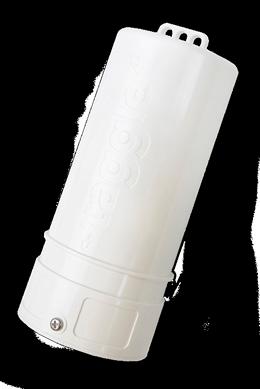
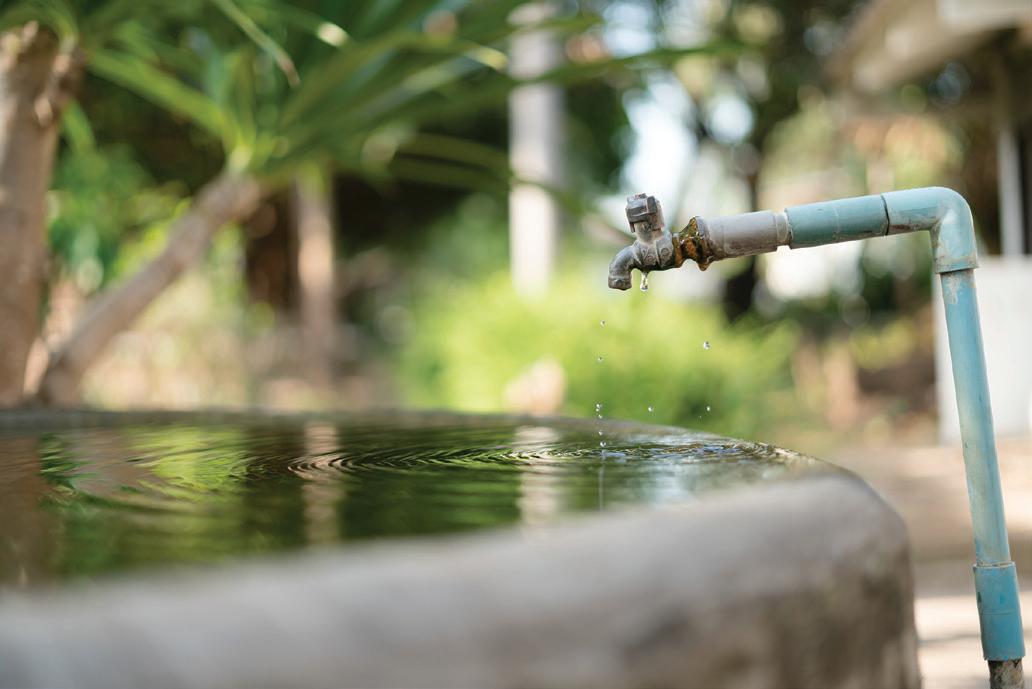
Barwon Water recently joined with the Birregurra community to celebrate the success of the first phases of the Birregurra Sustainable Communities – Water project, which has so far saved more than 11 million litres of water a year through leak detection and water efficiency.
The Barwon Water water efficiency team was in Birregurra on 21 May for an event at the Community Hall to thank the township and in particular a group of 39 property owners who signed up to be dedicated “Water Savers”.
The group actively tracked their household water usage and learnt how to be more water efficient inside and outside their homes.
Barwon Water General Manager Customers and Community, Jo Murdoch, said the Birregurra Sustainable Communities – Water project started last summer with the installation of 400 digital meters at residences and businesses in the town.
The meters helped identify 36 leaks and Barwon Water is working with property owners to have them fixed, so far saving an equivalent of about six Olympic-sized swimming pools.
At the same time, a new Water Savers group started actively tracking their household water use and learnt how to be more water efficient inside and outside their homes via ongoing engagement with Barwon Water.
“We were absolutely thrilled with the enthusiasm of our Water Savers who responded to the information about their water use positively and proactively, leading over time to average daily savings of about 40L per person compared to the rest of the Birregurra community,” Ms Murdoch said.
Some great examples included one household that reduced daily water consumption from 1,749L to 209L as the project progressed and another who brought their use down from about 1,200L to under 200L a day in the last week of the 12-week project.
Ms Murdoch thanked the Birregurra community for partnering with Barwon Water on the unique place-based approach to water saving. She also acknowledged members of Birregurra Community Group, Birregurra Sustainability, the Friends of the Barwon and Colac Otway Shire for championing the project.
“I’d like to extend particular thanks to our Water Savers Group who really embraced the Birregurra Sustainable Communities – Water project’s focus on behaviour change, leak detection and repair, and water efficiency measures,” Ms Murdoch said.

“Part of the Water Savers Group's success was making it fun and building on the strong local connections that regional communities enjoy.
“Participants enjoyed being able to view data about their water use online, through their own personalised MyH2O Dashboard, at any time of the day or night. A bit of friendly competition developed between participants to see who could save the most water.
“We also invited Birregurra customers to share their best water saving tip during the month of March to be in the running to win a great prize.
“Soon we will be supporting the Birregurra community to participate in a ‘Living Laboratory’ concept, which will incorporate short exercises and trialling new water efficient products to help us determine the amount of water that can be saved for both indoor and outdoor activities; think shorter showers, garden irrigation techniques and rainwater tank to toilet or garden set-ups.
“This place-based approach to water efficiency and water saving shows what’s possible when council, community, business and school leaders partner with the local water corporation to save our precious resource.”
Other highlights of the project to date have included a free WaterAssist Home program to help fix water leaks, a Water Hero program with the Birregurra Primary School, exploring opportunities with businesses for using Class C recycled water and water efficiency tips and information.
Most leaks are easily fixed, but even a small water leak of 5L per hour can add up quickly over time.
If not detected and repaired, this can result in water losses of 840L per week or 43,680L per year and an extra $90 on a customer’s water bill annually.
Ms Murdoch said that customers in Birregurra with leaks were booked into Barwon Water’s free WaterAssist Home program.
“The program includes a home water use assessment and a reliable, affordable plumbing service to repair or replace inefficient water fittings valued at $360,” Ms Murdoch said.
“Offering customers the support they needed to save water has led to significant water savings.”
In the first month of the digital meters being installed, some customers identified as having leaks turned out to be businesses with high water use, but Ms Murdoch said Barwon Water was making support available to them too.
“To help support our non-residential customers, our Business Water Grants are now available for businesses connected to drinking water,” Ms Murdoch said.
“Grants can be used for projects that improve water efficiency and/or achieve permanent water savings through substitution of drinking water, recycling of wastewater or other water efficiency improvements.”
The Birregurra Sustainable Communities – Water project is also exploring with the community opportunities to increase recycled water use for non-drinking purposes from its water reclamation plant.
Ms Murdoch said that Barwon Water is leaving no stone unturned to make better use of resources, reduce pressure on the potable supply and improve regional prosperity.
“Digital meters will likely play an important role in the future of water security and it’s important for us to explore new, innovative ways to help save and prolong our precious drinking water supplies.”
For further details on the Birregurra Sustainable Communities – Water project, visit www.yoursay.barwonwater.vic.gov.au/birregurra.
Acommitment to deliver a sewerage system in Gweedore, Co Donegal, was given as part of the Water Services Investment program in 2013 –predating the formation of Irish Water. Failure to address this and provide a collection system and associated treatment facility for Gweedore would have resulted in Ireland being prosecuted for non-compliance with Urban Wastewater Directive (UWWD).
Due to topography, ground conditions and the nature of the development, a conventional gravity collection system was impractical from an economic and technical perspective. Deep excavation in both rock and bog would present significant construction challenges and introduce a high level of program and cost uncertainty.
Maintaining pipeline integrity in these ground conditions is extremely difficult; and would pose risk of pipe settlement and water ingress with potential significant impacts on ongoing operational costs. All of the above, in conjunction with the complex land ownership patterns in the area, would also have precluded the connection of many properties to the network.
As such a challenge was issued, to identify a practical and implementable solution that could resolve the issue and was economically viable.
Mark O’Callaghan, Business Lead – Innovation, Standards and Technology at Irish Water, said, “We want to provide the highest quality service to our customers. The low pressure sewer system will allow delivery of a comprehensive collection system in Gweedore that was simply not practicable using a conventional drainage solution.”
A utility-to-utility conversation between Irish Water and South East Water, facilitated by Iota, highlighted details of South East Water’s PeninsulaEco (PenEco) project – globally the single biggest smart low pressure sewer scheme.
The benefits achieved by this project captured the interest of Irish Water’s executive team who saw it as a novel way to meet the challenges of the Gweedore Scheme, whilst also having the potential to address:
• Servicing of dispersed properties on the periphery of existing networks
• Where conventional networks are not considered viable
• Providing a very effective system that could be deployed to service dispersed communities and properties
Eamon Casey, Technical Director at Iota, said, “We have a culture within Iota – and more widely throughout our parent company, South East Water – to share learnings, insights and technology with our industry peers.
“Details of the PenEco pressure sewer system were highlighted and the alternative sewering method, along with the near real-time monitoring and control capabilities of OneBox®, posed a potential solution to many of the challenges being faced by Irish Water.”
Mr O’Callaghan added, “The proposed project in Gweedore hadn’t progressed any further than the feasibility stage at that point, due to the very difficult terrain and the prohibitive cost of a gravity sewer system.
“The option of a smart low pressure sewer, similar to the PenEco installation, opened up an opportunity for us that we hadn’t investigated previously. We also saw the attractiveness of having a smart system that could be remotely controlled and managed.”
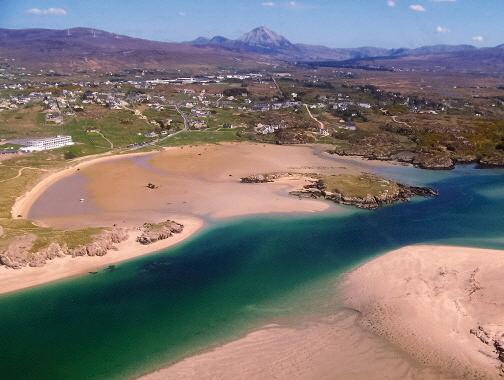
Irish Water engaged Nicolas O’Dwyer (NOD) Consulting Engineers to provide design and project management services on its capital delivery program, which included the Gweedore sewerage system.
NOD engaged Iota to deliver the detailed hydraulic design of a smart pressure sewer scheme for the township of Gweedore consisting of approximately 700 individual connections.
Residents in many rural areas in Ireland, like many other countries, rely on individual septic tank systems to provide treatment of wastewater. Gweedore is such a place located in a truly scenic area of County Donegal and characterised by dispersed development, along either side of a regional road. The surface geology of the area is dominated by blanket bog overlying shallow granite with protruding rock, and sands in the coastal area leading to a high water table. Not great territory for effective wastewater treatment with septic tanks, as was indicated by emerging water quality issues in the adjacent bay.
John Flavin, Associate Director at Nicolas O’Dwyer, said, “We saw the appeal of Iota’s smart pressure system, not only due to its simplicity and cost-effectiveness, but also because of cost estimates for a gravity sewer solution that proved uneconomic due to the difficult ground conditions.”
Iota designed the smart hydraulic sewer network based on South East Water’s learnings from the PenEco project, which is monitored and controlled by OneBox®
The feasibility study confirmed the appropriateness of a smart low pressure sewer for the project. Environment One Corporation (E/One) was awarded a tender to install and connect the initial 700 grinder pump units in Gweedore.
Amongst the benefits recognised by Irish Water in deploying E/One’s pumps with Iota OneBox® control system were:
• The capacity to identify and address issues before they impacted customer service
• Infiltration alarms through monitoring of run time
• Controlled flushing of the network to prevent solids deposition
• The ability to balance flows to treatment facilities
All of which have potential to impact favourably on both capital and operational costs, whilst ensuring a quality service to Irish Water customers and good environmental outcomes.
Derek Lachut, Director of Engineering at Environment One Corporation, said, “Irish Water wanted to maximise the functionality of the system. E/One’s industry-leading reliability and ruggedness coupled with OneBox® for command, control and communication will drive extreme customer satisfaction and ensure success of the scheme. The E/One and Iota solution is set to deliver this.”
The solution, which provides remote monitoring and control of individual sites and the network as a whole, will support Irish Water to provide a better customer experience; reduce operational expenditure by reducing the need for
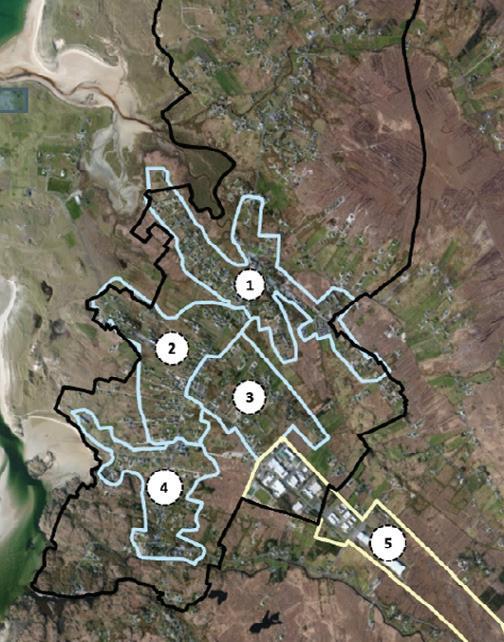
emergency on-site maintenance outside normal working hours; and avoid the risk of spills into the environment through near-real time alarms.
Irish Water expects to realise a reduction in the project capital expenditure due to an optimised network. It is designed to manage flows and utilise individual units across the network as additional storage capacity in high flow events, for example after power outages or storm events. This ultimately allows for smaller diameter pipes throughout the system.
“Further capital savings are realised through reduced construction costs due to shallow trenches or trenchless installations and no requirement for major pump stations,” Mr Lachut continued.
The Gweedore project has now commenced, with the first 42 homes and two commercial properties in the rollout due to be completed in the coming months.
In 2014, True Water designed and installed the Kubota Sewage Treatment Plant (STP) for the Toowoomba Wellcamp Airport and Business Park, the largest private infrastructure project in Australia. With the increasing capacity of the airport and the ongoing development of the business park, True Water has been asked to facilitate the expansion of the sewage treatment system.
As part of the initial site-specific design, True Water included the ability to stage the expansion of the wastewater facility in line with the future growth of the project. The infrastructure was designed to treat the sewage and wastewater generated by the large-scale industrial community as it continues to expand.
This is possible due to the scalable nature of the Kubota STP – additional modular systems can be added with minimal disturbance to the facility and with no impact on the daily operational function.
The expanded system will have the ability to manage wastewater flows of up to 250kL/day. The treated water is then gravity fed to a treated water (effluent) tank prior to transfer to an agricultural irrigation scheme.
Durability, reliability and longevity were key project objectives. The Kubota STP employs biological treatment to manage the highly variable flows and concentrations generated by the business park. The biological moving bed biofilm reactor (MBBR) process utilises a gravity flow path to provide high-quality treatment even during power outages.
Being located next to the airport it was important to provide a compact and unobtrusive system. The below ground installation ensures no odour and minimal visual impact, while improving the infrastructure lifecycle.
The airport was completed by Wagners Corporation in 19 months and is designed to cater for large jets up to the size of a Boeing 747, facilitating the movement of the largest
freight aircraft in and out of the region. The capacity of the airport has continued to expand, particularly in its role as a major inland freight hub and the home of Australia’s first QANTAS Pilot Academy.
Wellcamp Business Park is a highly attractive business destination with wide landscaped streets, parklands and firstclass presentation of buildings. The business park has also seen immense growth, including multiple large workshops and factories, a major milk processing plant, RSPCA depot and micro breweries.
Throughout this time, the Kubota STP installed by True Water has continued to operate at a high level. True Water has continued to work closely with Wagners to ensure the ongoing compliance of the sewage treatment infrastructure at Wellcamp. Due to the high-quality Japanese treatment technology utilised by the plant, the system has maintained a very high level of treatment.
The simplicity of the Kubota MBBR STP ensures continued low overheads and easy to manage operation and management of the infrastructure. True Waters maintenance team service the system regularly and coordinate with Wagners to keep all components looking like new and running at their optimum.
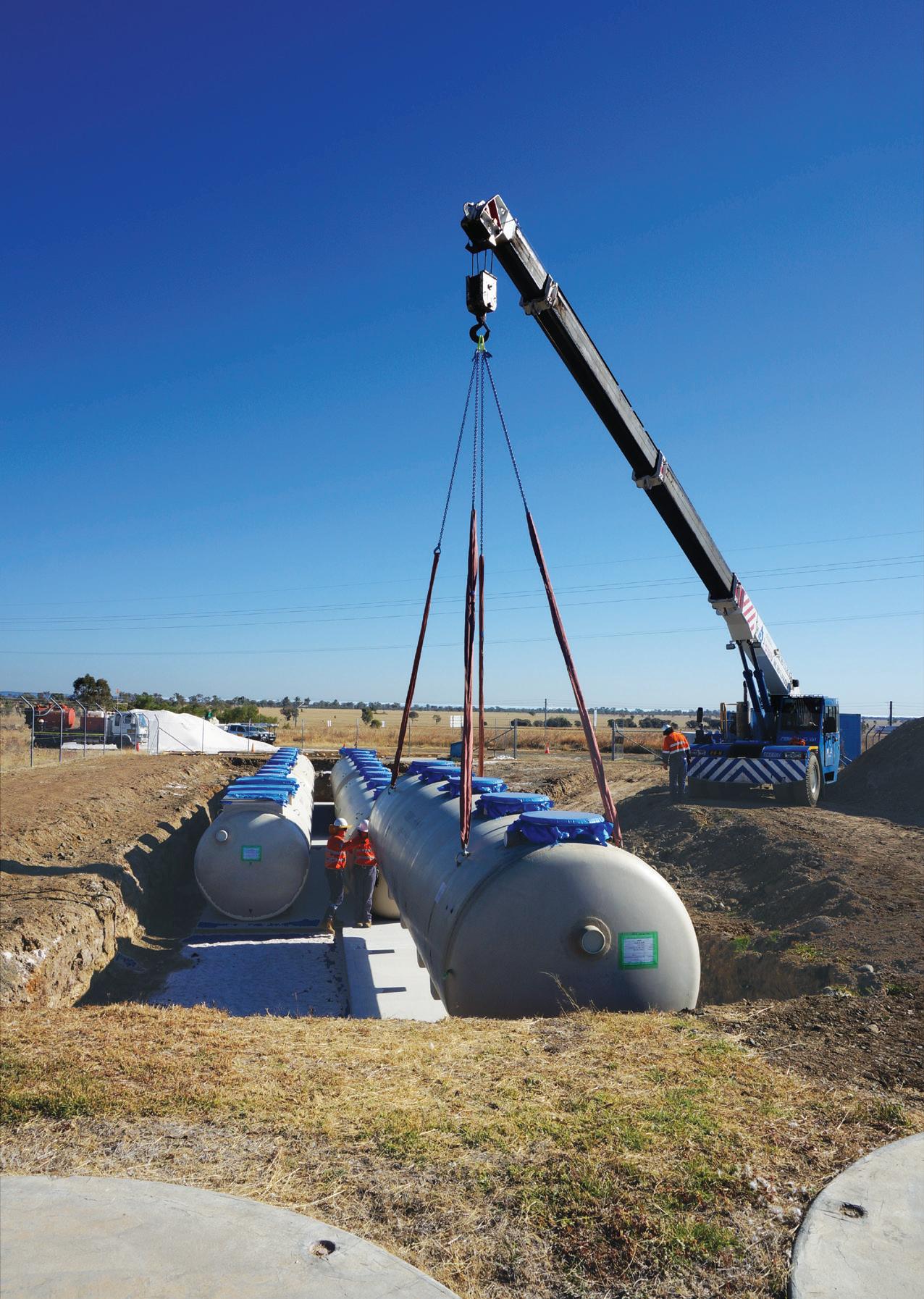

PROVIDING SOLUTIONS FOR:
• Municipal Sewage Treatment
• Commercial & Industrial Estates
• Government Projects
• Residential Developments
• Urban Subdivisions
• Resorts & Caravan Parks
• Mining Accommodation
• Airports & Infrastructure
• Service Stations
• Defence Assets

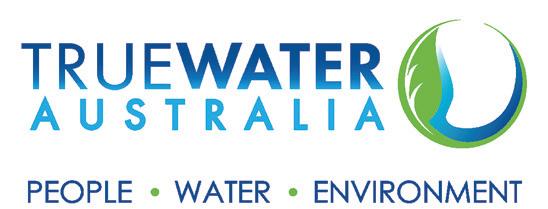

The Flusher is an innovative system that utilises the potential energy from the flow within the sewer to clean it. This outline is extracted from a case study undertaken by Atkins Global to assess the effectiveness of the Flusher units theoretically, using infoWorks CS.
The Flusher units have been simulated in InfoWorks CS using the Real Time Control (RTC) functionality. The assessment has been undertaken on an example 225 sewer prone to siltation at four separate locations. The sewers where silt occurs have been laid at gradients of less than 1 in 300, while the average gradient of the whole branch is approximately 1 in 120. The study investigated the effects of locating the Flusher unit at five locations in the system and assessing the results.
Under a dry weather flow, the greatest increase in velocity occurs immediately upstream of the Flusher unit and within the first 500m downstream. However, the units are responsible for an increase in peak velocity for up to 4km downstream. Furthermore, the increased velocity would be repeated for every operation of the Flusher unit which could typically be more than 50 times per day depending on the characteristics of the catchment.
It was predicted that the Flusher will operate approximately 64 times in a day under dry weather flow conditions, therefore improving flow conditions by eliminating silt build ups.
A passive gate device for controlling and maximising hydraulic flow in sewers
• Reduces operational costs
– No more water jet sewer cleaning
– No more Silt & Debris removal
– Less surcharge & blockages
• Installed in Maintenance Holes
– Easy to install
– Easy to maintain
– For DN150 to DN450 sewer pipes
• Resistant to rag jamming and blocking
• Inherently “fail safe” during storms
• Data Logger and Telemetry Module
– Know what’s happening and when
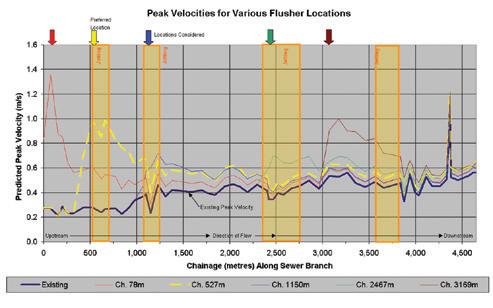
The steps in assessing the benefits of a Flusher:
• Review historic and ongoing jet cleaning costs
• Undertake a hydraulic performance assessment of the location
• Consider the effectiveness of various Flusher locations
• Assess potential upstream surcharge risks
• Evaluate downstream benefits
• Develop a monitoring plan
A cost-benefit analysis can be completed once the above information has been sourced, assessed and evaluated.



+61 418 691 989
6/58 Box Road, Taren Point NSW 2229 Australia
enquiries@aussietrenchless.com
www.aussietrenchless.com



WTW IQ Sensor Net digital monitoring system for water and wastewater combines many innovative features to provide you flexibility, reliability and durability in continuous monitoring. It is designed and built to last, providing you with many benefits and guaranteeing the quality you choose today will remain long into the future.
Our innovative digital Plug & Play system is suitable for installations of all sizes, making connecting and hot-swapping a breeze. What’s more, the network flexibility of our modular system means you will save on equipment, cable, and installation costs.
The IQ Sensor Net is available with controllers suitable for one, all the way up to 20 sensors, and is easy to install, operate and maintain. Providing a wide range of measuring parameters for both water and wastewater, the IQ Sensor Net offers multiple output options including 4-20mA, Modbus, Profibus, and EthernetIP - as well as an optional built-in web-server for remote access.
Rugged, reliable, and requiring low maintenance, the WTW IQ Sensor Net is the perfect solution to your water quality measuring needs.

Industry leader in pipeline infrastructure, Interflow, is excited to announce the launch of RediFlow®, an advanced Pressure Water Main Renewal System that takes efficiency to the next level.
As thousands of kilometres of asbestos cement pipes reach the end of their service life across Australia and New Zealand each year, asset owners are seeking low impact, affordable ways to renew their water infrastructure.
A company that continues to push the boundaries of pipeline innovation in pursuit of meeting its customers’ water infrastructure needs is Interflow. Working with researchers, specialists and engineers, the organisation has developed a game-changing water main renewal system called RediFlow® . This methodology combines exclusive Titeflow® H112 and patented Infrastop® technologies into one synergistic process, providing an ‘all-inone’ package for renewing ageing water main pipelines.
Traditional shutdowns using network valves are disruptive, impacting hundreds of customers at any one time. Rediflow’s Infrastop component can greatly reduce the number of impacted homes by isolating only those pipeline sections specific to the works being delivered.
Infrastop® is a temporary under-pressure fitting that immediately stops flow within a watermain. It only requires a small excavation and can be rapidly installed and operated within 90-minutes, without interrupting supply to consumers upstream.


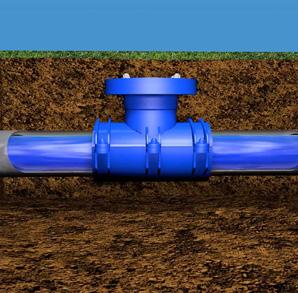
With Infrastop® in place, Interflow’s Titeflow process then installs a new tight fit HDPE pipe into the host pipe. This snug-fitting technology uses H112, an internationally recognised, high quality, high strength PE100 compliant resin that is specifically designed for pipe applications.
The Titeflow pipe is towed under tension through a static die, reducing its diameter and allowing it to pass through the host pipe. Once it is in place, the pulling load can be released. The liner pipe increases in diameter, fitting tightly inside the host pipe.
The liner is then connected to the main, new service tappings are installed, and the Infrastop® plugs are removed, leaving the offtake in place and the community’s water supply ready to use.” Learn

RediFlow ®: changing the game for water mains
Learn
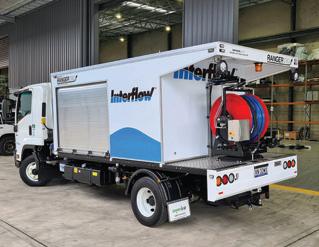
Enviroline has been manufacturing market-leading drain cleaning equipment for the past 15 years, and the SEWERJETT™ T80 truck mounted jetting system has been stealing the show in recent months.
With so many utilities, councils and contractors looking for a safe



and efficient way to keep sewer and stormwater assets maintained, Enviroline decided to develop the perfect water jetting system.
After extensive market research, Enviroline discovered that the industry is looking for a safer, more efficient and sustainable solution.
Fitted with the cutting-edge control system, these trucks are amongst the safest units on the market with many standout features such as hose burst detection which detects a burst and shuts the unit down within 500 milliseconds in the event of a failure.
Operation is also made more efficient and simplistic with the automatic flow and pressure regulator, allowing the operator to precisely preselect a water flow or pressure.



Remote diagnostic is now also possible, allowing Enviroline engineers to remotely log onto any truck to quickly diagnose or troubleshoot. Software updates can also be sent over the network, keeping the units up to date into the future.
Enviroline has chosen the popular Isuzu FRR110-260 fitted with the 2500 series Alison Automatic gearbox as its chassis of choice. The Isuzu platform has proven to be extremely reliable with outstanding backup Australia wide.
Enviroline has been working with Interflow to continually advance the safety and efficiency of its fleet and decided the SEWERJETT T80-160 jetting truck best suited these requirements.
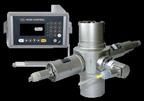





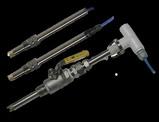



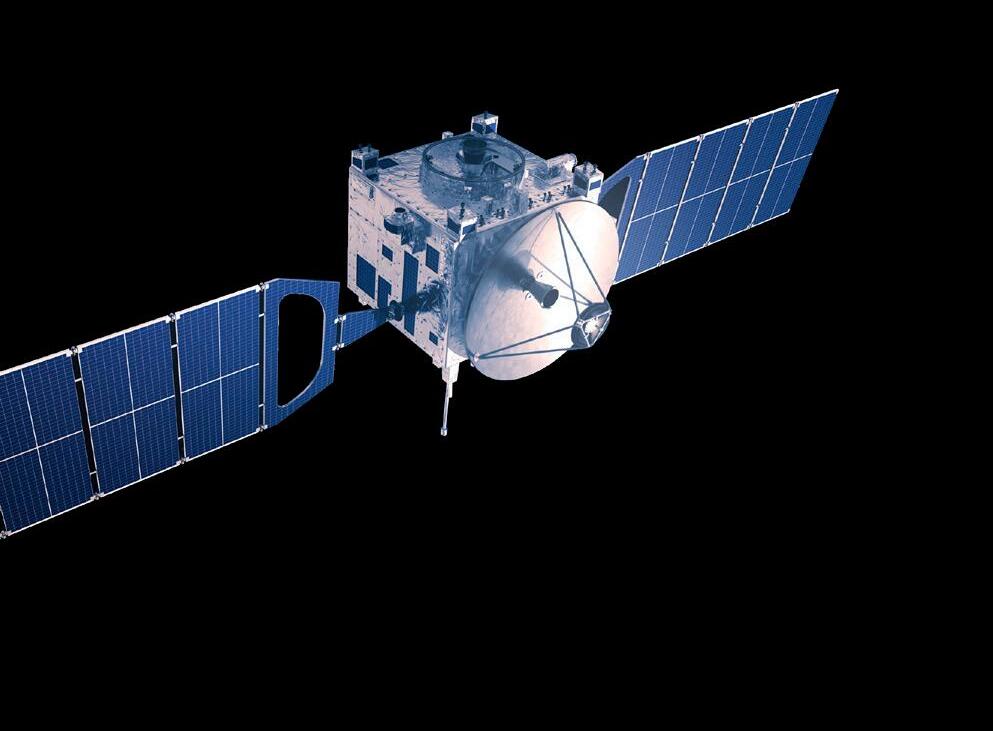








Stormwater is rainwater that runs off impervious or saturated surfaces in the urban environment, such as roofs, roads and pavements, and green spaces. In an undeveloped environment, natural vegetation allows for rainwater to infiltrate soils, allowing for transpiration by vegetation and evaporation into the atmosphere. The concrete jungles of Australia's cities generate enormous volumes of stormwater, which has significant environmental consequences for the waterways that receive it. Stormwater harvesting can also help save hundreds of millions of litres of drinking water each year by providing an alternative water supply and play an essential role in the development of thriving green spaces for community use.
Stormwater can carry pollutants including litter, soil, organic matter, grease, oil and metals collected from roads and properties, and fertilisers from gardens, with stormwater run-off cited as the primary cause of urban waterway degradation.
In addition to negatively impacting stream ecosystem health, altered flow regimes and poor water quality as a result of stormwater run-off can render urban waterway restoration efforts largely ineffective.
It’s also important to note that when excess water falls on impervious surfaces, it runs rapidly rather than soaking gradually into the earth. This can cause flooding, erosion and infrastructure damage if not managed properly.
While stormwater clearly harms the environment, it is also a resource that is not being utilised to its full potential.
Stormwater has a range of non-potable applications in urban environments, including toilet flushing, garden watering, car washing, industrial uses, open space irrigation, ornamental water features, fire fighting, environmental flow provision and groundwater recharge.
With appropriate treatment, stormwater can also provide a supplementary potable water supply; however, there are a number of barriers that significantly limit the potable use of stormwater in Australia and overseas, the most important being:
• Limited understanding of the hazards of utilising urban stormwater as an alternate water source. In particular, there are very few datasets that have quantified the levels of pathogens and chemicals of concern to human health in stormwater
• Minimal knowledge on pathogen and chemical removal in low-energy and affordable stormwater treatment systems that are based on the principles of water sensitive urban design
• Non-existent validation procedures for these types of stormwater treatment systems
The traditional model of stormwater management aims to drain urban run-off as quickly as possible with the help of channels and pipes, which only increases peak flows and the costs of stormwater management.
New technologies for stormwater management have been in existence since the 1970s and include detention and retention basins, permeable surfaces, infiltration trenches, surface and subsurface groundwater recharge, and other control measures.
A number of utilities and councils are trialling innovative technologies and adopting local stormwater management projects, which offer the opportunity to improve the health of the surrounding waterways while providing secondary benefits to communities, such as increasing water security and reducing peak summer temperatures.
Melbourne Water is one utility working with stakeholders and the community to minimise the negative impacts of stormwater and improve the habitat, ecology and amenity of local waterways.
Dandenong Creek is one example, with long-term investigations showing that the primary stressor on the creek’s health was pollution from nearby industrial areas and residential stormwater run-off.
Rather than undertake a conventional sewer upgrade to manage the risk of overflows into the creek, Melbourne Water worked with the EPA to investigate alternative ways to improve water quality and deliver measurable on-ground benefits.
The Enhancing Our Dandenong Creek project was designed to improve amenity and liveability, reduce stormwater pollution, create habitats for native fish, and manage the impact of non-compliant wet weather sewage outflows into the creek.
The pilot program identified the real opportunities to establish programs, new monitoring technologies and a way of working together that over time, will ultimately improve water quality, and protect ecosystem health and public health and safety.
The pilot project ran from 2013 to 2018, and saw $15 million invested over five years in significant works, including:
• Revitalising 12 billabongs and wetlands along the creek corridor
• Removing 830m of drainage pipe to ‘daylight’ and naturalise the creek
• Planting more than 69,000 plants in billabongs, wetlands and the naturalised section of the creek
• Conducting live pollution monitoring at 32 sites with data loggers
• Constructing 20 fish habitats, including breeding areas
• A fish stocking program and reintroduction of two threatened fish species
Now in its second phase, the project demonstrates an innovative and collaborative approach to meeting sewage containment obligations – creating an opportunity to do things differently and achieve greater outcomes for the community.
This commitment to working with the community was recognised at the 2019 Stormwater Victoria awards, with the water provider a joint winner of the Excellence in Research and Innovation category for the Enhancing Our Dandenong Creek project.
The Stormwater Victoria honour capped off a series of accolades for the project, which also won two national Australian Water Association awards in 2019.
Melbourne Water also claimed the 2019 Stormwater Victoria award for Excellence in Strategic and Master Planning for the Chain of Ponds Collaboration – Transforming the Moonee Ponds Creek Through Collective Action – a project that is breaking new ground in how Melbourne Water delivers waterway management.
The Moonee Ponds Creek catchment is one of Melbourne’s most urbanised and modified creek systems. Significant issues persist across the catchment, including poor water quality, introduced species, habitat fragmentation, minimal expansion of the creek corridor through land acquisition, limited linkages to other open spaces, poor stormwater management, litter, restricted public access and movement, poor urban design outcomes, and fragmented management and decision-making.
Rather than sole organisations trying to implement another plan for a creek, this collaboration has established a new partnership model between organisations and community to drive change in a catchment which supports a healthier waterway.
In October 2018, a historic agreement to help transform the Moonee Ponds Creek was signed by 15 organisations to commit to the Chain of Ponds Collaboration and work together in finding lasting solutions for the catchment, which will transform the Moonee Ponds Creek into an iconic waterway for Melbourne that provides high social and environmental benefits.
The organisations who signed the Memorandum of Understanding include the City of Melbourne, City of Moonee Valley, Hume City Council, Moreland City Council, City West Water, Yarra Valley Water, the Victorian Planning Authority, Parks Victoria, Conservation Volunteers Australia, Kensington Association Living Colour Studio, Moonee Valley Bicycle User Group, Friends of Moonee Ponds Creek and Friends of Upper Moonee Ponds Creek.
The project recognises opportunities within the broader creek catchment (offline) and those which operate more directly on water within the creek itself (online).
Offline initiatives operate on stormwater within the broader creek catchment which can have an impact on the health and operation of the creek. Strategies to manage stormwater runoff and quality prior to the water entering the creek itself include:
• Catchment Scale – through water harvesting and wetland opportunities
• Street Scale – canopy trees, permeable surfaces and raingardens
• Lot Scale – water tanks and permeable surfaces
Online initiatives manage water quality and flows once the water has entered the creek. These ideas operate directly on the physical form and function of the creek itself and include:
• Flow control and water aeration – through weirs, rifle choke points and channel materials
• Creek profile – through terracing, benching utilising different materials for increased community connection and ecology outcomes
• Landform – utilising adjacent landform in order to detain water before it enters the creek, to recharge water tables, improve soil condition and provide landscape opportunities to increase social connection and habitat value of the landscape
While individual options can be pursued in isolation, the potential for significant improvements in creek health is only achieved when multiple options across both the catchment (offline) and the creek (online) are considered in unison.
The collection, treatment, storage and use of stormwater is referred to as stormwater harvesting.
The regional city of Orange – located approximately 260km west of Sydney in the Central West of New South Wales – has been able to demonstrate that despite the lack of existing regulation or guidance, stormwater can be harvested and used safely for potable supplies.
Water supply in Orange was provided by two water storages which captured runoff from predominantly rural catchments. While Orange has a relatively high annual rainfall compared to surrounding areas, its location at the top of the catchment limits the volume of water that can be captured.
By late 2007, the city’s water storages were below 40 per cent and significant resources were directed to reduce water consumption. By August 2008, the combined water storage level reached 26.7 per cent and dropped to its lowest level of 23 per cent in May 2010. It was therefore critical that alternative water supplies were identified and used to augment the city’s water supply.
Piped stormwater flows from over half of the Orange City urban area originally drained to Blackmans Swamp Creek downstream of Suma Park Dam, with the remaining urban areas draining to Ploughmans Creek.
A detailed hydrological model showed that 15 to 30 per cent of the city’s annual water needs could potentially be gained through stormwater harvesting from Blackmans Swamp Creek.
The Blackmans Swamp Creek stormwater harvesting solution was also economically viable due to:
• The close proximity of Blackmans Creek Swamp to Suma Park Dam
• The availability of key infrastructure including road access, power and an existing pipeline between the creek and Suma Park Dam
• The very high level of treatment provided by Council’s water treatment plant which already treats the raw water from Suma Park Dam including the use of ozone treatment and biologically activated carbon filtration
• The regularity of flows in Blackmans Swamp Creek (average of 53 rainfall events a year which can be harvested)
The Blackmans Swamp Creek stormwater harvesting scheme involves some catchment pretreatment – via two large Gross Pollutant Traps – before flows are harvested from the rock and gabion weir and transferred to a 230ML holding dam. The stormwater is then treated in batch ponds to meet target water quality criteria before being piped into Suma Park Dam to be treated with the other stored water for potable supply.
Following the success of the Blackmans Swamp Creek stormwater harvesting scheme it was expanded to include the Ploughmans Creek stormwater harvesting project. This project involved the retrofit of four stormwater treatment wetlands into existing urban areas before flows are harvested and transferred to the holding dam already used for the Blackmans Swamp Creek stormwater harvesting scheme.
The combined average harvesting potential of both of these projects is 1,350ML/year with 850ML provided by Blackmans Swamp Creek and up to 500ML provided by
Ploughmans Creek. This equates to approximately 25 per cent of Orange’s annual unrestricted water demand.
The Blackmans Swamp Creek and Ploughmans Creek stormwater harvesting to potable schemes received permanent approval in April 2015, almost seven years after the Blackmans Swamp Creek stormwater harvesting scheme was first approved under emergency authorisation.
Since the construction of the Blackmans Swamp Creek and Ploughmans Creek stormwater harvesting schemes, the council has also been investigating the best use of its stormwater through the use of a dual pipe plumbing system.
Dual pipe systems are becoming more common in new residential developments across Australia to reduce the consumption of drinking water and make the most of all water sources.
The dual pipe systems have been included in all houses built in the Ploughmans Valley and North Orange area since 2005 and since December 2017, have been allowing residents to use stormwater collected from the city’s wetlands and stormwater harvesting schemes to irrigate their gardens and flush their toilets.
As part of its Integrated Water Management program, City West Water [now Greater Western Water] is also working with its customers and community to develop impactful projects that promote sustainable water management and reduce demand on drinking water supplies.
Owned by the Victorian Government, City West Water provides drinking water, trade waste and recycled water services to Melbourne's CBD, inner and western suburbs.
During 2018, the utility launched round one of its Stormwater Harvesting Partnering Fund. City West Water co-funded several projects during this round which included:
• Melbourne Olympic Park, Melbourne
• Woodlands Park, Essendon
• Balmoral Park, Derrimut
• Melbourne Ballpark, Altona
• Arndell Park, Truganina
• Edinburgh Gardens, Fitzroy
These projects will supply up to 108 million litres of stormwater per year for irrigation of sports grounds and public open spaces.

In October 2020, City West Water launched round two of its Stormwater Harvesting Partnering Fund, kicking off with the Dempster Park Stormwater Harvesting Scheme in Sunshine North. This project will save an additional 11 million litres of drinking water by capturing, treating and reusing stormwater to irrigate Dempster Park and surrounds.
In December 2020, City West Water’s Stormwater Harvesting Partnering Fund won top honours in the government category at the Premier’s Sustainability Awards
– Victoria’s most highly recognised annual sustainability awards program.
The award recognised the utility’s work with project partners and the community to deliver innovative stormwater harvesting initiatives that increase green spaces across Melbourne’s west while future-proofing water supply.
By increasing accessibility to stormwater for public open spaces, greening the urban environment and improving liveability, City West Water's stormwater harvesting initiative offers a holistic approach to urban greening.
The program reduced water bills for customers by $26,000/year, provided alternative water for irrigation, improved waterway health and vegetation, and minimised flooding and erosion impact on the sites and further downstream.
The program also established guidelines – that can act as a blueprint for future infrastructure – to encourage the introduction of innovative products including modular storage chambers and compact pumping kiosks. City West Water additionally set up a delivery model that can be adopted by other water utilities seeking to partner with local governments in their service area.
In September 2018, the largest urban stormwater recycling scheme in Australia was switched on in Sydney’s newest town centre, Green Square.
Up to 320 million litres of polluted stormwater will be diverted from waterways each year as part of the $8 million scheme. The stormwater will be treated and piped directly into residential, commercial and community buildings.
Up to 900,000L of treated stormwater will be provided daily for use in washing machines, to flush toilets, and in parks and gardens.
Positioned above a major stormwater flow path, the Green Square town centre is an ideal location for a recycled stormwater scheme.
Stormwater is harvested from the 2km drain that runs underground from Epsom Road in Zetland to Alexandra Canal and pumped into a treatment plant at the former South Sydney Hospital site on Joynton Avenue.
The water is then treated by a combination of high-tech ‘ultrafiltration’, which removes solids and pathogens, and ‘reverse osmosis’, which reduces its salt concentration, before being sent to two 500,000L underground storage tanks.
From there, the recycled water is distributed around the town centre via a network of purpose-built purple pipes. Existing residential and city-owned buildings are already connected to the scheme, and new buildings throughout the area will be connected as they are completed.
Sydney Water, in partnership with leading architects, engineers and urban designers, is testing an innovative new approach that integrates urban design, planning and sustainable stormwater management, with the aim of holding as much water within the urban footprint as possible.
The Western Parkland City, the biggest and most ambitious city build project in Australian history, will be a future-focused smart city built from the ground up. With 1.5 million people expected to move west of Parramatta by 2056, the Parkland City is set to become an economic powerhouse, a hub that integrates industry with community.
The unique characteristics of Wianamatta-South Creek and its waterways makes them vulnerable to the impact of urbanisation. Excess stormwater is a key challenge for urban planning in this environment, with development and urbanisation expected to increase the volume of run-off reaching the waterways by up to six times.
Adopting the traditional approach of draining excess stormwater from the urban environment as quickly as possible in the Parkland City would be problematic, leading to the degradation and decline of the Wianamatta waterway systems. The approach trialled by Sydney Water and its team of experts will hold enough stormwater within the urban environment, ensuring the sustainability of WianamattaSouth Creek as the catchment is urbanised.
Cooling actions such as permeable surfaces that allow for natural infiltration of water; using tanks, wetlands and green roofs for holding and treating water; and larger scale stormwater harvesting schemes built into the precinct will repurpose large volumes of rainwater and stormwater for irrigation, water in the landscape or agricultural uses.
An abundance of street trees will create a natural canopy in the Parkland City. A ‘Wianamatta street tree’, designed specifically for Western Sydney, will be passively irrigated through the street stormwater drainage system, capturing and reusing stormwater and contributing to the health and longevity of street trees under hot, dry conditions.
Modelling of these cooling actions shows the number of extreme, very strong and strong heat-stress days per summer decreases dramatically from 47 to 19 days.
As the examples above illustrate, it is possible to set – and achieve – ambitious sustainability goals in major urban developments. Becoming a water-sensitive city is a win-win for the community and the environment, and effective stormwater management can improve public health and wellbeing, increase liveability, create greener open spaces, boost biodiversity and secure water supplies.

It is the world’s first high-pressure sewer jetting machine fully powered by a high energy density lithiumion battery. The eCityJet offers users several key advantages.
With zero emissions, this technology is ideal for closed or partially closed spaces with limited ventilation, protecting employee health and safety. This machine’s small environment footprint is essential in a day and age where clients are looking for environmentally friendly options.
Weighing approximately 690kg, the machine is only a little larger than the conventional diesel CityJet and is suitable for most mid-sized commercial vans. Capable of performing up to six unblocking operations before recharge,
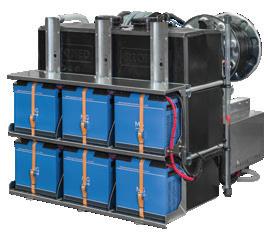
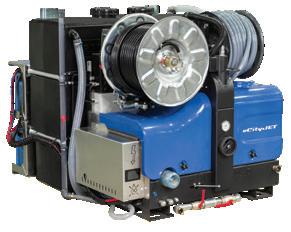
the batteries have been specially designed to balance size and weight, while maximising energy output.
A core requirement of the design was to make sure the power was on par with the diesel model – this goal was achieved with the eCityJet offering 200bar/60LPM.
With many operations taking place in urban areas, minimising disruption to the community is a top priority. This model is far quieter than the diesel CityJet, meeting noise regulations where work takes place near the public.
The unit can be installed in an electric or hybrid vehicle, offering diverse options to meet the needs of all its Australian operators.

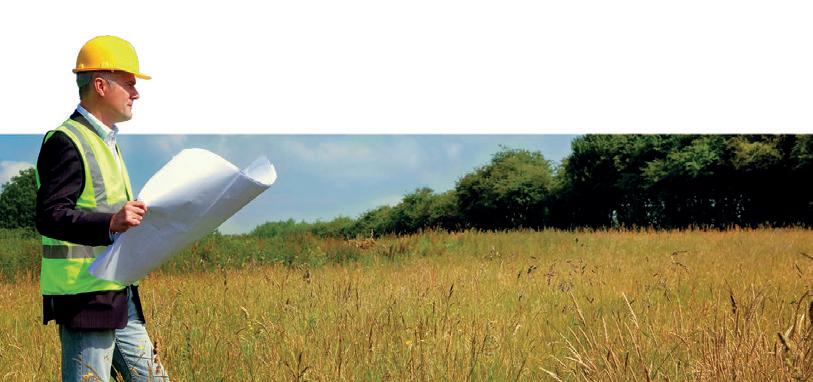

Take a look at the world’s first fully electric high pressure sewer cleaning machine for pipes with a diameter of up to 350 mm. The eCityJet has all the features of the conventional CityJet and meets all current and future environmental standards.
Can perform as well as any dieseldriven machines. With fully charged batteries, and an average working day, you can work with the eCityJet a full day without charging in between jobs.
For pipes of up to 350mm
Completely zero emission
Low maintenance resulting in considerable savings
Regular mains chargeable with a battery life of 8 hours
The fully electric eCityJet uses stateof-the-art technology, and features a strong electric motor powered by an extremely efficient battery pack. This means the machine produces zero emission, which makes the eCityJet ideally suited for use in city centres where strict emission requirements apply and in areas that are completely or partially enclosed. The eCityJet has all the features of a conventional diesel-driven machine and weighs almost the same
The empty machine weighs approximately 690 kg. The machine is slightly larger than a diesel-powered CityJet, making it suitable for most vans

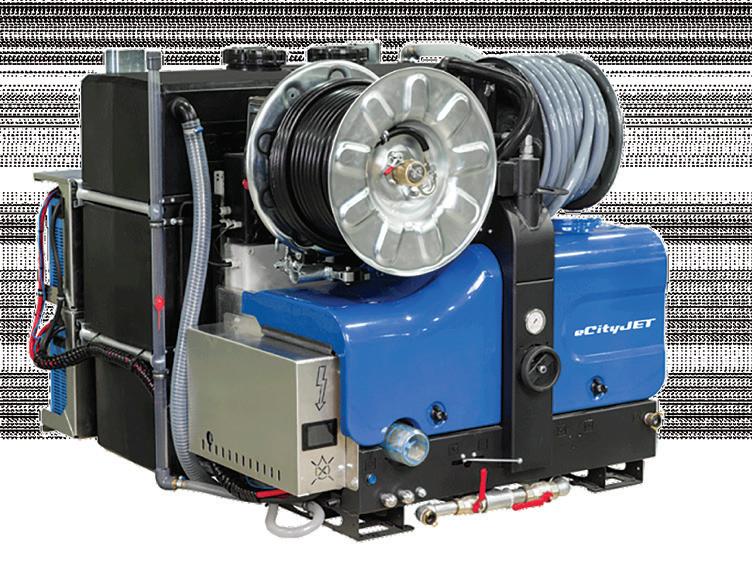
Lightweight & compact suitable for most vehicles.
The empty machine weighs approximately 690kg
Quieter than diesel operated machines which makes it ideal for indoor or night use
The performance of the eCityJet is in no way inferior to that of diesel-driven machines. The machine is ideally suited for unblocking pipes up to 350 mm. With fully charged batteries, and an average working day, you can work with the eCityJet a full day without charging in between jobs.
The eCityJet is equipped with six 5 kWh batteries. The batteries are charged using regular mains power f rom an ordinary wall socket The charging time for six batteries is approximately eight hours. You can even top up the charge during the day for longer flushing.
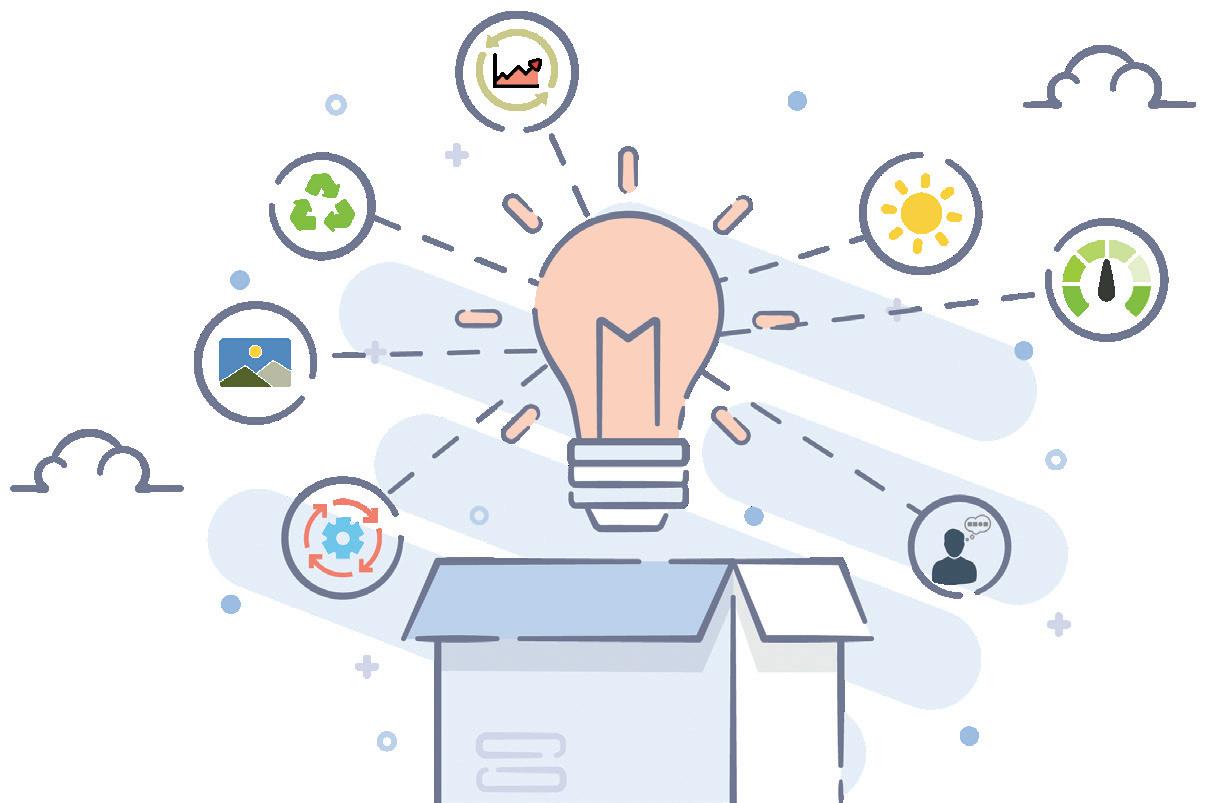
The fanfare that surrounds the mobilisation of a new asset is never quite present when it closes. In fact, no one usually remembers the opening because it’s been many decades and a generation of workers ago. Costs to close assets are capital commitments usually viewed as balance sheet liabilities to be minimised. It’s hardly surprising then, that the increasingly heavy economic, political, environmental and regulatory burdens of asset closure are multidimensional and present a serious challenge.
Maintaining the integrity of an asset, whilst minimising cost before it closes, is top of mind for owners, and this frames their key challenge to maintain social licence to operate and ensure reliability all the way to the end. With this in mind, an innovative sustaining capital program can optimise capital works and maintenance programs leading up to a closure, thus managing the tightrope walk of reliability and social licence.
Asset closure is today’s reality for businesses facing accelerated decarbonisation, economic performance pressures and climate risk transition imperatives. This is especially true in the power sector, as businesses are under pressure to speed up their cuts to carbon emissions.
Early planning and decisions around future use of assets that need to be closed, relinquished or repurposed allows asset owners to optimise their asset management spending on sustaining works and maintenance as the asset progresses to the end of its current use.
Reimagining asset closure is an opportunity to transition the site to a new asset type for owner operation or to on-sell (Figure 1). Doing this requires creativity and a willingness to imagine a different paradigm. Asset closure not only challenges planning and operational processes, but also the organisational culture and capabilities to manage the close. Businesses now need a whole new skill set to manage the close and reimagination of their sites.
Recent examples of innovative asset closures include real estate around power plants being redeployed for large-scale battery storage, port facilities exploring the role of large-scale hydrogen electrolysers, an abandoned gold mine acting as a hydro pumping scheme, a mine closure becoming a mountain biking mecca and materials manufacturing plants converting to major retail distribution centres.
In recognition of the significant financial, environmental, geopolitical and social risks associated with asset closure, regulators are looking very closely at rehabilitation practices and outcomes. This now frames the thinking for owners who have custodianship of these assets, to shift from the traditional ‘managing liabilities and minimising cost’ approach to better consider the opportunities that asset closures can provide (Figure 2).
This takes a deep understanding of physical assets along with knowledge of the future pressures and opportunities that industries are likely to face. The chance to recover value from redundant assets and envisage new earnings streams from the decommissioned assets cannot be understated.
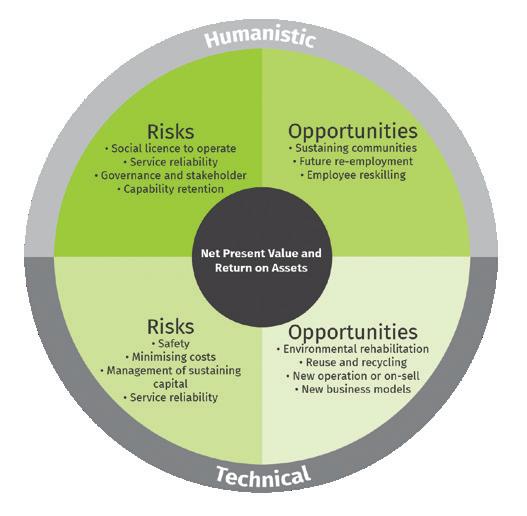

There are examples of exemplar asset closures in Australia. In the power sector, a feasibility study is currently underway to determine if a disused open-cut coal mining site in eastern Australia can be converted into a pumpedhydro facility. In New South Wales, a plan is in place to decommission and rehabilitate a coal-fired power station into an industrial park with the hope of attracting manufacturing and food production businesses. These projects address the environmental legacies of their site and strengthen local economies with new operations and jobs.
“Thinking outside the box is about holistically considering the future potential of the site and taking a far more humanistic approach to asset closure.”
The commonalities in the exemplar closure efforts is the commitment to invest in reskilling employees and thinking laterally about future uses for the site.
An asset’s operational KPI’s must now be retrofitted with closure and repurposing related KPIs; performance monitoring, knowledge and data management to support varying options and outcomes. Most importantly, this will lead to arbitration and governance mechanisms that consider and make tradeoffs between operational performance and investments, and closure/repurposing performance and investments.
Shutdown and decommissioning plans – scope, procedures, budget (including specialist contract and procurement needs) – can be leveraged for closure planning. This now increases the emphasis on the importance of designing, planning and operating an asset with closure in mind. This includes capturing the knowledge of the technical experts operating the asset and housing it in a centralised digital system. As we said earlier, a generation of workers is likely to pass through the gates before closure, so knowledge management is paramount.
The process of managing sustaining capital toward asset closure is central to maintaining and extending social value and licence to operate, as well as meeting reliability expectations. By definition, sustaining capital is the large number of small capital projects to maintain, and continue to optimise, the asset leading up to its closure. An integrated plan, aligned to a common set of objectives, will preserve net present value and return on assets as closure looms. This approach is highly effective to de-risk overcapitalisation, while still meeting service reliability, community and environmental targets.
The efficiency of asset closure practices is attracting increased scrutiny. An increasing number of industries, particularly power, are looking to close legacy assets early in response to market demand/supply dynamics, continued explosive growth in renewables, deteriorating economics, changing climate and shifts in strategic direction.
Engaging early with regulators and government departments to agree the permitting and de-licencing procedures provide the most effective pathway to achieving full relinquishment. Not doing this may influence the asset closure process and the ability to open new sites in the future. What if, in the future, the requirement to construct a new asset was designing its future uses or disassembly at the end of its life?
Companies in recent times have been reminded of their statutory obligations around the ‘white-hot’ ESG (Environmental, Social and Governance) agenda, to disclose risks posed to their operations by climate change and declare their solutions in response. As industries close more assets, disclosure must be continually managed for both compliance reasons and the social licence to operate. Any bespoke sustaining capital program should include lean asset management and resource allocation that takes into account environmental factors in the closure plan and site repurposing.
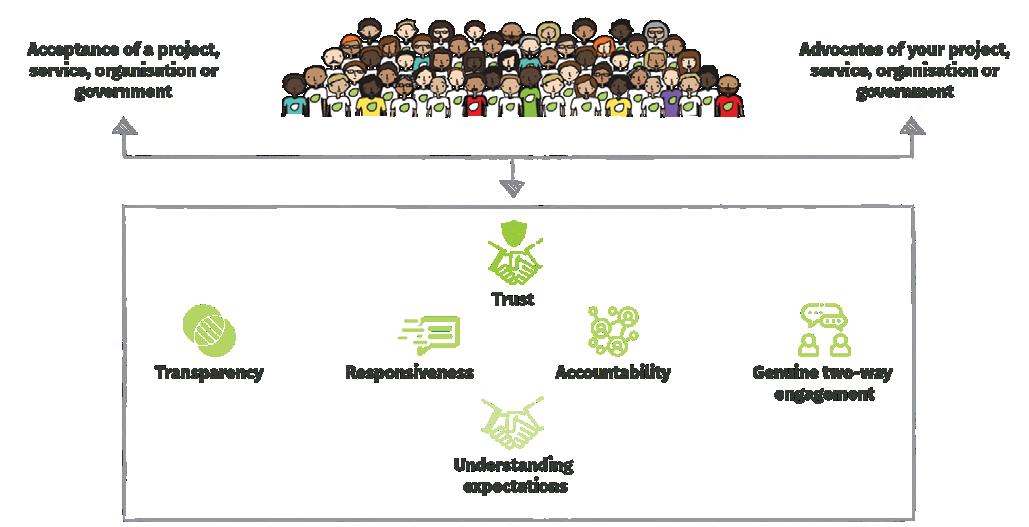
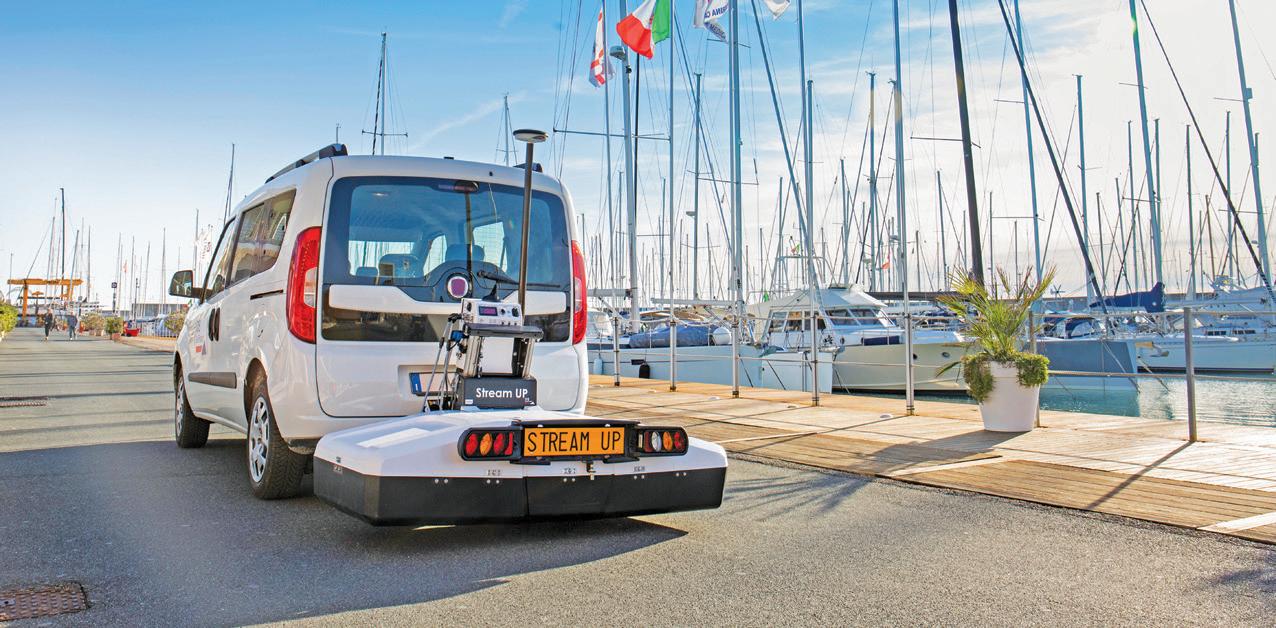

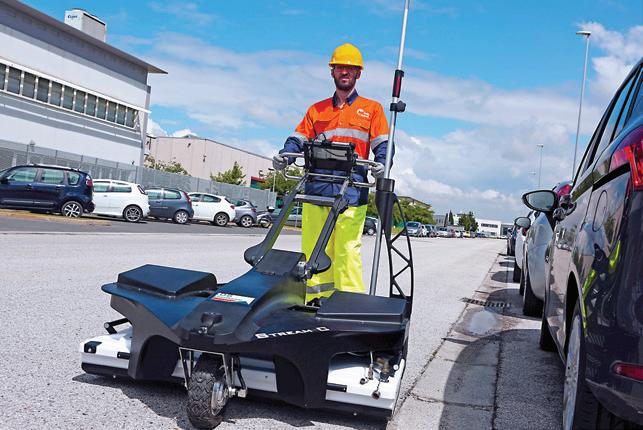





C-thrue – See Thru Concrete Structures and Reveal True Data: all-in-one dual polarisation GPR for accurate scanning and real time analysis of shallow and deep targets in concrete structures.

IQMaps: a new post-processing software application for advanced GPR data analysis with real time processing and 3D visualisation.
www.idsgeoradar.com/products/ground-penetrating-radar or contact Mark Bell from the IDS Georadar Brisbane Office
Email: mark.bell@idsgeoradar.com
Stream UP: a multi-channel, multi frequency, double polarized and lightweight GPR system for high speed utility mapping of large urban areas.Further, the importance of being entrenched in the local communities during operation and the closure phases cannot be overstated. If ignored, an optimal closure outcome is unlikely to be achieved. Asset owners now have a social responsibility to work in partnership with communities to create enduring capabilities for job skills to be transferable to other industries after closure.
Companies that get it right will benefit from the support they receive from employees, neighbouring landholders, First Nations peoples, local and state governments, and many others (Figure 3).
From a social perspective, a community has often grown around an asset’s operation. It is often the largest intergenerational employer with dependency on the site for regional growth, prosperity and sense of identity.
When an asset reaches its final years, community and supplier partnerships are important to leave a legacy of regional growth long after the asset has closed. Locals may struggle to adapt to the transformation, grieve and be concerned with what change will mean and if other jobs will be available.
While there is no silver bullet to leaving a jobs and growth legacy after asset closure, setting clear expectations from the outset, along with effective methods of engaging employees, stakeholders, suppliers and communities will go a long way.
Enlightened companies will undertake various initiatives that are enduring for local people and communities. A comprehensive closure plan considers the social needs of all relevant stakeholders.
“The future of our industries is dependent on the legacy they leave.”
Examples of exemplar asset closure approaches are surfacing in the large industrial facilities sector, with a leading material manufacturer recently reskilling its employees for employment in the retail sector after a large site was closed.
In the mining sector, we’ve seen closed sites in Queensland given over to cattle farming and in Western Australia, a reforestation scheme restoring the plant species present before mining work began.
As new challenges emerge, better solutions are developing for existing issues, with flexibility and innovation that match site-specific requirements.
Although there are underpinning principles, exemplar asset closure practices focus on a far more nuanced and humanistic approach and attitude. This is far cry when compared to a more mechanical set of fixed practices or technology changes. These practices are exactly what we need as we prepare to transform these assets and develop future industries to meet some of humanity’s biggest challenges.
Observing and learning from adjacent industries will also inform part of the process, to ensure that optimal and correct decisions are taken when closing an asset. We at Aurecon see the growing correlation between ensuring maximum value for the asset owner and local communities, as sectors strive for sustainable and stable systems to asset closure.
The future of our industries is dependent on the legacy they leave. For more information, visit www.aurecongroup.com
Simon Mezger is Aurecon’s Principal Infrastructure Advisory: Utilities. He is a deep utilities expert and has industry experience across the entire value chain, having worked with major electricity, gas and water distributors and retailers in Australia. When he’s not helping clients transform their businesses and create asset value, he can usually be found swimming in cold water or riding his carbon horse.

Without applying a security seal to bags, doors, cabinets, packaging, meters, drums, fire extinguishers, containers and more, they can simply be opened and closed without leaving a trace. Concerned that your contents have been accessed? This is where security seals come into play.
Security seals are a key deterrent to preventing unauthorised access due to being highly visible and quick to expose tampering. The sooner you are aware of unauthorised access, the sooner the incident can be examined. Security seals can prevent unauthorised access being discovered too far down the supply chain, or too late to effectively investigate.
Some security seals offer a physical access barrier requiring a cutting tool for removal. Others, such as the security seals used for fire extinguishers, have a low breaking
strain so that the fire extinguishers can be accessed rapidly.
The emergency services industry, among many others, also uses security seals to speed up inventory auditing. Fire extinguishers or medical cabinets that are no longer security sealed can be easily identified and inspected for restocking or servicing requirements.
This article’s image shows three examples of exposed tampering: the security label reveals a void/open text message while being partially removed from a surface, a cable seal’s wire unravels when cut to prevent
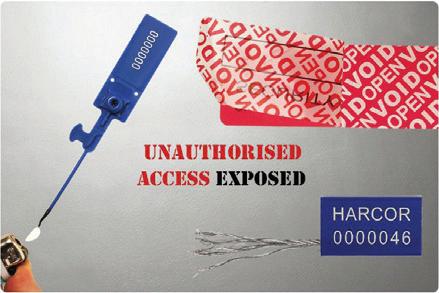
reattachment and a security seal’s material discolours instantly when an attempt is made to reattach two parts of the tail via a heating method.
In addition to the physical properties of a security seal, numbering is also a critical component of the seal’s security integrity. Harcor developed Exact & Track technology that manages millions of security seal serial numbers every year. The benefits include secure serial number data storage, protection against serial number duplication and faster serial number tracking. Go to harcor.com.au/blogs/news/securityseal-numbering to find out more about Exact & Track.


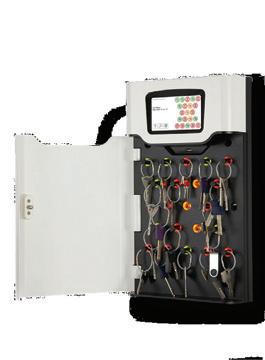

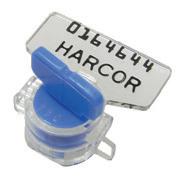

Peter Iancov was appointed as Zinfra's Managing Director in April 2019, becoming the driving force behind one of Australia’s leading utility infrastructure service providers.
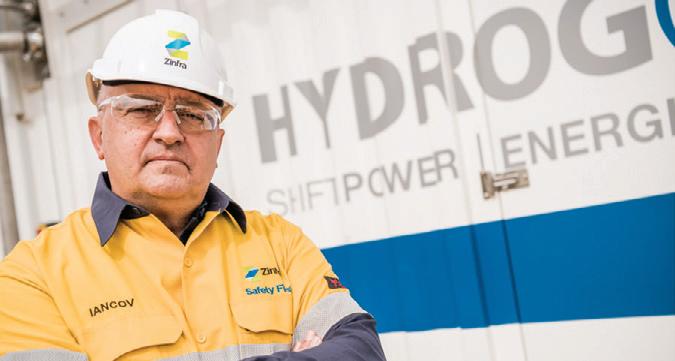
Mr Iancov said he was attracted by the opportunity to spearhead a major services and projects business that had been developing its capabilities in the energy infrastructure market since 2012.
“Zinfra was always a ‘people business’, delivering a range of high-quality and complex maintenance, emergency response, construction and commissioning services in a market that for years was quite unknown despite its criticality to communities, industry and public at large,” Mr Iancov said.
“Today, energy is at the forefront of any successful economy. Being part of the SGSPAA Group (State Grid Singapore Power Australian Assets) and being owned by two major global utilities offers learnings, a bridge to technologies, innovation and capability for growth that are second to none. The opportunity to make a difference and build a special business was quite irresistible.”
While Mr Iancov was appointed to lead the organisation through its transformation to an efficient and trusted service provider, which could potentially lead to future growth aspirations, he believes growth is the natural consequence of delivering on the promise made, and building and maintaining trust and partnerships with clients and communities.
“I’ll start with a statement that might be controversial. Growth is not a vision nor a strategy, but an outcome,” Mr Iancov said.
“Like any business around the world, growth results from acceptable returns to shareholders, providing a reliable, quality and trusted service to our customers combined with planned development of our people, and fair relationships with our suppliers and subcontractors.
“Our vision is simple but also challenging – to become a trusted partner in energy. We plan on getting there by becoming the safest and most efficient field force contractor in our market over many years to come.
“Trust and partnership cannot be requested, nor tendered for a price, nor bought. Trust is earned and is an outcome of living our values and delivering our promises over a long period of time in a way that adds value to all our stakeholders.
“Saying that, we see ourselves operating in the realm of transmission and distribution of energy (gas and electricity), energy storage including batteries, pumped hydro, gas (natural gas, biogas and one day hydrogen), renewable energy systems, smart grids and smart cities.”
Little did Mr Iancov know that less than 12 months into the role, Australia would have to contend with the worst bushfire season on record, followed by devastating floods and then the global COVID-19 pandemic – yet even in the face of these challenges, Zinfra personnel displayed remarkable resilience and commitment to making a positive contribution to Australia’s energy infrastructure.
“Reflecting on 2020, I recall being increasingly amazed at our people's capability to respond to a crisis,” Mr Iancov said.
“This was not about my successful leadership, this was about the leadership of every one of our 1,750 people who responded to this series of unprecedented events.
“Office staff moved within days from the office to working from home, while our depots and field workers continued to deliver 24/7 services to ‘keep the lights on’ alongside all other critical infrastructure and essential workers. On top of our typical ‘day job’ we had to learn to interface with and support various government and health authorities in their challenge of keeping Australians safe.”
As a professional electrical engineer, Mr Iancov has an established career with over 27 years’ experience in leading major businesses and projects, with expertise in the management of major projects, construction, maintenance,
and the operation of gas and electricity infrastructure assets and major facilities.
He began his career in 1992, first learning the programming language C++ and then testing high and medium voltage motors in Melbourne. Soon after, he entered the manufacturing industry designing, testing and producing low voltage, high voltage and extra-high voltage switching equipment for transmission and distribution utilities in Australia.
“It is quite special to see many products still in service and manufactured to those old designs even today, but also quite amusing receiving feedback from the users 25 years later on their design and performance,” Mr Iancov said.
In 1996, Mr Iancov joined United Energy, an electricity distributor operating in east and south east Melbourne and the Mornington Peninsula, before moving to the publicly listed energy infrastructure company Alinta in 1996. For the next 12 years, he continued his career at Alinta in various general management roles, mainly related to service contracts, major projects and asset management.
“When Alinta was acquired in 2007, I was managing the Western Australia business, including the delivery of a $1.8 billion transmission upgrade to the Dampier to Bunbury Natural Gas Pipeline, and managing gas and electricity teams and assets in Western Australia and the Northern Territory – many of them now part of other businesses such as APA, ATCO, AGIG and others,” Mr Iancov said.
“In 2008, I left the utility space to lead a reputable Western Australian contractor for the following five years and entered the commercial, industrial, mining and defence construction sectors. It was an amazing learning experience characterised by hardcore contracting, distributed locations, tough competition and sustained performance.
“I semi-retired at 48 (or at least I thought I did!), started my own advisory business and was, and still am, privileged to have joined a number of boards as a non-executive director. The multitude of amazing people I have had the privilege to serve with has taken my personal development to new levels that would, most likely, not have been achieved solely through an executive career or formal study.
“A few public biographies would reveal that I have also worked with companies such as ASC (formerly Australian Submarine Corporation), Western Power, Valmec, Southern Ports, Robe River Kuruma Aboriginal Corporation and Australian Naval Infrastructure, among others.”
The utility industry is undergoing a once-in-a-generation transformation driven by technological advances, heightened environmental awareness and evolving customer expectations. While this creates numerous financial and operational challenges, significant opportunities exist for those who are willing to act promptly and decisively while embracing continuous improvement.
Mr Iancov said that although the power and utilities business model has remained relatively unchanged over the past century, Zinfra is always looking to understand, improve and innovate in the areas where it can add most value.
“An old-fashioned commercial structure, an underinvestment in apprentices, trainees and graduates over the last 10-15 years combined with limitations in international recruitment and
migration mainly due to the pandemic, and a wave of major projects required in the industry to normalise the acceptance of renewable generation and decarbonisation are likely to create a ‘perfect storm’ that will challenge our traditional way of thinking and executing strategies,” Mr Iancov said.
“There is an opportunity to collaborate with our customers and create a sustainable delivery model for services and projects in the utility space that delivers value to all stakeholders.
“It is a long journey which we have started through open and transparent conversations at all levels and with all stakeholders supported by delivering on promises made.
“I am directly involved in improvement programs across the Zinfra and Jemena group. This includes leading improvement programs and personally facilitating workshops at management and field force level.
“I also have individual discussions with our frontline leaders and field staff to support the team in developing strategies for prioritising and executing improvements, and ensure resources and funding are available to enable such improvements to occur in a timely fashion.”
When asked what he enjoys most about working in the utility industry, Mr Iancov said the sector has been the unsung community hero for a very long time.
“We are a committed, professional and humble industry that happens to sit at the essence of civilisation.
“We don’t want to imagine how our society would operate ‘when the switch is off’. Transport, food supplies, heating, lighting, hospitals, supermarkets, internet, WiFi, communications, security etc would all be affected.
“I enjoy seeing the value that the industry adds to the lives of our communities and loved ones. More importantly, I enjoy working with the people that make up the utility industry – they are truly special.”
Outside of work, Mr Iancov uses walking to help him unwind and balance the demands of a challenging professional life. He is also a passionate fundraiser for a variety of charities and community organisations.
“Walking is one of my ways of attempting to stay fit, but I also do it to relax, reflect and meditate. I do a lot of walking every week – so far 2,400km this year – sometimes on my own, sometimes with friends, and more recently, with some of my clients who are courageous enough to have a business discussion whilst we are walking together,” Mr Iancov said.
“My motivation for philanthropy and fundraising is simple: we as a community and society at large need a lot of services that do not always have adequate resources or funding to meet demand.
“Each one of us can help and make a difference. I am fortunate enough not to have a personal reason for giving, but I don’t think we need one to help others. As Winston Churchill famously said, ‘we make a living by what we get, but we make a life by what we give’.”
Zinfra is your trusted partner in energy. For more information on Zinfra’s engineering, project management, construction, operations and maintenance services, visit www.zinfra.com.au.
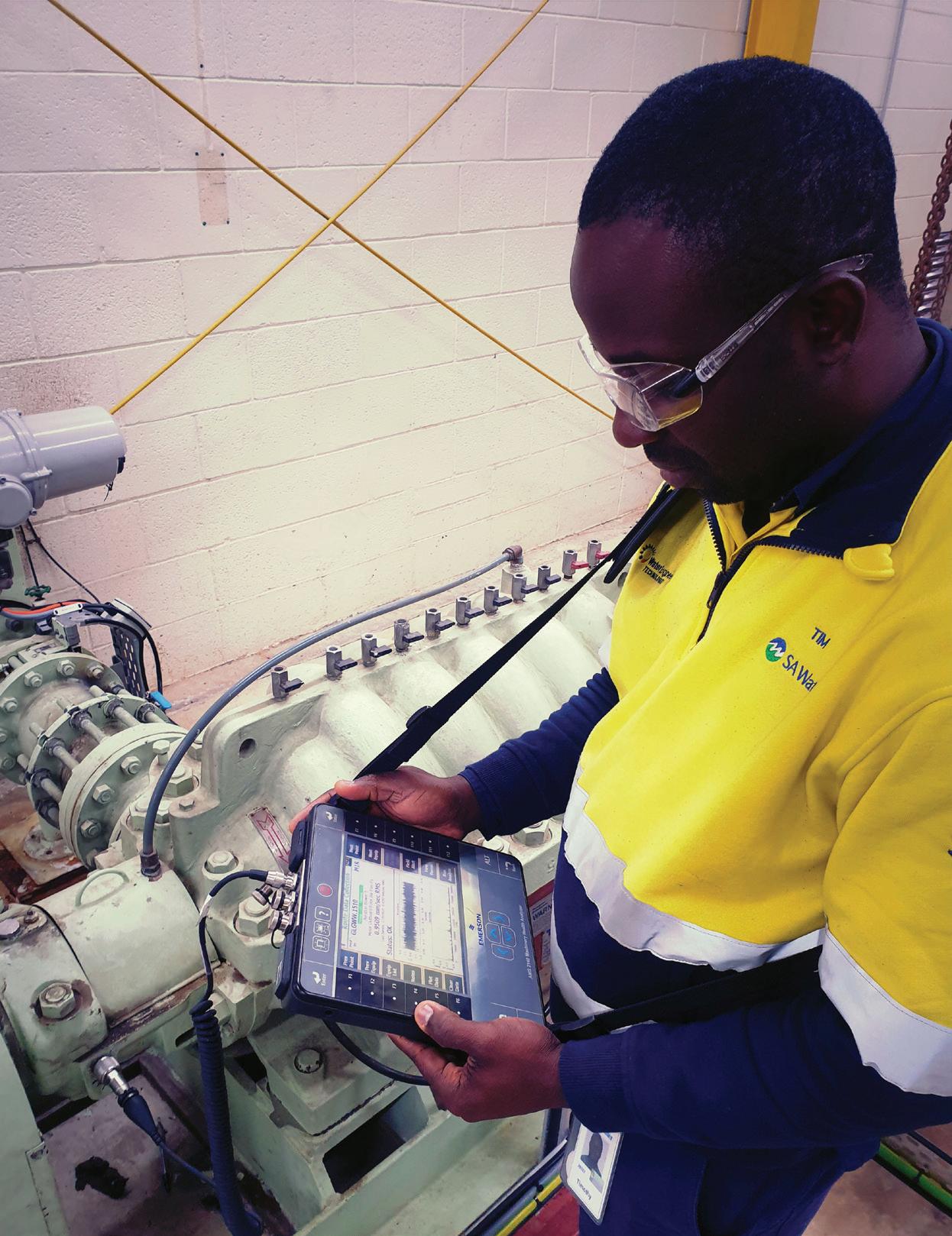
New technological capabilities are enabling SA Water to save time and money by increasing pump reliability and availability as well as pump performance and lifespan, reducing maintenance times through improved root cause analysis and repetitive preventative maintenance work orders, and optimising maintenance and capital investment.
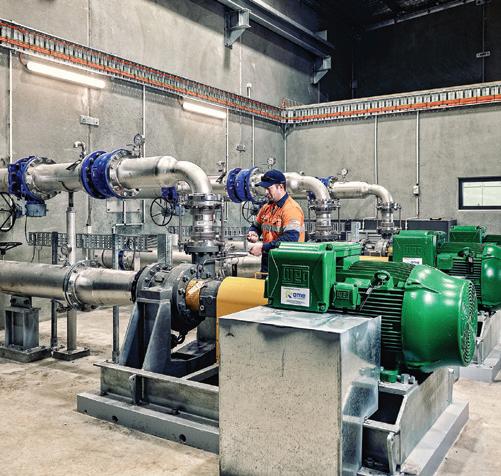
Smart maintenance technologies are enabling SA Water to adopt a proactive and predictive approach to asset management.
SA Water’s specialist business unit Water Engineering Technologies is leading the way in the development and provision of smart maintenance capabilities to organisations that own and operate rotating assets.
Organisations that rely on rotating assets to deliver safe, reliable, sustainable and cost-effective water and wastewater services to their customers must invest in maintenance.
To achieve the lowest lifecycle costs for assets and to minimise forced outages and breakdowns, maintenance is a key component of risk management, asset management and business strategy.
This involves identifying assets that present a high risk to the delivery of services, and the use of risk management strategies to reduce disruptive or negative outcomes.
Asset risk calculations are based on two components: likelihood and consequence of failure.
While the results of asset failure can be relatively constant over time, the probability of failure is not – as assets age and deteriorate, the likelihood of failure can increase. There is a strong relationship between the condition of an asset, its likelihood of failure, its risk rating, and the reliability of the provided service.
Once the level of risk associated with the asset is known, it can either be accepted, or reduced through an operational and/or capital intervention.
The critical question for asset owners or managers is ‘what is the best way to assess the risk that an asset will fail and
determine the most appropriate intervention solution – to repair, rehabilitate, or replace?’
Asset management covers a broad spectrum of practice across the water and wastewater services industry, ranging from the basic reactive ‘run to failure’ approach, through to preventative maintenance regimes and the use of innovative predictive maintenance methods and strategies.
Water Engineering Technologies Senior Manager Maintenance, Nima Gorjian, said you can’t rely on intuition and guesswork based on visual inspections and fixed time-based maintenance to keep assets safe, reliable and profitable or provide the best use of asset management budgets.
“Simply refurbishing or replacing components at fixed time intervals, based on the rationale that this will reduce incidence of breakdowns can be flawed,” Mr Gorjian said.
“In most cases, scheduled preventative maintenance is based on original equipment manufacturers’ recommendations, best guesses or a mixture of both, with limited evidence of root causes of actual or potential failures identified.
“Not surprisingly, these maintenance approaches lead to repeated failures, spiralling costs and short-term planning. And, with a lack of good evidence that these approaches achieve positive business returns in plant or financial performance, pressure to reduce maintenance budgets increases.”
Mr Gorjian said that in contrast to past practices, maintenance management today is a technologically advanced practice, drawing on an array of sophisticated techniques and technologies to determine an asset’s condition.
“For these reasons, we can now better understand how and why rotating assets wear out, how they behave, why they fail, and the ways in which they respond to various operating conditions and environments,” he said.
“Our planned programs at SA Water adopt a reliabilitycentred maintenance approach across the life of the pump asset. This sees asset life realised, lifecycle costings optimised, and level of service maintained.”
To achieve this, Mr Gorjian said the asset’s physical condition is used to predict the end-of-life replacement, or total failure of the asset, rather than the day-to-day failures that will be rectified through regular corrective or breakdown maintenance.
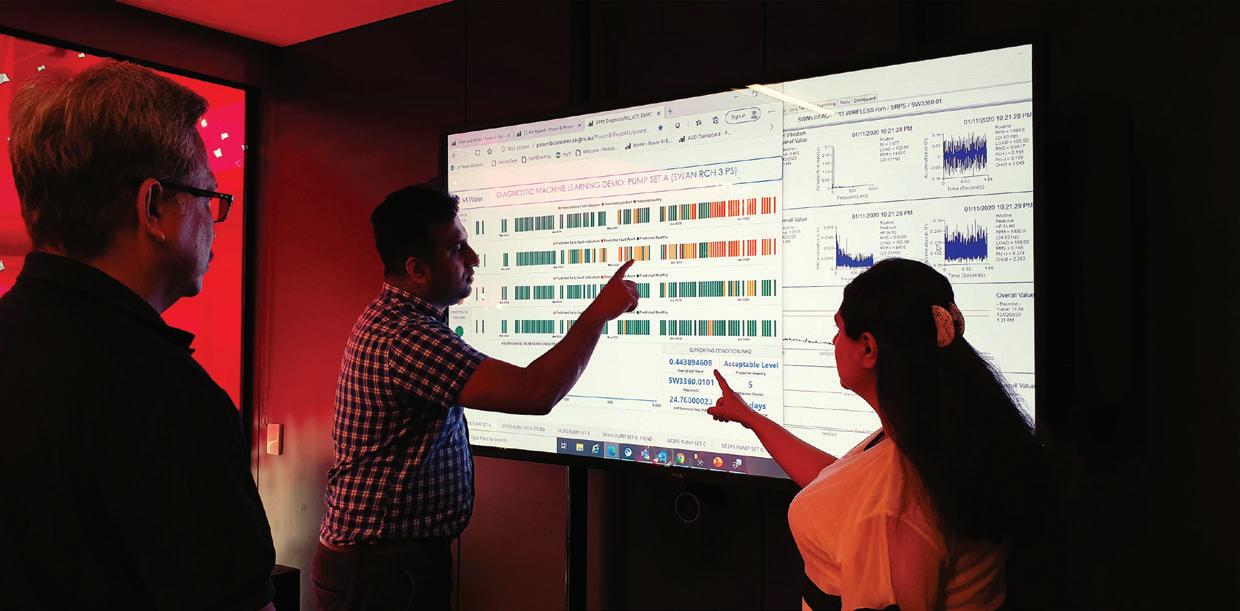
MAINTENANCE AND DATA ANALYTIC ENGINEERS DESCRIBING A PUMP FAULT IDENTIFIED BY THE AI SOLUTION.
“Reliability and CBM keeps a watch on asset condition parameters, such as vibration, temperature and pressure, so that early signs of asset deterioration, diagnosis of asset degradation or significant changes in asset health can be readily identified.”
In general, vibration analysis techniques are applied in the condition monitoring of rotating equipment such as pumps and motors.
“Our advanced condition-based maintenance processes and technologies enable early signs of asset degradation to be identified to inform accurate risk assessments, providing critical information to identify the appropriate timing for interventions to bring assets back to an appropriate standard,” Mr Gorjian said.
The use of advanced asset monitoring capabilities –portable vibration, temperature and pressure sensing analysers – negates the limited value of visual/audible inspections of assets.
“Our reliability and conditioning monitoring team use portable analysers to ‘listen’ and analyse an asset’s condition – much like a doctor uses a stethoscope, blood test or thermometer to check a person’s inner workings,” Mr Gorjian said.
“With portable analysers, we monitor the condition of rotating assets by capturing data that is processed and analysed using an advanced machine health monitoring program to determine the condition of the asset to diagnose and fix faults.”
Water Engineering Technologies’ use of portable and online sensors to collect new data is combined with existing data,
such as event history, and reliability engineering techniques, data analytics and Artificial Intelligence (AI) algorithms to predict asset faults, the repair or replacement needs of key assets and avoid maintaining unnecessary redundancy.
By installing smart technologies on critical rotating assets and analysing real-time sensor data, owners and operators of pump stations can avoid ‘catastrophic’ failures. By being proactive and predictive with asset maintenance and replacement you can reduce repetitive preventative maintenance work and optimise maintenance investments.
Late last year, Water Engineering Technologies installed online vibration and temperature sensors at one of SA Water’s Swan Reach water pump stations, as part of a smart maintenance program proof of concept.
The aim was to test how well real-time data flowed from smart sensors to SA Water’s state-wide, industryleading monitoring system and machine health software and AI platform to proactively predict potential faults and avoid failures.
Overseen by Water Engineering Technologies reliability and condition monitoring team, best practice artificial intelligence modelling was developed using real-time and historical data to build intelligence and diagnose rotating asset fault patterns.
In April 2020, the AI solution alerted the team to a potential issue at the pump station.
Data Analytic Engineer Kaushik Sesha Dollaiah notified subject matter expert and Lead Condition Monitoring Engineer Stephen Moore who investigated and confirmed there was a problem with the pump and worked to rectify the issue.

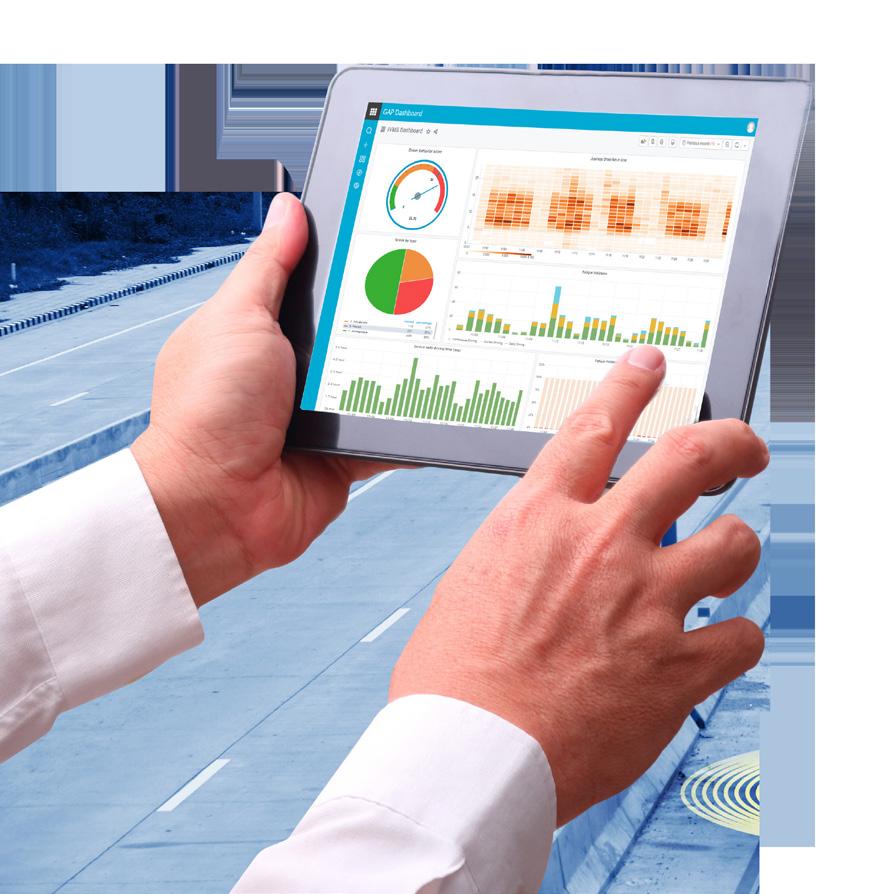
Our Global Alerting Platform (GAP) connects, protects, and optimises People & Things. GAP’s “plug & play” architecture allows you to connect any device & utilise any network.
Our GAP vehicle solution, GAP for Fleet, enables you to improve the safety and security of your drivers and vehicles, while optimising your fleet performance and minimising statutory compliance costs.

Every fleet, large or small, can use GAP for Fleet with its visualisation and real-time rules engine to automatically notify fleet operators of safety, statutory and scheduling events.
GAP Reports and GAP Dashboards add a sophisticated suite of reporting and analytics that may be customised to cater for specific industry verticals and larger enterprise use cases.

We invite you to contact us to learn more about our current clients in electricity utilities, mining resources, exploration and health, and how GAP for Fleet has been deployed to meet their unique requirements.








Edge Underground is a precision microtunnelling contractor that operates in Australia and the USA. With a focus on innovative technology and expertise, Edge Underground designs and enhances the performance of trenchless equipment.
• Microtunnelling
• Pipe Jacking
• Thrust Boring
• Laser Tunnel Boring
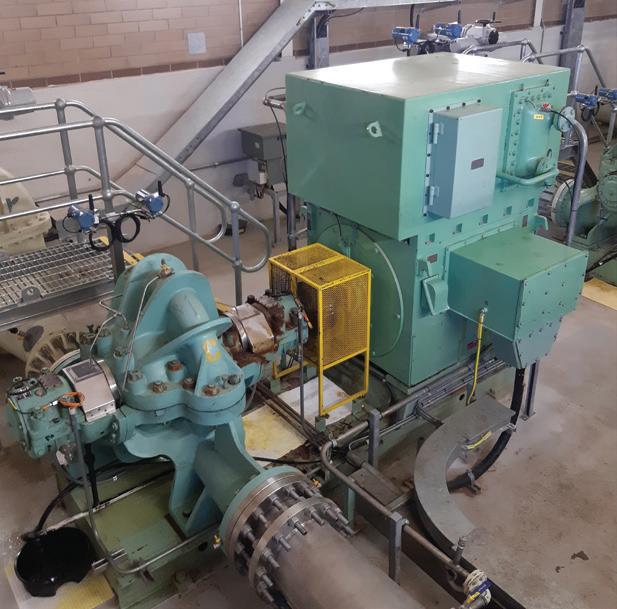
"Previously, we would routinely check the pump every three months using a portable analyser. Without the use of smart technology, the issue would have gone undetected until this time," Mr Moore said.
Manager Reliability Integrity and Condition Monitoring, Harvey Pantow, added, “By predicting the fault early, we avoided any potential catastrophic failures and further degradation of the asset, as well as impacts to water services for the outer-metropolitan Adelaide area from an unplanned shutdown which typically would incur more costs.”
Water Engineering Technologies performance and condition-based maintenance program enables SA Water to maximise asset lifecycle and reduce operational costs, through the application of data-driven innovative reliability techniques.
In the near future, Water Engineering Technologies will look to roll out smart online sensors across SA Water’s regional critical pump sets providing predictive maintenance analysis and continued monitoring. Moving to this approach provides the continued reliable operation of this critical infrastructure, reducing the need for unplanned maintenance and enabling improved safe work practices.
Combined with the optimisation of work management planning and effective work delivery, this will see Water Engineering Technologies work smarter, improve the quality of its maintenance services and free up its people to work on capital projects, achieving continued reliable water and wastewater services for South Australians.

I f the re ’ s one t hin g you don’ t want to take a chance on, it’s the ability of yo u r DC power system to protect your critical a sse t s. O ur D C power sy stem s are designed to meet Australian standards and to delive r maxi mu m longevity. By custom designing every s y stem, w e provide en gi ne ered sol u t ions t hat me et t h e unique tech nical re quirements of yo u r si te. T h is in n ovat ive ap proach combined with our maintenance support m eans we le ave no t h ing to c h anc e when it comes to protecting you r cri ti ca l a sse t s.
To le arn more about our DC power systems and ma intenance ser v ices, v is it o u r website.
F or enquiries call 1300 364 877 www.intelepower.com.au
Safety is our number one priority, as it is for our customers. Arc faults can cause serious injury and even fatalities. Why put personnel in danger when you can install an arc fault contained variable speed drive?
Rockwell Automation’s specially designed enclosure now adds another layer of personnel protection in the event of an arcing fault.
Variable speed drives have been difficult to design to withstand arcing faults due to critical failure points in vents and fans, but Rockwell Automation has designed the perfect solution – a patented arc baffle ventilation system which allows air flow under normal operating conditions, but under an arcing fault, diverts all gases flowing from the enclosure and provides no direct path for gas.
The floor-mounted variable speed drives with arc baffle ventilation system have been successfully tested in accordance with IEC/TR Edition 3.0 and AS/NZ 3439.1 Annex ZD.
The range is available in a floor standing configuration up to 250kW.
Rockwell Automation’s PowerFlex 750 offers seamless integration into the Logix environment for simplified and enhanced configuration, programming, diagnostics and maintenance.
The PowerFlex 750 series supports a comprehensive range of network protocols to ease integration into your architecture. The PowerFlex 755 features an embedded EtherNet/IP port, allowing you to easily manage drive data over EtherNet/IP networks.
Help protect personnel and equipment while reducing machine downtime with safety solutions up to and including PLe/SIL, Cat 3 and Cat 4.
Enclosure IP 54, Floor Mounted Temperature range 0-40oC
Voltage range 380...400V AC Form of separation Form 4B, in accordance with AS/NZS 61439 Cable entry / exit Bottom/bottom
• Incoming circuit breaker with shunt release and auxiliary contacts
• 24V DC power supply
• Door-mounted human interface module
• 24V DC I/O module
• 4mm aluminium gland plate
• Line and load side reactors (which increase the overall width on certain sizes)
For further information on Rockwell Automation Arc Fault Drives, please call your local NHP Account Representative or email us:
Australia – 1300 NHP NHP nhpsales@nhp.com.au New Zealand – 0800 NHP NHP sales@nhp-nz.com

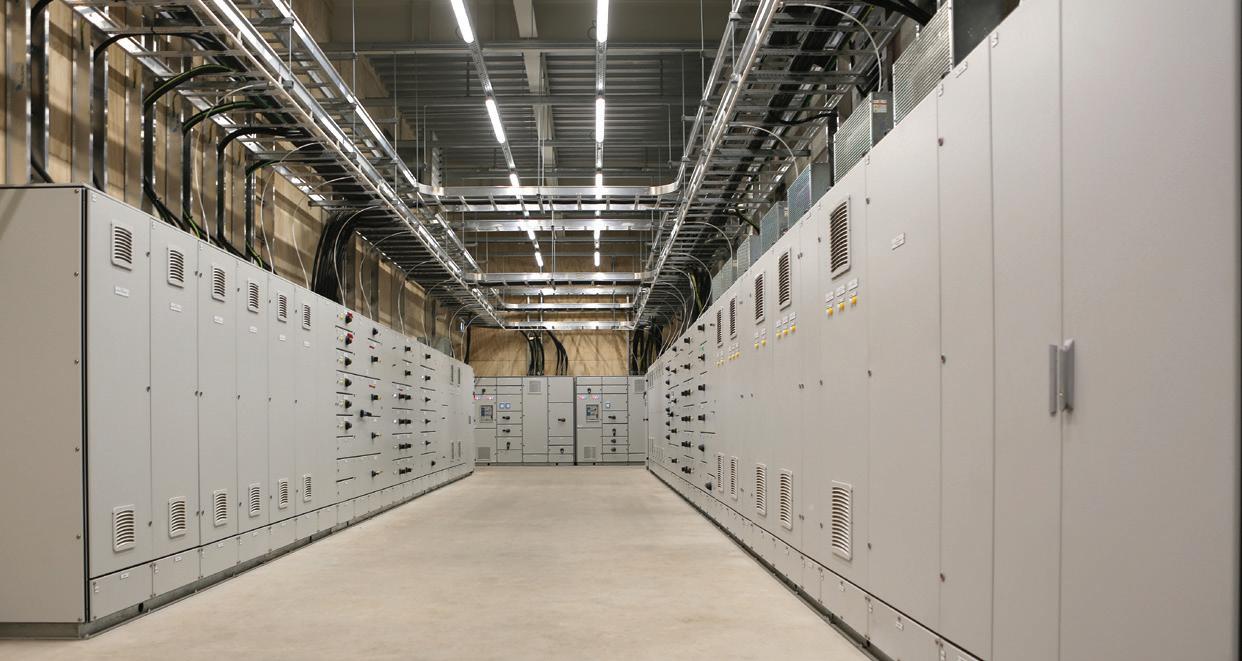
Are you prepared for AS/NZS 61439 switchboard standards?
Don’t be left behind. NHP’s Cubic Modular switchboard systems and Concept distribution panelboards will ensure you’re compliant with the new standards.
For the complete 61439 switchboard solution, call your local NHP Account Representative on 1300 NHP NHP or go to nhp.com.au/61439
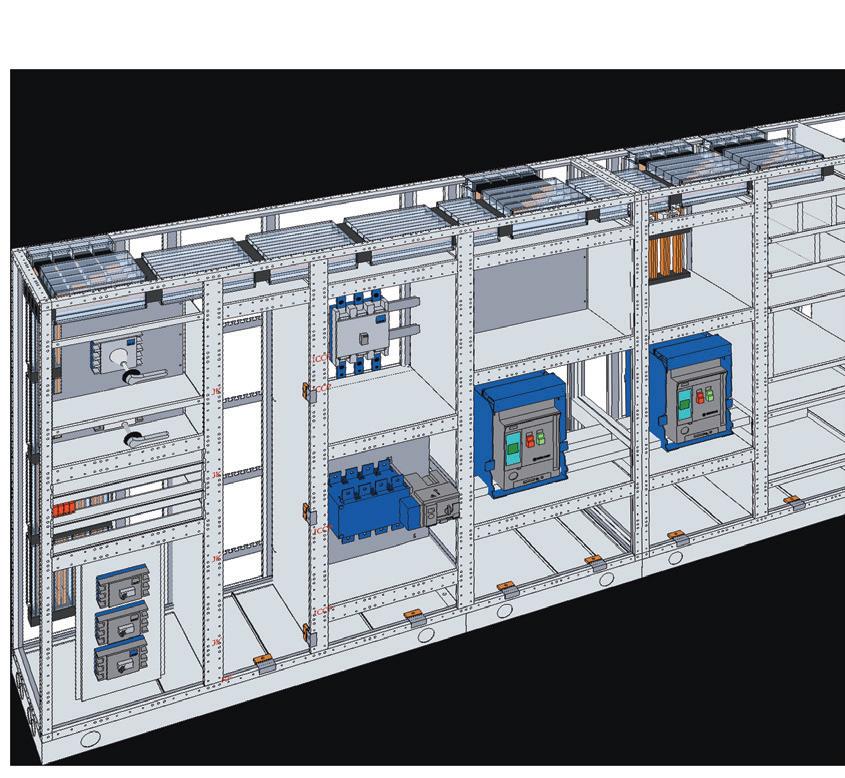


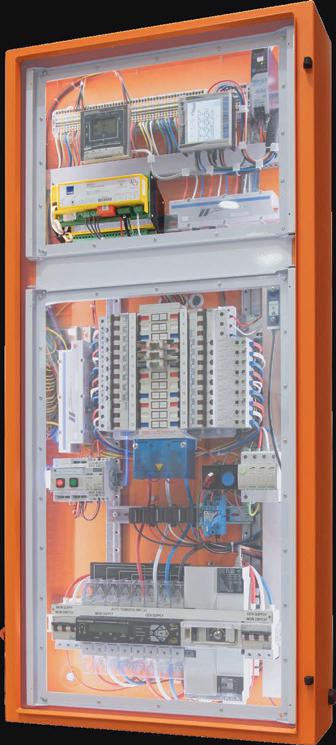



to uplift its asset management and operational practices, unlocking ways of working not previously possible. By building a digital model of the network and its surroundings, many insights that were impractical due to the laborious and manual calculations involved, are now easily within reach, because assets can be accurately modelled to replicate how they will perform in reality and interact with the real world.
Essential Energy has more than 870,000 customers and manages over 183,000km of powerlines. This markedly low ratio of customers to assets means that it is critical that Essential Energy finds ways of working that are not only industry best practice but are also agile enough to continuously improve and deliver long-term value to its customers.
While there are many definitions of digital asset management, at Essential Energy, digital asset management refers to the use of digital data sources to provide asset management insights and operational efficiencies.
It encompasses a multitude of techniques that leverage rich sources of intelligence that, at its most basic level, involves the use of digital imagery to determine what assets exist and what condition they are in.
More advanced applications include the building of an accurate digital twin of the network that is supported by an engineering-grade mechanical and electrical analytics engine to provide ‘whole of network’ insights.
Network-wide risk and resilience assessments as well as the compatibility of the network to connect renewable energy supplies are some of the applications made possible by this modelling capability.
The development of the digital twin that can be applied at a large scale is seen as a core capability required to efficiently manage one of the largest and most geographically dispersed distribution networks in the world.
Essential Energy’s digital twin journey began in 2014, when Essential Energy began carrying out Light Detection and Ranging (LiDAR) scans of its service area for the purposes of compliance reporting.
The acquisition of this data laid the foundations for Essential Energy to be able to enhance its network design function. The LiDAR data, once ingested into a technology solution that is used for network design, enabled the automatic creation of Building Information Model (BIM) objects. These BIM objects replicate the way the network is actually constructed in the real world which creates a 3D digital twin of the ‘as built’ network.
This accurate ‘as built’ record provided by the digital twin had never previously been available. This automatic creation of digital twins for portions of the network has significantly improved the efficiency of the network design process, which has initiated the transition away from 2D construction plans to 3D BIM-based network designs.
The use of auto-generated 3D digital models of the network has also enabled a rapid production of compliant and consistent approach to network designs.
It has also uplifted the skill levels for both network designers and accredited service providers who design new connections based on digital twin objects on behalf of customers connecting to the network.
One of the key components of designing with BIM objects is the implementation of built-in compliance checking. This allows consistent, accurate and fast design reviews for internal and externally produced designs, creating high levels of compliance with Australian Standards and Essential Energy guidelines, and reducing technical certification assessments timeframes by up to 50 per cent.
This network design application of digital twins has in turn provided the foundation for Essential Energy to expand its application to the entire network to support asset management and operations.

Essential Energy considers three key layers of capability when considering digital asset management:
• Digital data sources
• A platform to visualise the digital twin and linked asset data
• Applications that use digital data, the digital twin to provide asset management insights
The visualisation platform provides the means by which the digital twin and other digital data and content can be linked and digitally brought to life to demonstrate the network and its surroundings.
This provides a means of associating all asset and contextual information to a digital twin asset and, for such a geographically dispersed network, provides the means of carrying out ‘virtual site visits’ and reducing travel using an accurate digital desktop model
The availability of rich digital datasets, the development of a configurable digital twin and the visualisation platform provides the basis for what Essential Energy sees as the third and most powerful layer in digital asset management capabilities – digital asset management applications.
These applications are targeted at specific asset management needs. The outcomes can then be used to enable other asset management applications and be passed back to the visualisation platform as a record of how the outcome was derived from the digital imagery.
For instance, digital asset imagery combined with the digital model can be used to determine asset attribute and condition information.
Similarly, applications may make use of the digital twin and its configurable mechanical analytics engine to provide insights such as the ‘as built’ conductor tensions and mechanical loading of power poles which can be used to inform decisions relating to pole reinforcement or replacement.
The outcomes provided by these applications can similarly be passed back to the visualisation platform so that asset and operational managers are able to see the basis of what has contributed to the modelled insight.
Some powerful but fundamental value use cases are already apparent for the application of a large-scale digital twin to enhance asset management outcomes.
In the electricity distribution industry, many processes for assessing the serviceability of assets rely on the application of rule-based approaches rather than specific approaches for specific assets. A tailored approach to specific assets is made possible through digital twin modelling.
Using the actual measured mechanical loading of assets in place of assumed values is a key area of potential for a digital twin that has a mechanical ‘analytics engine’ at its heart.
For Essential Energy’s assets, the decision to replace or reinforce timber poles relies heavily on assessing the mechanical loading of poles and the remaining strength required in the pole to safely withstand that loading.
Using the digital twin to determine the actual mechanical loading on power poles can better inform the asset decisionmaking process.
Similarly, mechanical loadings can be derived from the digital twin to impact the shift from reactive to planned maintenance. This shift – when applied to power line components such as poles and cross arms – is made possible by using the digital twin to determine the mechanical loading on each asset.
The mechanical loading on these pole and cross arm assets is determined primarily through the assessment of the impact of wind forces on conductors, meaning that the combination of known conductor tensions, historical weather conditions and asset condition information has significant potential to predict asset failures and assess the overall resilience of the network.
The applications of digital twins in electrical distribution goes beyond ‘static’ mechanical modelling. The growth in customer connections of embedded generation and the growing role for the network to manage complex energy flows means that there is an increasing need to understand how its performance and capacity changes throughout the day.
The addition of real-world sensory data to a static digital twin provides the opportunity to determine the network's true capacity to manage highly variable energy flows. Feeding this sensory data into the mechanical analytics engine of a digital twin would provide accurate assessments of electrical ratings.
The addition of an electrical model of the network into the digital twin means that the overall impact of new connections – including intermittent renewable energy sources – can be fully modelled to make maximum use of network capacity.
This future of new and intermittent renewable energy sources connecting to the network is one that must be prepared for so that customers continue to benefit from a network that provides a platform for energy exchange.
As technology improves and becomes more cost efficient, the network needs to be able to safely and reliably manage complex energy flows – something a mature digital twin can support.

Whether you are inspecting insulators, transformers, switchgear or high voltage powerlines, you need to be sure that you can spot any potential problems quickly and early. Partial discharge that goes unchecked can cause blackouts, fires, explosions or even death from arc flashes. Fluke’s new game-changing technology improves your preventive maintenance routines and efficiency without operation downtime.
While ensuring worker safety is always the paramount concern, partial discharge also carries a significant monetary risk. Depending on the scale of operation, having equipment go offline can cost millions of dollars per hour of downtime.
Preventative partial discharge/corona inspection, maintenance and cleaning have a proven record of being the best practices to reduce these risks.
The Fluke ii910 Precision Acoustic Imager is the perfect tool for high voltage electricians, electrical test engineers, and grid maintenance teams that are constantly inspecting and maintaining power distribution and industrial high voltage equipment.
Fluke’s innovative SoundSight™ technology allows users to ‘see’ sounds by capturing sound frequencies through an inbuilt acoustic array of tiny sensitive microphones which generate a spectrum of decibel levels per frequency.
Based on this output, the algorithm calculates a coloured sound image, known as a SoundMap™, which is superimposed over a visible light image of the equipment to show the exact location of where the ultrasonic vibration came from.
With a frequency range of 2-100kHz, and a 7” LCD touchscreen, the Fluke ii910 lets users easily and quickly manipulate the frequency filter range. This helps the device filter out noisy outdoor environments and loud production noises in industrial areas.
Keeping the maintenance team safe is the top priority for any maintenance or substation manager. With a detection distance of up to 120m, the team can operate safely from a distance and reduce the risk of being exposed to potential arcing or even explosions as a result of flashovers.
Key areas to scan for partial discharge include transformers, high voltage power lines and coils, switchgear, arrestors, breakers and capacitors.
For industrial plants and facilities, compressed air, gas and vacuum systems are a vital source of converted energy. They run machines, tools, robotics, lasers, product handling systems and much more. Yet many compressed air, gas and vacuum systems are often compromised by wear and poor maintenance practices, which contribute to the greatest waste of all – ever-present leaks.

These leaks are frequently hidden behind machines, at connection points, overhead in fixed pipes, or in cracked pipes and worn hoses. The waste from these leaks adds up quickly and can ultimately lead to downtime. Mainstream leak detection practices are, unfortunately, quite primitive and still employed to this day.
An age-old method is to listen for hissing sounds, which are virtually impossible to hear in many production environments. Another method is to apply soapy water to the area of the suspected leak, which is messy and can create potential slipping hazards.
These methods also require the operator to be close to the equipment to find leaks and are only possible during shutdown when it is quiet enough to hear the leaks. This makes these outdated methods difficult to implement, especially in hard-to-reach areas such as ceilings or behind equipment.
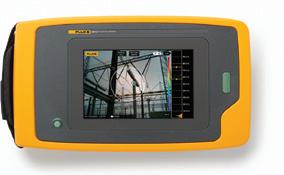
The ability to visually scan large areas from up to 50-120m away with the Fluke ii910 Precision Acoustic Imager can help expedite leak detection at manufacturing plants that rely heavily on pneumatics.
This significantly reduces the hours of labour spent on the task in addition to saving the electrical energy required to run compressors to compensate for leaks and extend equipment life. Users can quickly adjust frequency filters on the touch screen to cut out loud equipment/production/vehicle noises and only display the sounds of relevant leaks.
Efficiently fixing and repairing leaks can also lead to substantial cost reductions for air-dependent businesses. Key areas where leaks can be found in such facilities include couplings, hoses, tubes, fittings, threaded pipe joints, traps, valves, flanges, air lines and pneumatic holding lines.




✓ MANHOLE REFURBISHMENT
• Structural rehabilitation of access chambers
• Relining of pipe connections, channels, benching and walls with PVC for 100% gas tight lining
• Stops further deterioration from gas attack
• Patented technology
• 50 year guarantee
✓ SEWER PUMP STATION REFURBISHMENT
• Structural relining of sewer pump stations
• PVC lining provides complete corrosion protection
• Replacement of damaged pipework, mechanical components and lids
• Patented technology
• 50 year guarantee
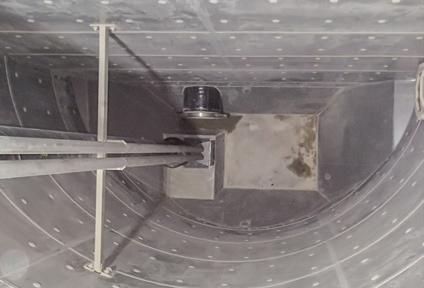
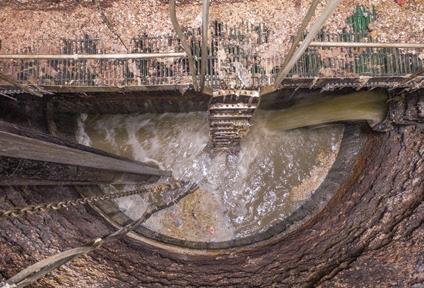
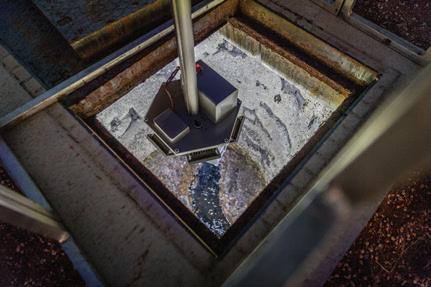
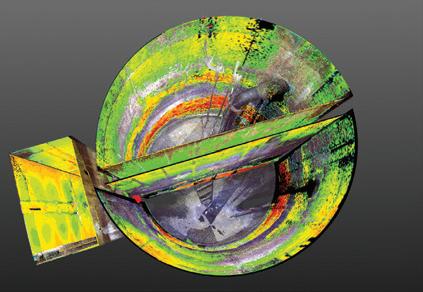
✓ 3D LASER SCANNING AND ASSET INSPECTION
• 3D scan of sewer asset
• Assess structural integrity of asset
• Determine amount of concrete deterioration
• Detailed interactive report with 3D modelling
• High definition video footage and photographs






In May 2021, the UK’s National Grid announced that, in a world first, it was employing the large-scale use of power flow technology to unlock 1.5GW of electric capacity – which works out to be enough renewable energy to power one million homes. Here, David Wright, Chief Engineer at National Grid, gives Utility the low-down on the innovative technology, and how it’s enabling the transmission network to support more renewable generation and achieve the UK's net zero by 2025 ambitions.
The technology in question, SmartValve, designed by US-based company Smart Wires, is an electronic device that actively balances power flows on transmission lines.
Mr Wright said that, as supply and demand on the transmission network changes, network power flows change, and circuits can become unequally loaded. This leaves some circuits reaching their maximum capacity and others well below their limits.
“Installing power flow controllers such as SmartValves allows National Grid Electricity Transmission (NGET) to provide the Electricity System Operator with equipment which reduces the network congestion that otherwise limits renewable generation. This is done with minimal impact on communities and the environment,” Mr Wright said.
“These projects are unlocking network bottlenecks and enabling 1.5GW of additional renewable power – 500MW of power flow across three boundaries.”
“Put simply, SmartValve can push power off overloaded lines or pull power on to underutilised lines. Power on a line depends on the line's voltage and its current. In real time on the electric grid, the voltage of a given line remains close to constant, so the best way to change the amount of power a line is carrying is to change the line current,” Mr Wright said.
According to Mr Wright, this can be achieved by changing the impedance of a line. Mr Wright uses the following equation to describe the physical relationship: V=I*X, where V= voltage, I=current and X=impedance.
However, impedance is a combination of two things –resistance and reactance. This makes things slightly more complicated. In this case, where resistance relates to physical parameters of the line, reactance relates to electric/ magnetic parameters of the line.
“SmartValve impacts the reactance of a line by sensing the line current and injecting a voltage waveform in quadrature
with the line current. What this means is it adds a sine wave to another sine wave at a precise angle. This has the effect of changing the line’s reactance. These sine waves can be added in a way that increases the reactance or decreases the reactance. This has the counter effect on the line’s current (since the line voltage is fixed),” Mr Wright said.
“Power follows the path of least impedance. When SmartValve increases the line reactance (and therefore increases the line's impedance), the line current reduces –this is because, relative to other electrically parallel paths, the path with SmartValve is slightly less attractive for power to flow.
“The opposite is also true – when SmartValve decreases the line reactance (and therefore decreases the line's impedance), more power can easily flow along that path, which has the effect of increasing the current on that line.”
Mr Wright said this technology, or at least the foundation of it, has been in existence for over ten years in a different form (and at much lower power capacity) on distribution networks. He said the scale of NGET’s transmission project is unprecedented, and that it is the ‘reimagining of the grid’ in action. By that he means that modular power flow control technology is the solution that will enable a rapid, low-cost energy transition.
“By installing SmartValves at five locations across our network, NGET is taking advantage of the modular nature of SmartValve and truly leveraging the valuable flexibility that this technology offers,” Mr Wright said.
“These projects usher in a new paradigm of planning and operating the grid: large-scale, wide-spread coordinated power flow control can unlock huge system efficiencies.”
Mr Wright said circuits identified as bottlenecks of renewable power flows resided in the north of England near Harker, Penwortham and Saltholme, reaching capacity while surrounding circuits were still below their limits. This is because power naturally flows on the path of least impedance. The entire network can be blocked from absorbing power when even one circuit reaches capacity, because the strained circuit will overload.
“National Grid is installing 48 SmartValves across five circuits at three substations,” Mr Wright said.
“Following these initial installations at the three sites, National Grid is looking to extend the capability at Harker and Penwortham later this year. This could mean freeing up an additional 500MW of capacity, enough to power more than 300,000 homes.”
According to Mr Wright, the installation process doesn’t take long overall, especially compared to traditional options, going from groundbreaking to fully commissioned in less than a year.
“Devices can also be easily moved if needed – NGET actually did this during the construction process to manage the sequencing across various sites,” Mr Wright said.
“Transferring installed devices from one site to another took only a week, which is incredibly fast for high voltage infrastructure.
“NGET has installed 12 SmartValves – six at Saltholme and six at Harker. A further 15 devices at Harker and Penwortham have completed Stage 1 commissioning and are waiting on specific system conditions to facilitate the completion of commissioning.”
It’s expected that all sites will be fully up and running by the end of 2021.
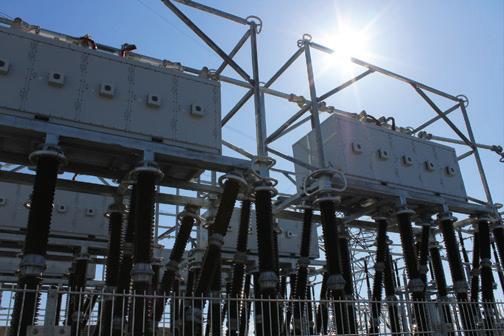
“A smart, flexible grid can reduce congestion (which has been caused by bringing on new generation in new locations compared to the way the grid has operated for the last 100 years), and can unlock capacity so that renewables that are stuck in connection queues can quickly and cost-effectively get their electricity to large load centres,” Mr Wright said.
Mr Wright said that, upon achieving a very high penetration of renewables, the availability of flexible solutions on the grid can enable effective real-time balancing of intermittent renewable generation from a range of sources.
“Having direct control over the power flows on the lines themselves gives grid operators an extra degree of freedom that doesn’t exist today. Today operators can ramp generation up and down and in some cases ramp load up and down (e.g. asking industrial users to reduce their use if electricity supply is low),” Mr Wright said.
“A flexible grid allows operators to use the power lines themselves to unlock a flexible, dynamic system that accommodates the needs of demand and supply in real time.”
Mr Wright said the use of power flow controllers across the Australian network in areas experiencing capacity bottlenecks is an innovative and relatively uncharted approach to real-time operations. Modular power flow controls can offer more flexibility when it comes to network planning and investment.
“Our recommendation is to explore how this flexibility can drive value for your business and your consumers and be open to new ways of quantifying this value,” Mr Wright said.
“We look forward to seeing large-scale adoption of this technology in Australia and understanding the specific use cases for which Australian utilities leverage these solutions. We look forward to sharing our learnings, and learning from Australian leaders as well.”
CitiPower and Powercor own and operate two of Australia’s largest electricity networks, supplying power to over 1.1 million Victorian households – including customers in Melbourne’s CBD and inner suburbs. Daly’s Constructions was recently involved in one of the most complex underground cable installation projects the Melbourne CBD has ever seen, working with CitiPower and Powercor to upgrade the city’s network as part of a major $250 million project involving Waratah Place Zone Substation.
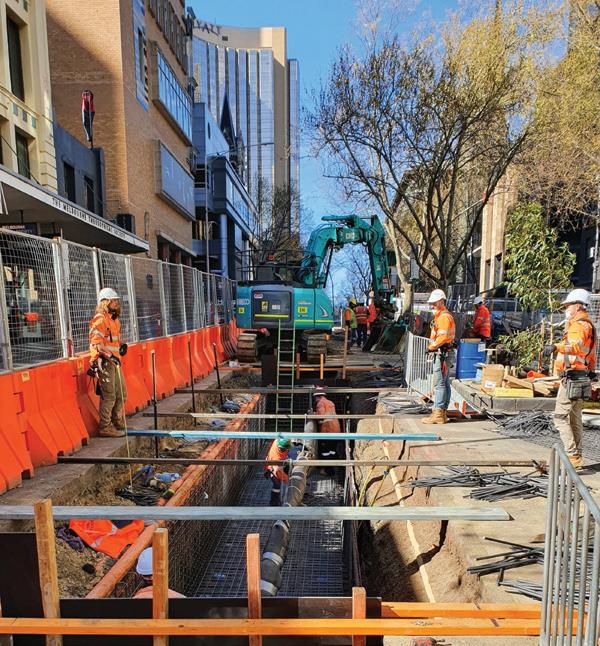
The Waratah Place Zone Substation project ensures that the network has a ‘double backup’ to withstand multiple outages and provide continuous supply to homes and businesses if unexpected events occur on major supply lines, such as extreme weather, fires, traffic accidents or infrastructure failures.
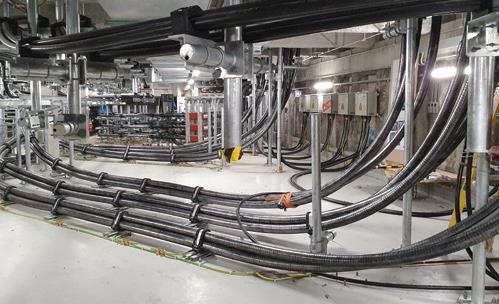
The rebuilt Waratah Place Zone Substation (WP ZSS) is the centrepiece of this project, which allows power to be diverted around the grid so the duration of a major power outage is limited to no more than 30 minutes.
Powercor Network Services, on behalf of CitiPower, engaged Daly’s Constructions to design and construct ten new 66kV underground cable circuits for the new WP ZSS.
These new circuits connect WP ZSS with five other substations in the CBD and nearby area, and ultimately serve to connect Waratah Place Substation to the three terminal stations that supply the Melbourne CBD: Richmond Terminal Station (RTS), Brunswick Terminal Station (BTS) and West Melbourne Terminal Station (WMTS).
This was achieved by diverting existing 66kV underground cables from various locations in the CBD to WP ZSS. New 66kV cables were jointed to existing cables at various locations along the busy Exhibition, Lonsdale, Russell and Little Bourke Streets, and at Waratah Place.
The scope of the works included:
• Detailed design of the cable systems including civil, electrical, hydraulic (oil-filled cables) and temporary works
• Installation of 10.5km of single core 66kV copper cables and 3.5km-long cable trenches through the Melbourne CBD
• Relocation of existing services in Waratah Place (gas, water, power, sewer and telecom) to facilitate conduit installation while maintaining access for businesses
• A 4m deep trench for the full width and 90m length of Waratah Place with a retention system (consisting of bored piles provided by Powercor) to minimise structural risks to heritage-listed buildings with shallow foundations
• Drilling from Lonsdale Street to Waratah Place and beneath the Little Bourke Street Chinese Monument including use of bespoke, purpose-built shoring systems
• Construction of six new reinforced concrete joint bays up to 12m long by 3.2m wide including temporary works design. Three existing joint bays were re-excavated to connect new cables
• Installation of 12 new cross-linked polyethylene (XLPE) to oil-filled transition joints connecting existing oil-filled cables (installed in the 1970s) with new XLPE insulated cables
• Dismantling XLPE sides of the six existing transition joints (while keeping the oil side intact) and reconnecting them with new XLPE cables. This is a highly specialised task requiring extreme care and precision so as to not damage the sensitive components of the oil side of the joint. Due to the sensitivity of the task, special training was arranged for the jointers to simulate the dismantling process before on-site installation
• Dismantling six existing XLPE joints and reconnecting them to new XLPE cables
• Installation of 30 GIS (Gas Insulated Switchgear) terminations inside WP ZSS
• Cutting and jointing into four existing oil-filled circuits, with the installation overseen by an overseas supervisor
• Installation of new oil feeding tanks, associated accessories and testing. Unlike XLPE insulated cables, changes to oil-filled circuits require alterations to the oil feeding arrangements and pressure settings. Plant owned by Daly’s Constructions, such as an oil degasifying unit and other hydraulic testing equipment, were utilised for the works. A fluid systems engineer from the UK was brought over to supervise all hydraulic-related tasks
• Completing all electrical and hydraulic pre-commissioning tests

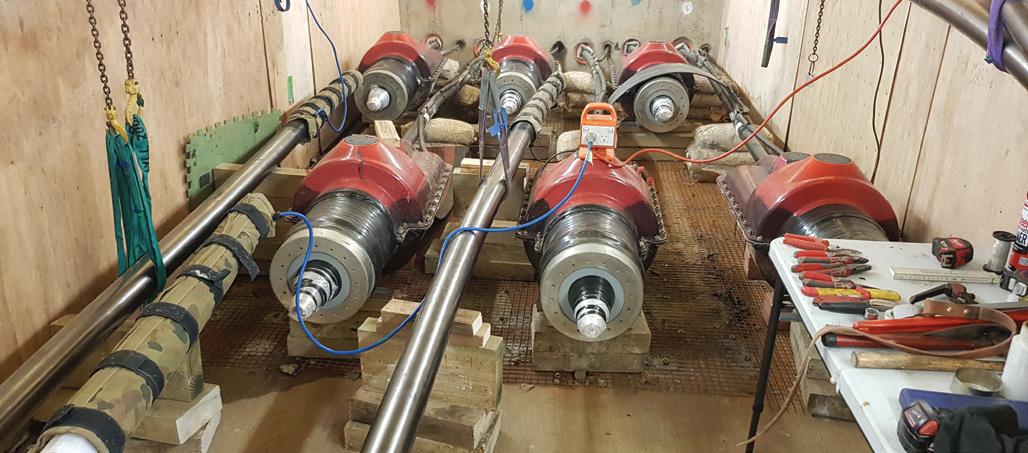
The works commenced in 2016 where most of the civil works were completed on-site. Civil works were paused to cater for a major design change in the route to bring all cables in through the north and south side of Waratah Place instead of tunnelling from Russell Street.
Works recommenced in late 2018 with the relocation of utility services in Waratah Place. All civil works except for the joint bays were completed by the end of 2019.
Procurement of the 66kV joints and terminations was carefully coordinated to ensure compatibility as a variety of new and existing cable designs were used. There were seven different cable designs (four existing and three new) and as a result, eight different joint types were used.
Cable works began in March 2020 with a target completion of February 2021 to meet critical network operational timeframes. Nine circuits were initially planned to be commissioned before the 2020/21 summer.
This presented a major challenge to coordinate numerous resources and stakeholders to meet the tight schedule. Multiple crews were utilised for cable hauling, joint bay construction, jointing and terminating, oil-filled works and pre-commissioning activities.
The COVID-19 pandemic added a whole new complexity to an already challenging project, as Melbourne went through several lockdowns during this period.
While coordinating local resources, Daly’s Constructions managed to navigate through the pandemic with Melbournebased resources, as well as bringing in specialist overseas and interstate resources to complete the project.
The management of local and overseas staff during the height of the COVID-19 global pandemic required in-depth negotiations with the Department of Home Affairs and the Australian Border Force Commissioner.
By the end of October 2020, all ten circuits were completed four months ahead of schedule, marking a major milestone in delivering such a complex sub-transmission project.
According to Mark Daly, Director at Daly’s Constructions, “The success of the project delivery is due to the collaborative approach with the Powercor project team and other stakeholders, effective planning and Daly’s highly experienced and committed workforce.
“Weekly progress meetings and open communication ensured that all stakeholders were informed and that critical interfaces were well managed to deliver the successful outcomes.”
The Waratah Place Zone Substation upgrade was recognised as a Victorian Project Winner at the Australian Institute of Project Management’s 2020 Project Management Achievement Awards, which exist to acknowledge, honour and promote outstanding achievements in program and project leadership.
For more information, contact Daly’s Constructions on 03 9360 9485 or visit www.daly.net.au.
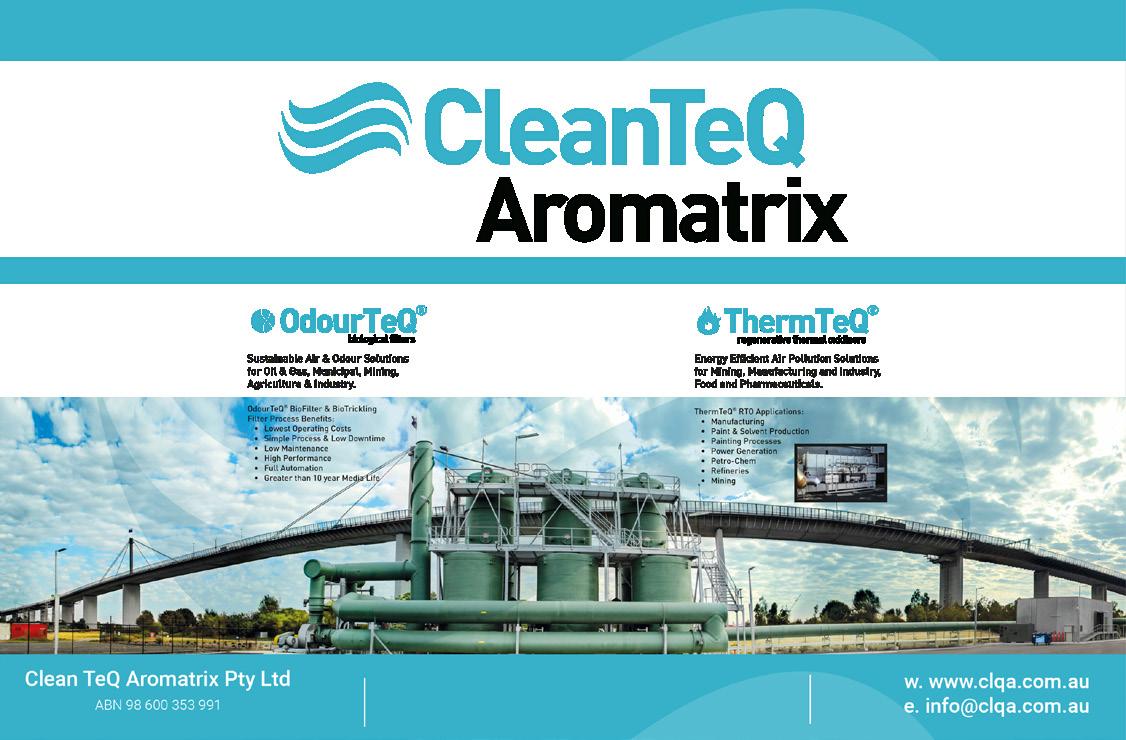





In the past, increased uptake of electric vehicles has been considered a potential challenge to electricity grids, mostly due to the energy required to charge them and the likelihood of charging occurring during peak demand times. Yet this doesn’t need to be the case. With the advent of smart charging and vehicle-togrid (V2G) technologies, the charging and storage capabilities of electric vehicles could make them valuable assets to electricity networks, helping enhance grid stability within Australia and worldwide.
The uptake of electric vehicles (EVs) is on the rise around the world, with consumers drawn to benefits including reduced emissions (especially when charged with renewable energy), increased efficiency, and lower running costs compared to internal combustion engine vehicles (ICVs or ICEVS).
While electric vehicle adoption within Australia has been slower than in other developed countries, modelling by the Bureau of Infrastructure, Transport and Regional Economies suggests that demand will expand rapidly over coming years, with EVs making up around 50 per cent of new vehicle purchases by 2035.
However, a higher number of EVs needing to be charged could potentially create demand management problems for electricity networks, depending how the charging load is distributed. If many EVs are charged at the same time, during peak demand periods, electricity demand could exceed the current capacity of the network, necessitating expensive infrastructure investment to increase generation and supply, and increasing electricity prices.
Many EV owners currently charge their vehicles in the early evening when they get home from work, which is also usually when general demand peaks. Depending on the weather and season, the period of greatest demand often also occurs when one of the largest intermittent renewable energy sources, solar PV, is not generating.
Research suggests that, as things currently stand, Australian networks can only support 5–10 per cent EV penetration in a scenario
of uncontrolled charging before encountering demand management issues that threaten grid stability. Thankfully, technological innovation is offering solutions to this issue, potentially transforming rapidly expanding EV uptake from a gridstability threat to a grid-stability asset.
Smart charging, otherwise known as V1G or unidirectional V2G, enables charging to occur during optimum periods when the demand on the grid is low and renewable generation is strongest, instead of beginning the moment a vehicle’s owner plugs it into the grid.
The electric car or other vehicle is plugged into a smart charger, which communicates in real-time with a centralised platform connected to the grid, other smart EV chargers, and other smart devices and infrastructure.
Using data about how much energy the vehicle needs and current loads on the grid, the charging operator controls the time and rate of charging through artificial intelligence. As a result, charging is optimised to ensure all vehicles connected to the platform get the charge they require, without overtaxing the grid. As an added benefit, the smart chargers can respond to wholesale electricity prices, saving EV owners money by charging vehicles when costs are lower.
By shifting and balancing the charging load, smart charging can play a pivotal role in avoiding the problems associated with uncontrolled EV charging. It can also help absorb excess renewable energy that may
otherwise affect grid stability, such as that generated during sunny periods in areas of high rooftop-solar penetration, allowing it to be stored in the vehicles’ batteries.
According to recent research, the current Australian grid could support 60-70 per cent EV penetration if charging is intelligently controlled (up from the previously mentioned 5-10 per cent uncontrolled) and electricity costs would reduce by 4-6 per cent (instead of increasing 6.6 per cent under uncontrolled charging).
Using smart charging alone, power flow remains unidirectional, from the grid to the EV. Thus, the vehicle represents a load on the grid, albeit an intelligently managed one. The next technological step enables bidirectional power flow, where energy stored in EV batteries can be discharged back into the grid under certain circumstances.
In comparison to smart charging, vehicle-to-grid (V2G) technology operates via the same principles of real-time communication between EVs and a centralised artificially intelligent electricity network platform. The key difference is that it also incorporates the capability for bidirectional energy flow. In other words, electricity can also flow from the car battery to the grid, essentially allowing EVs to act as mobile energy storage assets that can support the grid if required.
When connected to the grid, the EV operates just like a residential battery system. (There are even suggestions that EVs could largely replace

Currently, three main types of electric vehicles are available – battery electric vehicles (BEVs), plug-in hybrid electric vehicles (PHEVs), and hybrid electric vehicles (HEVs). These types vary by the degree to which electricity is used as their power source. HEVs mainly use electricity generated when braking to assist their traditionally fuelled combustion engines. They cannot plug into the grid to recharge.
PHEVs have both an electric motor and an internal combustion engine. Once battery power drops below a certain level, the combustion engine kicks in to fuel the vehicle while the battery recharges. Their batteries are much larger than those of regular hybrids and can be charged by regenerative braking, as well as by plugging into the grid.
BEVs are fully electric, running purely on battery power. While they can regenerate some power through braking when driving, the bulk of battery recharging occurs by plugging into the grid.
Of the electric vehicles currently being purchased in Australia, most are now all-electric BEVs, rather than plug-in or regular hybrids. It is these BEVs, and their powerful storage capabilities, that have the greatest potential to provide grid stabilisation services, storing electricity during times of high supply or low demand, and feeding some of it back into the grid when required.
residential batteries, adding energy storage to homes through vehicle-tohome technology). Additionally, as the batteries of EVs tend to have a greater storage capacity than the average home battery, and the number of EVs on the roads is expected to boom, V2G (or car-to-grid) services could massively increase the amount of distributed energy storage connected to the electricity grid.
As a result, EVs could provide essential services to the grid, balancing supply and demand to improve grid stability and resilience through load balancing, frequency regulation, storing power from intermittent renewable sources and providing a backup source of power in the case of supply interruption. They could even help to prevent blackouts or the necessity of load shedding under exceptional circumstances where electricity demand exceeds supply.
Because these events are relatively uncommon, and the load would be managed by the AI platform and shared between many connected EVs, the EVs would still have enough power
to run, causing no inconvenience to their owners.
Potentially, depending on tariffs, EV owners could even charge their cars when energy supply is high and prices are low, then sell it back to the grid at times of peak demand, helping offset the costs of EVs, incentivising EV ownership. The support provided to the grid from EVs could help defer or eliminate the need to invest in additional network infrastructure that would only be required during peak demand times, saving costs from being passed on to customers.
As a result, V2G-capable EVs could unlock substantial value for electricity customers, network operators, systems operators, retailers, businesses, governments and other participants in the national energy market. This technology also has various wider benefits, such as health and environmental benefits from more efficient utilisation of energy from clean, renewable sources, resulting in emissions reductions beyond those realised by simply replacing fossil-fueldriven vehicles with electric ones.
By utilising smart charging and V2G technology, the expanding number of electric vehicles on our roads can go from being a challenge for electricity networks to an opportunity to make the grid more stable, resilient, costeffective, and sustainable.
While smart charging can minimise the impact of EV charging on peak loads, the bidirectional energy flow enabled by V2G innovations can truly revolutionise the role of EVs, turning them into portable energy storage assets that can provide load balancing and demand management services to support the grid in times of need.
These capabilities are currently being demonstrated in trials and projects within Australia and elsewhere across the globe, and as technology advances and the uptake of EVs increases into the future, so will the potential benefits.
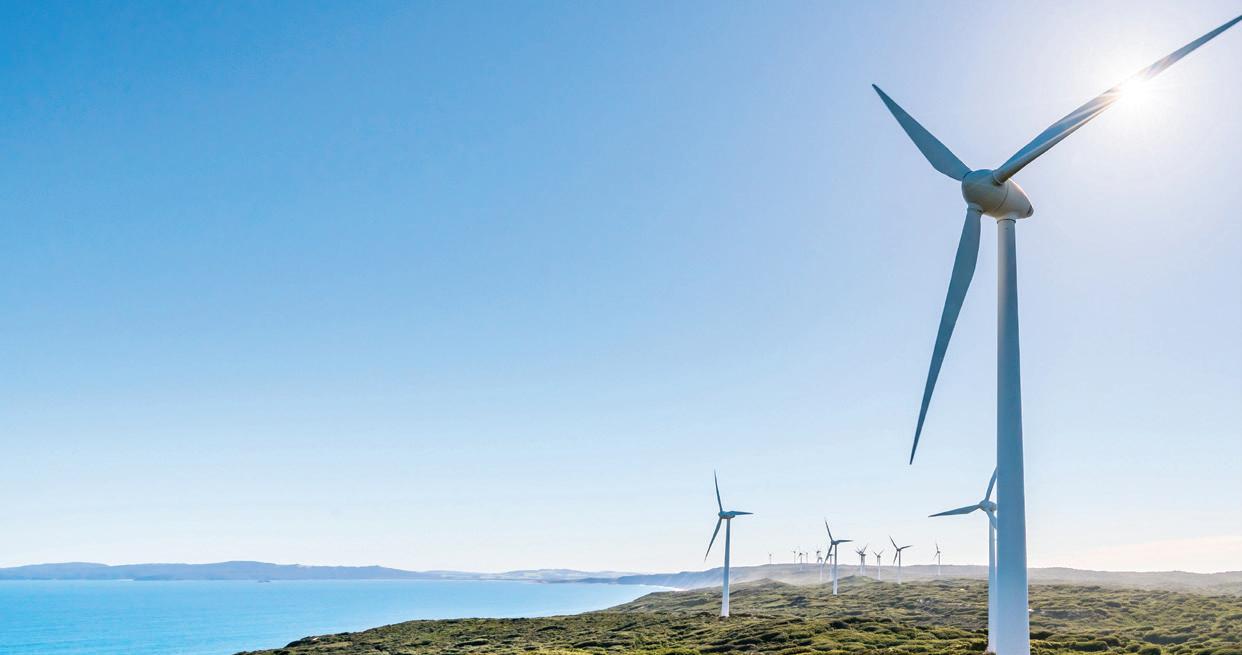
SMART
The energy transition is driving more efficient and sustainable operations in the utilities industry. Infrastructure and network management is complex, with digitisation and smart grids transforming the sector around the world – making remote asset management and monitoring vital.
It has been estimated that over 80 per cent of network faults can be attributed to short-term ‘transients’ in supply from disrupted powerlines. Service disruption not only impacts operations, but increased downtime can result in financial penalties, customer dissatisfaction and high expenditure to establish and resolve the problem. To combat this, utility companies are segmenting their distribution networks and using innovative technology to isolate faults and remotely monitor and manage the service.
Ergon Energy maintains and manages the regional electric distribution network across Queensland, providing energy for more than 720,000 homes and businesses. Ergon operates in the most remote and isolated parts of the state, areas in which traditional connectivity methods, such as cellular and terrestrial, are limited or not available.
Along the 160,000km network, Ergon Energy has hundreds of reclosers capturing data 24 hours a day. For optimum functionality, the AST Group provides the reclosers with continuous, real-time connectivity to ensure instant control in case of an outage or disruption to the powerlines. These can be triggered remotely and provide data back to the operations centre, meaning Ergon Energy can prioritise restorative activities, reduce customer outage time, reduce the risk of revenue impact from outages and minimise the potential for cascading infrastructure damage.
A leading energy provider delivers power to almost 250,000 residents in Australia’s Northern Territory – resources are extracted via an unmanned offshore wellhead platform. It is essential that the onshore staff have the ability to connect to the offshore facility to access data and status.
on’ BGAN back-up connection, ensuring robust delivery of telemetry from systems aboard the unmanned platform back to the onshore gas facility, in line with the mission-critical nature of the customer’s communication link should the VSAT fail.
AST is a global connectivity provider that enables you to take control of your network, empowering you with 24/7 connectivity to your critical
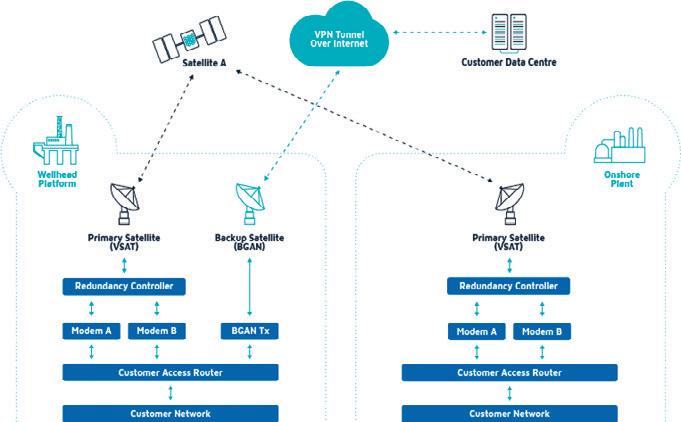
Through a resilient VSAT solution, AST provides the company with remote monitoring and control, empowering onshore employees with real-time access to critical data from the offshore platform including weather conditions and the latest system status. Immediate access via this connection enables proactive decision-making and supports improved resolution times to maintain service delivery and optimise system uptime. This is supported by the Cobham Explorer 700 which provides an ‘always
infrastructure, assets and people from anywhere in the world. We take a consultative approach to ensure assets remain operational and at maximum efficiency, whilst providing upgrade paths for communications infrastructure as technology advancements become available.

Digitisation and Smart Grids are emerging across the globe, the ability to remotely monitor assets is vital. Take control of your network with 24/7 connectivity to critical infrastructure, assets, and people from anywhere in the world.
P
Terminal and asset management
Monitor and manage valuable assets in remote locations, improving productivity and system uptime.
P P
Fault detection and response
Seamless connectivity to sensors and reclosers enables asset management over-the-air improving resolution and response times.
Connected workforce
Ensuring remote teams can communicate in real-time, receive instructions and technical specifications 24/7.
Save costs and improve safety with remote vehicle tracking – access location, fuel consumption, speed, routes and maintenance.
Enhanced visibility and data access reduces the need to travel and deploy engineers to remote locations – reducing your carbon footprint.
By 2030, 25 billion IoT devices worldwide 1 will deliver trillions of data points, powering Industry 4.0 and the associated productivity, efficiency and profitability gains. Yet, processing and storing trillions of data points is not efficient.
The next generation of IoT devices deliver insights, not data points. Report by Exception (RBE) in IoT is gaining traction; a smart IoT device can adapt to the application, process data locally, execute local control and report insights.
Through adaption, the IoT device collects sets of measurements to gain insights. When measuring asset utilisation, simply monitoring a data point like running status may create 1,000 reports a day. With insights, however, the device also collects data on speed, temperature, vibration and acceleration. Then, thanks to edge processing, it can send fewer messages summarising work/idle/downtime and predictive maintenance/failure alerts.

Similarly, local control proves useful in an IoT device. In a vacuum sewer site for instance, an IoT sensor monitors level, pressure and valve status, whilst an intelligent IoT device reports abnormal situation insights like stuck valves, and can control the valve itself.
Other RBE benefits include lower data costs, less bandwidth and longer battery life. Combining insights on your server reveals early failures undetectable by humans so ensure you own your IoT data, and it is delivered to your server economically. To be ready, select IoT devices that adapt to your application, control and process data locally, and send insights to your server.
Senquip’s programmable IoT telemetry devices connect to industrial sensors and send processed data to your server.
1 Source: https://www.statista.com/statistics/1183457/iot-connected-devices-worldwide/
OPEN CHANNEL & PIPE FLOW MEASUREMENT, SPECIFICALLY MADE FOR IRRIGATION
• Open channel & pipe flow measurement
• Ground water runoff
• Abstraction monitoring & verification
• Farm turnouts & distribution points
• Blockage/leak detection
• Micro irrigation systems
Contact oceania@pulsarmeasurement.com or +61 428 692 274 today to find your perfect measurement solution.




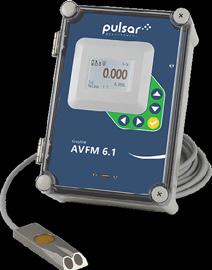





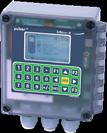


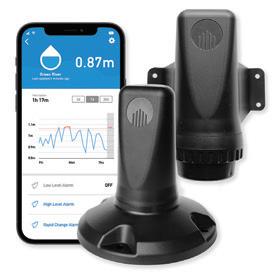
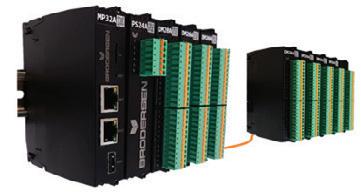

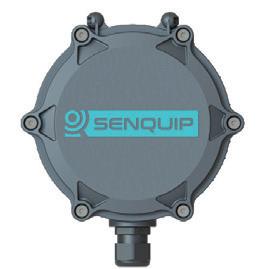



Features:
■ Up to 7 metre range
■ 10 year battery life
■ Cellular or Sigfox Connectivity
■ High, low & rapid change alarm
■ Quick setup via Bluetooth app or online dashboard

Features:
■ Exceptional security
■ Flexible, future proof platform
Applications:
■ Sewer/Stormwater/Culvert/Channel monitoring
■ River & Stream Flood Warning
■ Dams & ponds
■ Tank Level (water & chemical)
■ Waste liquids
■ Mosquito management
■ Hot swappable, self-discovering Smart IO cards
■ Huge range of protocols
■ Smart device integration with HTML5 web functionality
■ CPU, PSU & communications redundancy options
■ Now with 4G LTE & CAT M1 modem options
Features:
Applications:
■ Water/wastewater
■ Power
■ Gas
■ Rail
■ Transport
■ Mining & defence
■ Scripting engine for basic control, decisions & derived alarms
■ Cellular/Wifi/Bluetooth
■ Analog/digital inputs & outputs
■ CAN-Bus, MODBUS, RS232, RS485
■ Up to 10 year battery life
■ External/solar power options
■ Built in temperature, vibration, tilt, voltage & GPS
■ Bluetooth sensor connectivity
■ Geofencing/asset tracking
SR+ Features:

■ Class leading security, IP functionality & RF performance
■ Blistering speed – 290kbps @ 50khz 256QAM
■ Redundant comms options

■ Web server proxy technology from anywhere in the network
LTE Features:
■ Environmental substation hardened to IEEE 1613 class 2 & IEC 61850-3
■ Shock/vibration designed to SAE J1455, EN 301 489
■ SFP - Small Form-factor Pluggable supporting both optical & copper SFP modules

With thousands of devices deployed across the water sector since mIoT’s inception, the Captis solution has become a staple for utilities and commercial enterprise clients in tracking their water usage, detecting leaks and improving processes with the capability of remote monitoring.
More recently, however, the scalability of Captis has been utilised to full advantage, with one of Australia’s largest water utilities adapting the way its Captis fleet collects data. As a tier one water utility, planning is imperative to determine the requirements of future infrastructure projects. This signified the need for a study observing the seasonal patterns of domestic water usage.
Previously, the tier one water utility would perform customer surveys and implement customer usage diaries to collate seasonal data. However, this method was open to disparities and human error, resulting in less than accurate data and questionable insights.
The Captis Pulse device was chosen for this project, offering a simple installation to existing mechanical water meters across a sample of 2,000 households, with no disruption to water supply. As a custom solution, the fleet of Captis Pulse units were configured with a high-frequency data sampling interval for two-week periods, repeated four times each year (once per season) for five years.
Due to Captis’ over-the-air configuration capability, the water utility is able to easily and remotely reconfigure its devices outside of the study periods and revert the data samples to a lower frequency once again.
At the conclusion of the first year of the study, the water utility was able to use the data collected by Captis to
refine its cost estimates and support major infrastructure decisions. The data allowed for clear direction on the size and specifications of water assets selected for new developments, as well as the timing of major works.
In addition to assisting with planning decisions, Captis also identified substantial water loss due to leaks across the water infrastructure. Rectification works were promptly scheduled, saving a significant amount of water and money for the customer and increasing overall customer satisfaction.
mIoT CEO, Paul Calabro, said, “This valued customer is now expanding the functionality of its Captis fleet to include ambient air temperature monitoring.
“This will allow it to understand consumption habits even further, by correlating water usage data with daily and seasonal temperature data.
“There really is no limit to the insights Captis can provide. We encourage our customers to engage with our team to uncover tailored solutions we can deliver for their use case applications.”

Established in 2017, mIoT, a Madison Group Enterprises business, is a pioneer in manufacturing cellular-based IoT technology that is able to be employed across a broad range of industries and applications. For more information, visit www.miot.com.au.
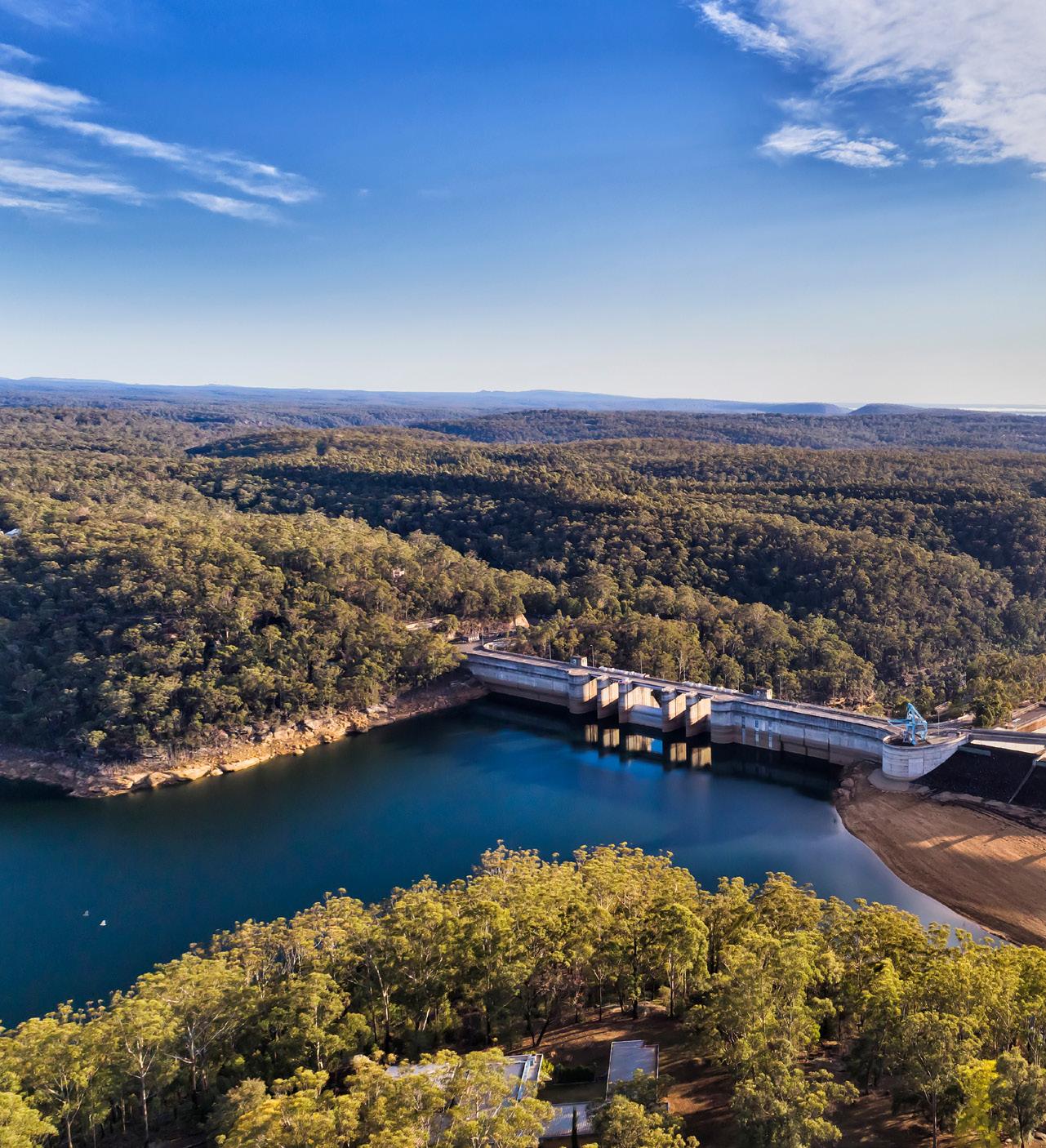
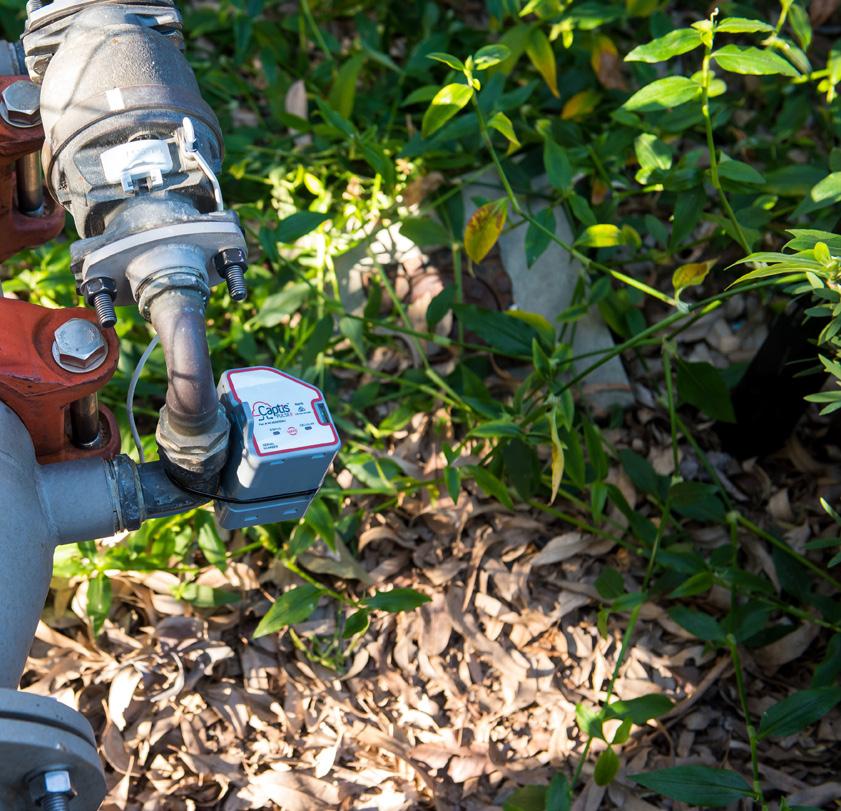
effectively detect leaks with the Captis range of IoT data loggers, Captis Connect, and Captis Cloud.
In today’s ever-evolving digital landscape, successful and trustworthy companies need to be at the forefront of cyber security whilst allowing innovation. Sydney Water’s key to successful protection of its assets, safe delivery of water services, and providing trustworthy outcomes for employees and customers is guided by three digital pillars; mission-critical services, digital convergence and resilience-ready.
Speaking at OzWater 2021, Sydney Water’s General Manager Digital, Dominic Hatfield, highlighted Sydney Water’s long-term plan to maintain security and defend against cyber threats, while continuing its relentless pursuit of digital transformation, innovation and growth.
Mr Hatfield prompted other organisations to identify their mission-critical services and assets, those that they couldn’t operate without and would never share externally, to tighten security controls around them, whilst providing an innovation sandpit that allows people to play and learn without risk to operations.
“Sydney Water’s risk appetite for technology has historically been adverse, but in contrast we desire rapid digital innovation,” Mr Hatfield said.
“It was only until we truly understood our mission-critical services that we were able to set on a journey to become more ‘cloud native’ and encourage innovation whilst maintaining high security standards for our mission-critical services.”
“Operating together as one group under one set of goals, policies and processes, we can leverage digital technologies and innovation and improve our pace of delivery.
“We can scale and respond to threats and vulnerabilities across the digital landscape consistently. It’s also essential to have a structured resilience program to be ready for and respond to when, not if, a cyber-attack occurs.
“While strong technology, monitoring and process foundations are key to being able to respond, awareness and agility across the various threat vectors are critical to being able to stay on top and react quickly.
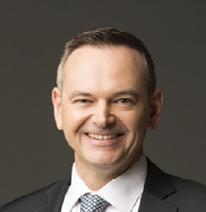 DOMINIC HATFIELD, GENERAL MANAGER DIGITAL, SYDNEY WATER
DOMINIC HATFIELD, GENERAL MANAGER DIGITAL, SYDNEY WATER
Mr Hatfield said the proliferation of unmanaged digital initiatives can leave organisations vulnerable to attack vectors.
“An attack can occur through something as simple as someone connecting to your network with a mobile phone,” he said.
“To tackle issues like this, we have been converging all our technologies, IT and OT [Operational Technology] under a single Digital Group.”
“Create layers in your cyber architecture and the processes around it to allow strategy and action to occur at a granular level.”
In closing, Mr Hatfield emphasised that cyber safety needs to be a corporate priority and at the core of a business’ design and technology, not independent or subsequent thinking.
“At Sydney Water we run regular cyber exercises to keep teams ready for anything. These can be as small as a fake phishing campaign to a full exercise where we have a concerted organised crime attack.”
Mr Hatfield added that simple education of staff can significantly improve an organisation’s resilience to cyber attacks.
“Our people need to know that protecting their identity is broader than just where they work,” he said.
“Be ambitious and be prepared, attackers will not stop, we too must be relentless in protecting our mission-critical services.”
At the foundation of Industry 4.0 (I4.0) – or the Fourth Industrial Revolution – is data and connectivity. I4.0 is not a technology, but rather a concept of how automation can be better utilised to help companies achieve operational goals that are aligned with business strategies. SICK outlines the three simple steps needed to bring your manufacturing processes in line with Industry 4.0.
The I4.0 discussion within an enterprise should begin with the business strategy. Where is the company headed? Is top-line growth the priority, and is increased capacity to meet demand the focus for operations? Is the business focused on reducing costs to remain competitive in a market with tightening margins? And what about manufacturing flexibility? How is the company addressing new market pressures, such as the ability to meet customisation demands?
Understanding these strategic objectives is vital to ensure that subsequent discussions of “how” to achieve these goals are smart. Aligning your business goals with production activities and areas that need support is what helps bring your enterprise straight into I4.0 territory.
Once you’ve reviewed your business strategies, it’s time to find the data to support these goals. Collecting, connecting and leveraging data helps you make intelligent and proactive decisions. SICK can help harness the value of all that data with superior sensing solutions that improve efficiency to reduce costs whilst increasing revenue for competitive advantages.
SICK recently worked with a customer where the plant managers didn’t know if machines were running, what temperatures the overs were at, or even how many parts were made that day. After an introduction to sensor capabilities for data collection, the customer determined what they needed was a partner who was hardware agnostic and could take data from all PLCs and sensors to move it to where they needed it.
In some cases, sensors were installed on equipment to begin data collection. In other instances, the SICK team worked to provide the data they needed from all sensors and PLCs installed at the plant, regardless of the hardware brand.
After all, I4.0 is about connectivity of technology and the generation of good data to improve operations. Not all data needs to be processed through the PLC for it to be properly harvested. This creates more flexibility in the creation of an I4.0 production line.
There is little doubt about the benefits of digital transformation – efficiencies that reduce manufacturing costs and downtime while preparing companies to be more agile and responsive to customer demands. The million dollar question remains: why are so many companies still hesitant to initiate I4.0 projects?
Many large corporations have assembled internal enterprise-wide digital transformation teams, with a subcommittee focused on smart manufacturing. Value streams are identified and projects planned, but road bumps like identifying specific solutions or providing ROI justification cause delays. In some cases, the team lacks the specific expertise to complete the analysis for specific solutions. Likewise, mid-size and smaller companies often lack the resources to allocate staff to a dedicated I4.0 team.
Therefore, many of these companies – large or small – are interested in finding a partner that can help guide them toward appropriate solutions, prepare a roadmap and support implementation.
Salim Dabbous, Director of Sensor and Safety Integration at SICK, explained, “The team at SICK is agile and agnostic enough to consult with customers on their challenges and potential needs. This helps determine the ideal infrastructure to develop the most suitable enterprise solutions that can adapt to disruptive industry needs.”



Overcome the limitations of known systems and leave the beaten path of those who follow. With SICK at your side, you are always one step ahead. Because intelligent sensor technologies enable better processes and new opportunities for your Industry 4.0 business models. Use trend-setting SensorApps, Deep Learning, and other AI applications, as well as integration and analysis solutions. Let’s go beyond together. We think that’s intelligent. www.sick.com/gobeyond
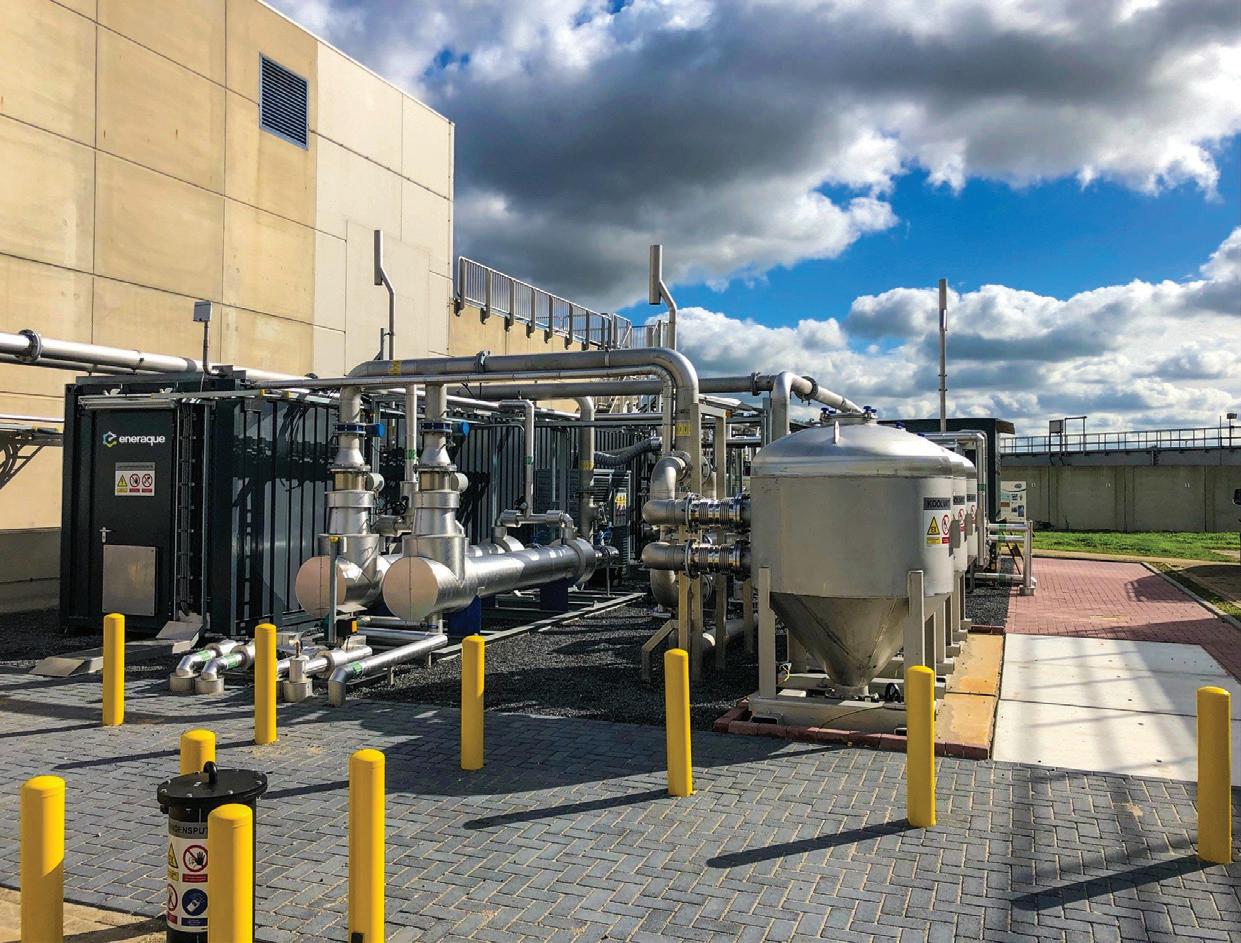
Australia is on a pathway to decarbonise the gas sector to help meet its emission reduction commitments, which can be achieved through the widespread deployment of transformational technologies including biogas, hydrogen and carbon capture and storage. Industry has responded by leading the development of research projects to demonstrate how existing gas infrastructure can play a key role in balancing energy affordability, energy security and environmental outcomes.

While most of the net-zero targets have been focused on reducing emissions from electricity use, attention has also turned to what leadership in reducing emissions from gas use looks like.
As the largest gas distributor in New South Wales –supplying more than 1.4 million homes, businesses and industrial customers – and the owner of some of Australia’s most important gas transmission pipelines, Jemena is wellplaced to initiate the transition to renewable gas and a more sustainable energy future.
Jemena Executive General Manager of Energy Networks, Shaun Reardon, said the utility sees a future where gas follows its own pathway to decarbonisation through the commercialisation of renewable gases such as hydrogen and biomethane, while continuing to play a crucial role in Australia’s energy system.
“Gas provides firming fuel for other renewable technologies such as wind and solar which aren’t available when the sun doesn’t shine or the wind doesn’t blow,” Mr Reardon said.
“We also know that those industries which are hard to abate and difficult to electrify, such as manufacturing, will continue to rely on gas as a feedstock for their operations.
“In addition to these domestic functions, gas will play an important role on the global stage as it replaces coal in developing economies.
“With this in mind, we’re excited about the prospects of a renewable gas export industry and believe Australia is well-placed to develop and benefit from such an industry.”
As the name suggests, renewable gas is made from renewable sources, for example, solar energy and organic waste. Jemena is investing in several renewable gas initiatives, which includes significant trials and development work in:
• Biomethane, which can be produced and captured from organic and agricultural waste
• Hydrogen, produced through a process of electrolysis which uses renewable energy sources, like solar and wind, to split hydrogen from purified water, creating a fuel source
Renewable gas can be easily blended into the current natural gas network, and then distributed to homes, businesses and communities using existing infrastructure,
saving billions of dollars of investment. Hydrogen can even be used in the transport sector as an alternate fuel type.
In April 2021, Jemena announced its ambition to achieve net zero emissions by 2050, followed by a statement in May calling for a Renewable Gas Target as a means of stimulating a renewable gas industry.
Jemena’s Managing Director, Frank Tudor, said a Renewable Gas Target would likely replicate the success of the Renewable Energy Target (RET), which helped to spur the development of renewable technologies in the electricity sector.
“This is the jump-start the gas sector needs to truly commercialise zero-emission gases such as hydrogen and biomethane and make them available to Australian homes and businesses at scale,” Mr Tudor said.
“By decarbonising our existing gas infrastructure, we can avoid unnecessarily building new alternative forms of energy infrastructure, which will have a significant impact on customer bills.
“In the short term, this will make the transition to a lowcarbon future seamless and means Australian homes and businesses can continue to use their gas stoves, heaters, and other appliances.
Mr Tudor said a subsidy in the order of $3-15/GJ could facilitate the entry of significant amounts of renewable gas into Australia’s gas networks, and is much less than the subsidy offered under the RET to the electricity sector, which was the equivalent of $22/GJ.
“We believe a Renewable Gas Target could see up to 9PJs of zero-carbon gas injected into Jemena’s New South Wales gas distribution network by 2030. This would remove around 464,000 tonnes of carbon from the atmosphere each year –the equivalent of over 200,000 cars – and help New South Wales achieve a 10 per cent renewable gas target. Our initial analysis has found that this can be done at an estimated cost of around $15 for a typical NSW household.”
Mr Reardon added, “We believe that renewable gas not only provides a solution to the energy trilemma of reliability, affordability and sustainability, but by injecting renewable gas into our existing gas infrastructure, Australian energy consumers will save between $12-14 billion per annum in ongoing capital and maintenance costs from 2050 (compared to full electrification).
“By keeping gas in our energy mix, we are also continuing to provide our customers with choice over how they power their lives, as well as ensuring that we are able to respond to changes in the energy market quickly and effectively.”
For distribution networks such as Jemena, the renewable gas transition means working to develop new technologies to deliver fuel diversity to the market.
“Currently, we are working through a number of trials to understand the interaction between renewable gases and the existing gas grid,” Mr Reardon said.
“We believe that there is great opportunity for renewable gases to be blended into the existing gas network at different percentages and are particularly excited by the applicability of biomethane which can be injected into the gas grid at high levels without any infrastructure changes being required.”
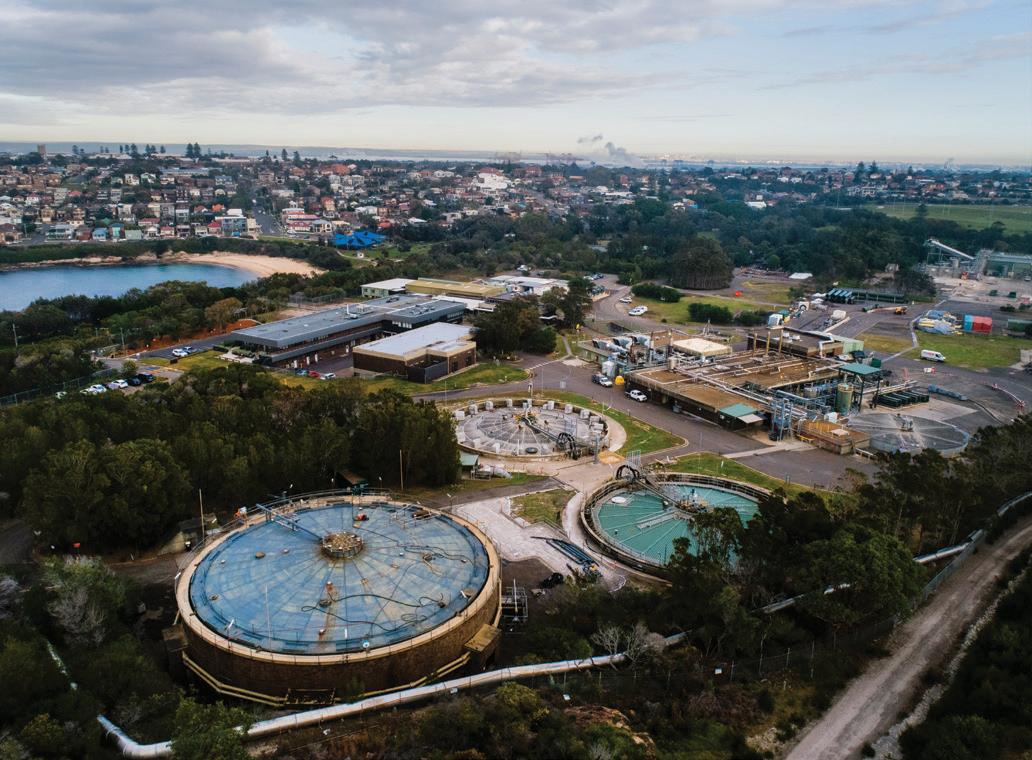
The $15 million Western Sydney Green Gas project is a five-year trial that will convert solar and wind power into hydrogen gas, via electrolysis, which will then be stored for use across the Jemena Gas Network in New South Wales, the biggest gas distribution network in Australia. If the demonstration to power 250 homes and a hydrogen vehicle refuelling station is successful, Jemena will look to expand it across the NSW network.
The project is co-funded by Jemena and the Australian Renewable Energy Agency (ARENA) – the government agency’s largest investment in hydrogen technology to date.
As part of the project, Jemena purchased New South Wales’ first electrolyser which converts solar and wind power into hydrogen gas. The 500kW electrolyser was developed in Belgium and Canada by Hydrogenics and was brought to Australia by renewable energy systems specialists ANT Energy Solutions.
Construction of the site commenced in early 2021 with the first green hydrogen produced in May 2021 as part of the electrolyser safety testing in the lead up to commissioning. Hydrogen will begin being blended into the Jemena Gas Network in New South Wales in the second half of 2021.
“Our customers are telling us they want to be able to continue to use gas for their cooking, heating and hot water, but they are also concerned about climate change and want the option to use zero-carbon and carbon-neutral technologies,” Mr Reardon said.
“The Western Sydney Green Gas project is a first step in understanding how hydrogen can be used at scale across the New South Wales gas distribution network. It is Australia’s

most comprehensive renewable hydrogen demonstration project to date.”
The project will also support refuelling for public and private transport by making renewably-generated hydrogen available to the vehicle industry.
In August 2020, Jemena committed, through a Memorandum of Understanding with Hyundai Australia and Coregas, to produce and deliver hydrogen gas to Hyundai’s Macquarie Park headquarters in 2021. As part of the deal, Coregas will provide the compressor, pipework and connectors for filling and discharging hydrogen.
Fuel cell electric vehicles (FCEVs) combine hydrogen and oxygen to produce electricity, which runs the motor. With a range of approximately 650km, hydrogen-powered FCEVs can travel much further than pure electric vehicles.
Jemena is also partnering with Sydney Water to generate biomethane at the Malabar Wastewater Treatment Plant in south Sydney.
This project will see biomethane blended into the gas network for the first time in Australia with an initial capacity of 95 TJ of renewable green gas per year, which is enough to meet the gas demand of approximately 6,300 homes. This has the potential to be scaled up to 200 TJ per year, enough to meet the gas demand of around 13,300 homes.
The $14 million Malabar Biomethane Injection Project is jointly funded by Jemena ($8.1 million) and ARENA, who provided $5.9 million in grant funding.
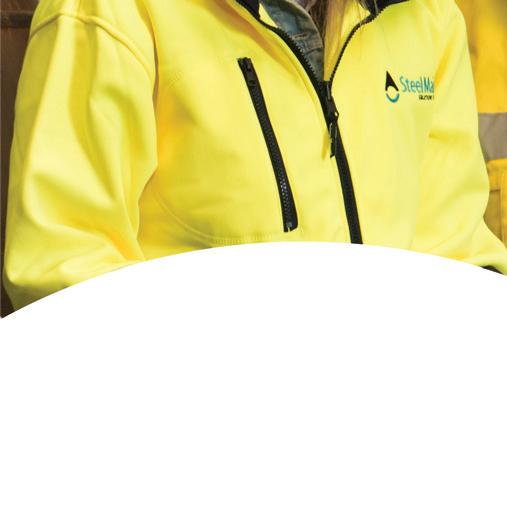









Steel Mains is proud to be Australia’s largest manufacturer of Mild Steel pipes for the water industry. We continue to manufacture Sintakote® Steel pipe with manufacturing facilities located in both Victoria and Western Australia. Materials and labour required to manufacture our pipes are sourced locally, ensuring our pipes enjoy greater than 98% local content.
Local stock, delivery and design & installation support mean that Steel Mains is able to reduce all your pipeline supply risks. Local manufacture and product Standardsmark certification provide you with that additional supply security, with all aspects of our manufacturing meeting Australian quality standards. When the lifespan and security of your asset are important to you, Steel Mains Sintakote pipeline systems are your ideal choice for your next pipeline project.


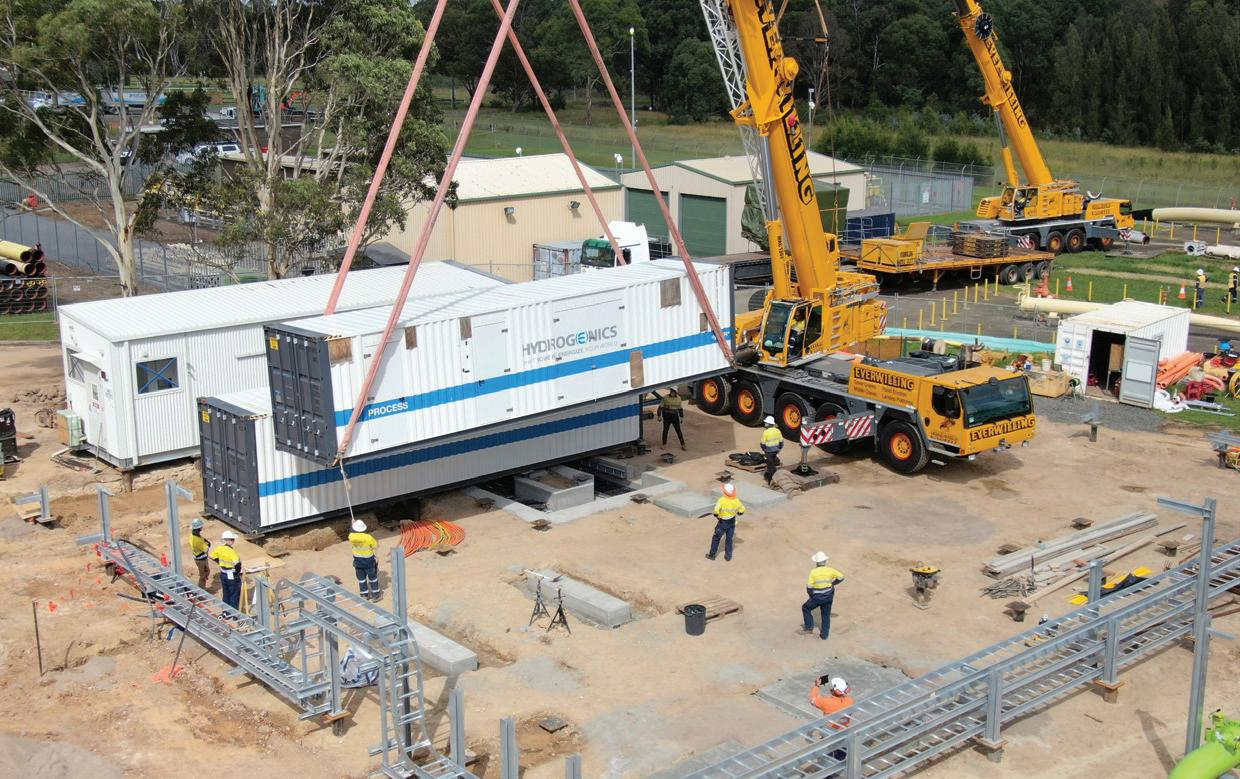
The Malabar Biomethane Injection Project will involve the use of a biogas upgrader facility which will process raw biogas from the Anaerobic Digestion (AD) plant at the wastewater treatment plant by removing non-methane gases, until the resultant gas stream meets the Australian Standard (A4564:2020) gas specification in preparation for injection into the existing gas network.
“Circular economy opportunities have the potential to create jobs, support business growth, and enhance energy security, with no impact to the network or customer appliances,” Mr Reardon said.
The facility is expected to produce the first biomethane for injection into the Jemena Gas Network in 2022. The project will also investigate renewable gas trading opportunities linking gas users with renewable gas production facilities. Such trading mechanisms would support a highly replicable ‘green gas’ market across other gas networks.
If successful, the project is expected to support wider uptake of biomethane technology by the Australian waste industry with the application expected to have broader application than just the wastewater treatment sector.
The Malabar Biomethane Injection Project will also demonstrate the first application of the recently announced Renewable Gas Certification Pilot – an initiative developed by Jemena, NSW renewable energy accreditor GreenPower, and Energy Networks Australia.
The pilot will be delivered by GreenPower over a minimum of two years and will inform the development of a permanent certification scheme for renewable gases.
“We are driving the call for a national certification scheme because our customers have told us they want certainty in their ability to purchase verified and accredited zero-emission gas just as is currently the case for renewable electricity,” Mr Reardon said.
“A national certification scheme will boost industry investment in renewable gases, such as biomethane and hydrogen and make them available to Australian homes and businesses.
“In the short term, it will mean our customers can lower their carbon footprint without making any changes to the way they currently use their gas appliances.
“In the long term, it will ensure gas remains affordable through the decarbonisation of existing gas infrastructure without the need for building new alternative forms of energy infrastructure. This is an important first step towards a Renewable Gas Target.”
Unlike hydrogen, which is not yet ready for wide-scale commercial use, anaerobic digestion is a ready-to-use technology that is already producing biomethane by recycling organic wastes.
When asked why all the hype around hydrogen when biomethane has better potential to decarbonise the gas supply and achieve net zero in the short term, Mr Reardon said, “We believe no technology should be taken off the table as a means of ensuring an efficient transition to a low-carbon future, and are working to understand where they are best applicable through our trials.
“Projects like our Western Sydney Green Gas project and biomethane trial are designed to understand exactly what percentages of renewable gases can be blended into the gas network and what the implications of doing this would be.
“While our projects are still in the development phase, we know from overseas experience that biomethane can be injected into the gas grid without requiring any infrastructure or appliance changes.
“Internationally, we’ve also seen hydrogen blended with biomethane and renewable gas at varying levels (some as high as 30 per cent) before network changes are required. As we commission the Western Sydney Green Gas project we will have a clearer understanding of local conditions.”



As the original equipment manufacturer of Allight towers and Sykes pumps in Australia, and the only distributor of Perkins engines and FG Wilson generators, AllightSykes works with our customers throughout the entire product life cycle from concept to aftersales care.
We maintain a strong local Australian footprint with two well established manufacturing facilities and five service branches. Our Australian made products are distributed throughout the world, and because we design and manufacture our own products, genuine parts are always avaialble.

Every day, AllightSykes is supporting businesses to deliver critical services to our communities. From civil through to marine, Australia to Ghana, you’ll find AllightSykes products everywhere.
With over 50 years of innovative design and manufacturing of Australian-made equipment, AllightSykes has created pumps for the most challenging and diverse environments.
Sykes pumps are regarded worldwide as one of the most efficient dewatering pumps on the market.
In late 2021, AllightSykes will launch the Yakka V2 and it is packed full of new features!
The lightweight base and aluminium powder-coated canopy make the new unit a whopping 100kg lighter than the original Yakka – and it’s even easier to pick up with fork tynes built into the trailer.
The Megasorber D14 acoustic system ensures the pumps can operate in noise sensitive areas.
Powered by a Perkins 400 series engine, operating the Yakka V2 is now even easier with the control panel and throttle accessible from the outside, and for any major repairs the pump pod can be easily lifted out.
The Yakka V2 is the perfect solution for construction, civil, rental and municipal customers.
Our efficient equipment just got even better.




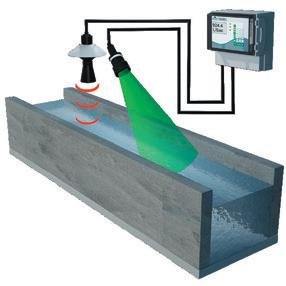
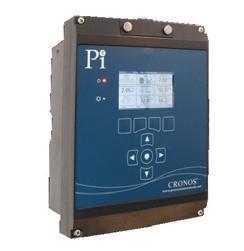
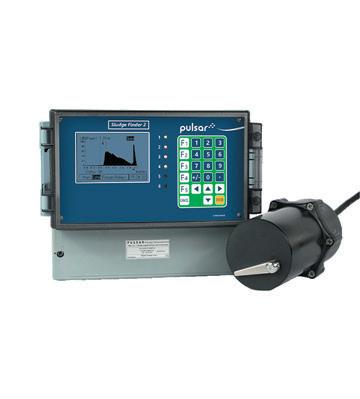




Wide-area data for proactive and operational intelligence

Alarms for levels, blockages and spills

An all-in-one solution that delivers:
Full network visibility, performance and forecasting

Fraction of the cost of traditional installations
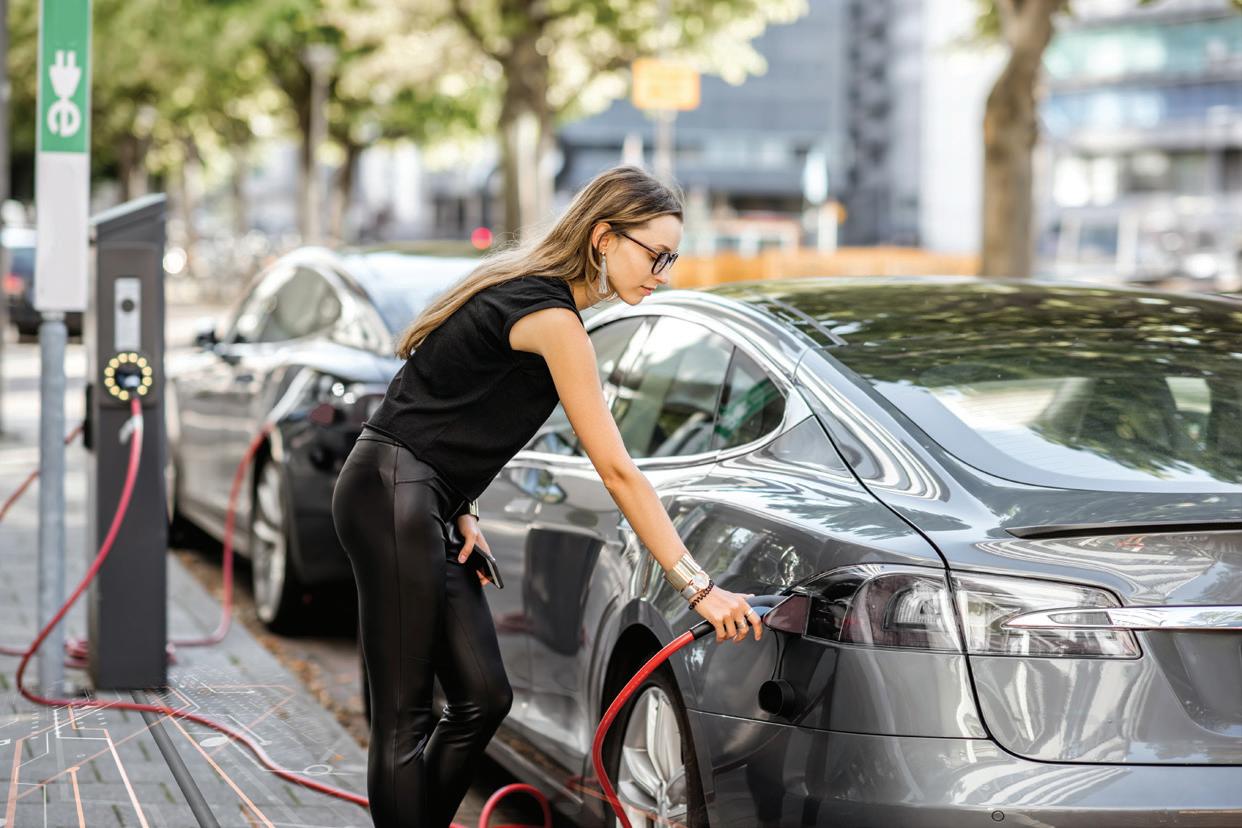
The opportunity to power passenger vehicles with renewable energy is an exciting prospect, given transport is Australia’s largest single source of emissions, but the technology is facing a significant speed bump when it comes to the availability of charging infrastructure. While Australia’s vast size poses challenges for the rollout of charging infrastructure, trenchless technology can help fast-track this process by providing a cost-effective and sustainable solution for the installation of charging stations.
The expansion of e-mobility infrastructure comes with enormous challenges, not only for power suppliers and manufacturers of the charging technology, but also for governments and consumers. To prevent a lack of charging infrastructure from becoming an obstacle to electric vehicle (EV) adoption, and ensure Australia can reduce its greenhouse gas emissions, there is an urgent need for the rapid expansion of nationwide charging infrastructure.
A number of projects and trials are improving access to efficient charging stations. The $15 million Chargefox Electric Vehicle Charging Network Project spans five states and comprises 22 locations on major driving routes. After receiving $6 million in funding from the Australian Renewable
Energy Agency, the project commenced in October 2018 and the final station was completed in January 2021.
The rollout of this network means that drivers of EVs will be able to drive between some major Australian cities without risking an empty battery, and being powered completely by locally-generated renewable energy, it puts minimal pressure on the existing electricity grid.
Australia is still limited in its public charging facilities however, and more work needs to be done to bridge the charging infrastructure gap to make long-distance EV travel a reality and reduce range anxiety.
Trenchless technology provides an intelligent, economical and sustainable solution for the rapid installation of EV

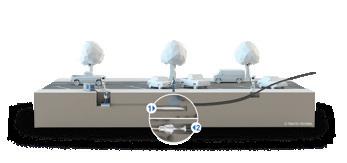
charging station infrastructure. This is because, in contrast to traditional open cut construction methods, trenchless construction methods eliminate the need to dig up the surface along the entire pipe or cable route.
The major advantages of going trenchless include:
• Valuable surfaces and resources are saved because costly excavation and restoration work are no longer necessary
• Minimal impact on local residents and businesses as a result of reduced traffic disruption and smaller construction footprint
• Short construction and set-up times enable greater efficiency and adherence to tight deadlines
• Significantly lower direct and indirect costs compared to open cut construction
• Trenchless construction methods help preserve the surrounding environment and potential wildlife habitats, as well as reducing carbon dioxide emissions, fuel consumption and noise pollution
• Reliable and compliant construction methods that have been tried and tested for decades
Considering that 80 per cent of the costs in conventional underground utility infrastructure installation projects can be related to civil engineering, it's easy to imagine the potential savings if surfaces and resources can be protected by utilising minimally invasive trenchless technology techniques.
Boosting the uptake of electric vehicles (EVs) is an important pathway to ensuring federal and state governments can achieve their climate targets. It makes all the more sense if the construction methods themselves are carried out in an ecologically sensible and less disruptive manner, and do not lead to the further deterioration of a municipality’s environmental balance.
In addition to the economic and ecological advantages of trenchless technology, its nominal community impact can make a major contribution to general public acceptance of EVs – this is important considering that Australia is lagging behind many of its international counterparts in EV sales.
Intelligent trenchless solutions are not only economical for installation of multiple charging points, but also for the construction of individual charging points; different systems


and methods can be used depending on the type and length of the individual connections to the distribution network, the capacity and also the number of charging points.
Trenchless technology offers fast and simple underground installation of the protection pipes for power and control cables, from the connection point (sub-distribution) to the charging station and between the charging stations.
With the minimally invasive keyhole technique, the construction pit can be used as the foundation of the charging station, and trenchless methods are suitable for almost all types of soil, including rock.
House connections for the power supply of the charging stations can also be installed without trenches, and the range of applications can also be expanded to charging points at hotels, shopping malls or on the street, and cables for large triple chargers, e.g. at motorway service stations.
German manufacturer TRACTO-TECHNIK develops, builds and distributes machines and accessories for the underground installation and trenchless renewal of pipelines. These trenchless technology solutions are applied for the construction of pipeline networks for water, sewer, gas, electricity, telecommunications, district heating and fibre optic networks.
Using the GRUNDOMAT soil displacement hammer, the complete range of essential services can be installed and renewed without trenches.
One of the highlights in the TRACTO-TECHNIK horizontal directional drilling machine family is the GRUNDODRILL 18ACS, which works highly efficiently in alternating soils as well as in the hardest rock, offering distinctively reduced operating costs and construction times compared to similar drilling rigs.
The cost pressures in civil engineering led to the development of another TRACTO-TECHNIK innovation: the award-winning GRUNDOPIT K, which can be used for installing, repairing and renewing property service connections via a keyhole access pit with a maximum diameter of only 650mm.
The new GRUNDOPIT PS40 is designed for the challenge of developing the urban underground network, its slim construction ideal for applications in inner city areas.
For more information, visit www.tracto.com/au.
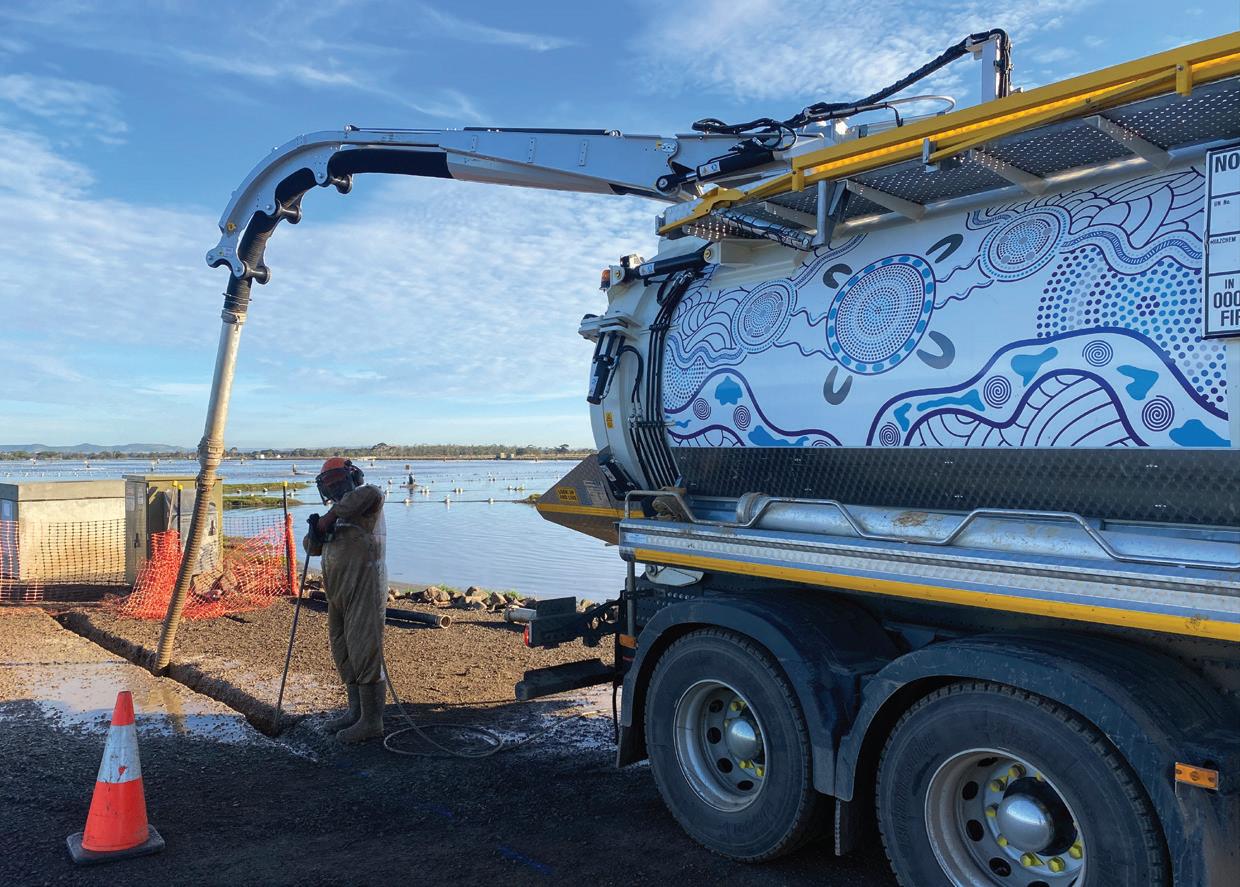
The Wara Paring (Come Walk the Path Together) Indigenous Civil Construction Project is a first-of-its-kind, 100 per cent Indigenous-owned contract services and training initiative working in the Melbourne water industry.
Its aim is to build on the successful partnerships that have led to the creation of a small non-destructive digging company and continue to expand to create safe and sustainable employment opportunities for young Indigenous Australian people.
At its heart – Wara Paring hopes to inspire other organisations to create positive and lasting cultural change.
Four years ago, Melbourne Water (MWC) embarked on a journey to create a new major capital works delivery model.
Its objective as part of the tendering process was to stimulate the marketplace to consider forming consortia that could provide a full, turnkey service (Design, Civil, Mechanical and Electrical) in the delivery of small-scale capital projects. The other prerequisites for success in the tendering process were aligned values and a passion for driving improved safety and social principles.
Aqua Metro Services (AMS) was successful in the tendering process and appointed as Melbourne Water’s delivery partner for the Small Scale Capital Program.
Melbourne Water’s General Manager Major Program Delivery, Eamonn Kelly, explained, “What impressed us in AMS’ bid was their demonstrated passion and enthusiasm for making a difference in relation to social value – and their honest approach in recognising that while they did not have a solution there and then – they were absolutely committed to working it out collaboratively with Melbourne Water.”
Immediately after, both organisations brought together their leadership teams and diversity and strategic procurement managers to develop a pioneering Diversity and Inclusion Management Plan.
A key focus of this was to create meaningful and sustainable social value and solidify the strategic relationship.
As a first step, Indigenous Cultural Awareness Training was provided to both Melbourne Water and AMS senior management by Bundyi Giilang Indigenous Education. This was facilitated by Leon Egan, and introduced facts, learnings and debate around ‘why Indigenous Australia is still where it is today’.
Eamonn Kelly said all senior management were challenged to consider the question, “What are you prepared to do to change this situation?”
“The facts that Leon Egan presented in his training were extremely confronting, sad and shocking. One was left in no doubt as to the lived experience and impact of intergenerational trauma on today’s Indigenous Australians and the significant hurdle this presents to young Indigenous Australians securing sustainable employment,” Mr Kelly said.
With a collective focus to tackle this and create real and ongoing job opportunities for Indigenous Australians, the team considered many initiatives and ideas before agreeing on a structured training program that would lead to the creation of a first of its kind, 100 per cent Indigenous-owned civil construction business in Victoria.
The initiative, named the ‘Wara Paring Indigenous Project’, set out to build a sustainable business model that could be replicated in any other market sector and would – if more widely adopted – lead to economic empowerment for Indigenous Australia.
The Wara Paring initiative has been recognised at both state and national levels, winning the 2021 Australian Water Association Organisational Excellence Award and receiving a high commendation from the 2020 World Commerce and Contracting Innovation and Excellence Awards for Delivering Social and Economic Benefit.
This acknowledgement affirms the importance of supporting the development and creation of Indigenous business, providing Wara Paring Civil with exposure across the water industry and promoting opportunity for business growth.
Finally and significantly – it highlights the social value that can occur between water corporations and their suppliers when there is genuine commitment to creating positive cultural change.
AMS Services Manager, Soyun Punyadasa, said the creation of Wara Paring is an example of what can happen when like-minded and innovative organisations join forces to support social value through meaningful programs.
“The Wara Paring team are blazing a trail to help create employment for Indigenous Australians. We hope that other organisations can follow this example to create a legacy of positive change in our country.”
Melbourne Water have ensured that Wara Paring have a robust pipeline of work to support their early development and growth which will lead to broader opportunities across the Victorian and national water industry.
For Melbourne Water’s capital delivery program, trenchless technology and non-destructive digging presented a clear and long-term pathway of work with relatively low risk and ample scope to drive efficiency in productivity.
It also offers potential growth into symbiotic activities such as cleaning and road sweeping, GIS plotting and traffic management.
There are many advantages of creating a 100 per cent Indigenous-owned business such as Wara Paring Civil. The most significant benefit is that Indigenous-owned businesses are 100 times more likely to hire Indigenous people, as they
feel culturally safe. Currently, Aboriginal and Torres Strait Islander people make up just 1.6 per cent of employees across the Victorian water sector.
The owners of Wara Paring Civil – Leon Egan, Daniel Charles, David George and Cory McGrath – are committed to creating an enduring business to service the water industry and provide training and development to young Indigenous workers in a work environment that is culturally safe and supportive.

FROM LEFT TO RIGHT – DAVID GEORGE (WARA PARING), MARCUS WADE (AQUA METRO SERVICES), EAMONN KELLY (MELBOURNE WATER), DANIEL CHARLES (WARA PARING), SOYUN PUNYADASA (AQUA METRO SERVICES), AVANTI GOSAVI (AQUA METRO SERVICES), STEPHEN MORRIS (AQUA METRO SERVICES), EDYTA GRZYB (MELBOURNE WATER), GREG CHALMERS (AQUA METRO SERVICES), LEON EGAN (WARA PARING), NIRU GOSAVI (MELBOURNE WATER) AT THE 2021 AUSTRALIAN WATER AWARDS.
Wara Paring Civil’s Managing Director, Leon Egan, said that this opportunity will make a real difference to Indigenous communities.
“We are very aware of the responsibility that has been afforded to us as owners of an Indigenous business and excited at this opportunity. We see ourselves as strong role models within our community.
“Our unique experience has enabled us to develop the core capabilities required for business and employee success - along with a shared dream of creating meaningful and sustainable outcomes for Indigenous Australia.”
To that end – Kinaway, the Victorian Aboriginal Chamber of Commerce, has adopted the Wara Paring training plan as the model for creation of all future Indigenous start-up businesses.
This first-of-its-kind, innovative business partnership between Melbourne Water, Aqua Metro Services and Wara Paring is going from strength to strength and hopes to serve as a catalyst in galvanising organisations across Australia to develop similar programs that address social inclusion and support Indigenous businesses to thrive and grow.
Maxibor is an independent, Australian-owned Horizontal Directional Drilling (HDD) design and construct company with operational bases in Queensland, New South Wales and Victoria. Maxibor provides its HDD services across the water and sewer, rail, power, gas, telecommunications, mining defence, fuel, sea cable, data centre and renewable sectors. It has one of the largest HDD fleets in Australia, including maxi-rigs, midi-rigs, rock rigs and smaller rigs with capacity to complete pipeline bores ranging from 20m to 3km in length and 63mm to 1.6m in diameter.
Maxibor is increasingly being called upon to help provide intelligent and creative solutions to complex problems faced by asset owners. Intelligent HDD design solutions offer significant project and whole-of-life asset economies as well as helping to preserve the environment and cultural heritage.
Maxibor’s CEO and owner, Rodney O’Meley, said, “Australia is poised to take greater advantage of HDD as a solution to many of the challenges associated with pipeline projects. It is just a matter of getting the right minds together at the right stages of a project so that the full range of solutions can be considered, including HDD.”
Maxibor is seen as a dynamic leader in the HDD industry, providing significant value to asset owners and principal contractors through a cooperative approach at both the design and delivery stages of projects. Disciplined design processes and development of comprehensive HDD construction methodologies by its experienced personnel helps to identify and address installation risks up front, and ensure the high-quality, safe, on-time and on-budget delivery of projects.

an electric Gallagher HDD660e, two Vermeer 100x120s, seven smaller Vermeer, and Ditch Witch rigs with hard rock capability. Through its long-term alliance partners, it also has ready access to other maxi-rigs should the need arise.
Maxibor’s cooperative approach has been recently demonstrated on the design and install of a new 400m section of water pipeline between Lamb and Macleay Islands in Queensland. With the existing pipeline slowly leaking, Maxibor was engaged by Christopher Contracting to help Seqwater ensure continued service to the Lamb Island community.
Maxibor’s experience was able to quickly provide a design which solved the problem and minimised costs. Working seven days a week, Maxibor completed the works well ahead of schedule, much to the satisfaction of the contractor and asset owner and to the relief of the Lamb Island community.
One of Maxibor’s Vermeer 100x120 midi-rigs was used to complete the pilot hole and its Vermeer 330x500 maxi-rig was used to ream the bore hole to a 550mm diameter and pull the DN400mm PN20 pipe through. The ground conditions varied between clay, bluestone with quartz, mudstone and siltstone.
An exciting recent addition to the Maxibor fleet has been its electrified Gallagher HDD660e maxi-rig (The Hulk). The electrified spread comes with its own substation which also connects to two powerful Gardner Denver PZ9 pumps and a large Gallagher mud recycling system – capable and tested to over 4,000L per minute pumping capacity if required. The Hulk drilling rig is capable of extended reach drilling solutions in excess of 3km from a single setup location and, depending on ground conditions, bore diameters of up to 1.6m.
Stephen Loneragan of HDD Engineering, and one of Australia’s leading and original HDD design engineers with experience in complex multidisciplinary global projects, said, “Electric spreads provide new design and delivery solutions in Australia especially for complex capital city water

and sewer, power and gas projects where setup, noise, emissions, congested services and ground conditions all present challenges which need to be overcome.”
Matt Watkins of Pioneering Consultancy, who has been assisting Maxibor over the past year with its strategic positioning of the trenchless market, sees the electric trenchless technology as being a significant market differentiator for Maxibor.
“This electric solution is now well established in Europe and North America. The Hulk brings to Australian projects the opportunities for both emissions and noise reductions, much to the satisfaction of asset owners and the local community who increasingly want projects delivered in a sustainable and environmentally friendly way.”
» Quality and collaborative HDD design and construct services
» Expertise to advise at the right time in the project delivery cycle
» Gas, water and sewer, rail, road, power, telecommunications, mining, residential development and renewables
» Maxi-rigs capable of long and wide diameter bores in hard rock and difficult conditions
» Build a future we all look forward to.
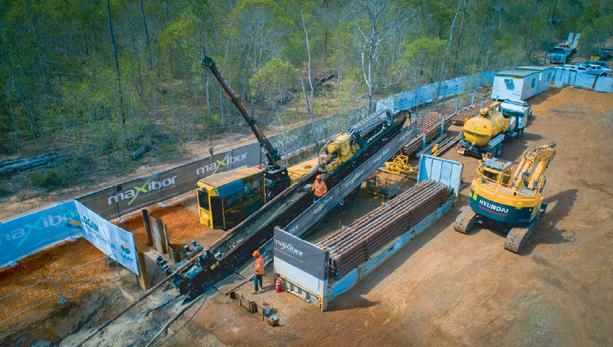
The Australian Government has pledged to reduce greenhouse gas emissions to 26 to 28 per cent below 2005 levels by 2030.
Among other things, it is relying on low-emission technologies. Primus Line ®, the technology for trenchless rehabilitation of pressure pipelines, can make a decisive contribution here.
Australia’s emissions reduction target is large, because the population and economy are growing rapidly. This also means that the challenges for the water, gas and oil supply networks are becoming ever greater and their reliability ever more crucial.
Trenchless construction with Primus Line can do both: it extends the lifetime of the pipeline by at least 50 years, and it significantly reduces the ecological footprint compared to conventional open trench construction methods.
When calculating a project’s carbon footprint, a lot of factors play an important role such as:
• The amount of material to be removed
• Fuel consumption of the construction equipment
• Location of the construction site and the required transport routes
• The number of necessary truck loads
• The soil type
• The number of excavations required for connection or valves
Primus Line installation partner Sinzatec, from Spain, determined the savings on a project near Madrid. Due to the geology of the terrain, an open construction method to renew the DN 400 drinking water pipeline would have been difficult, costly and



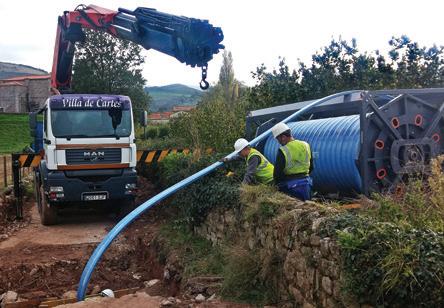
time-consuming. Thus, the 3.4 km long asbestos cement pipeline was finally rehabilitated with Primus Line in only four days.
The analysis showed a significant reduction of approximately 86 per cent in carbon emissions and a huge saving in fuel consumption (minus 87 per cent). This was mainly due to the lower number of truck loads required (minus 99 per cent) and the reduced use of construction machinery and equipment.



• Savings of up to 40% compared to open trench
• Renewal of up to 500 m per day
• Bends of up to 45°
• Small pits, minor installation footprint
Raedlinger Primus Line Pty Ltd.
Sydney, NSW 2000 | Australia info@primusline.com
www.primusline.com





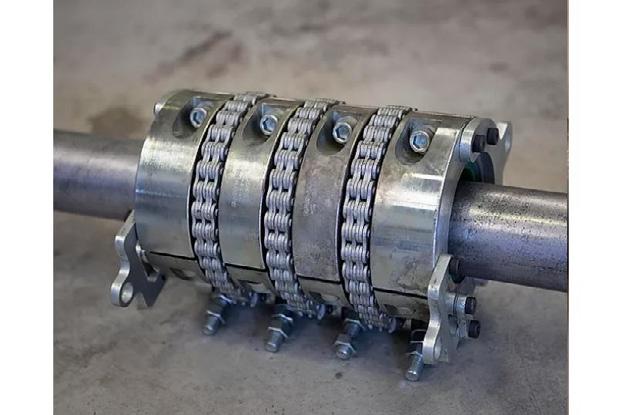


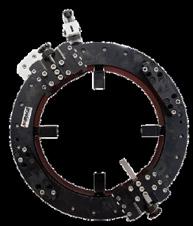


Australia’s recycling and resource recovery sector is undergoing major transformation, driven by global market pressures. A new Clean Energy Finance Corporation (CEFC) report has identified an upside to this upheaval: a potential investment pipeline worth billions of dollars.
Developed by the CEFC with global engineering and consultancy leader Arup, Energising resource recovery: the Australian opportunity analyses the role of the sector in Australia’s transition to a low emissions economy. It found scope for significant growth, estimating the sector has the potential to reduce landfill emissions by as much as 60 per cent based on current forecasts and help abate more than 3 million tonnes of carbon dioxide equivalent of methane emissions from landfill every year.
In addition to these important environmental outcomes, a thriving waste recovery sector can deliver substantial economic benefits. New and expanded infrastructure for these projects in Australia could generate between $4 billion and $7.8 billion in new investments in the period up to 2025, creating up to 9,000 construction jobs, 2,600 indirect jobs and as many as 1,400 direct and ongoing jobs across Australia.
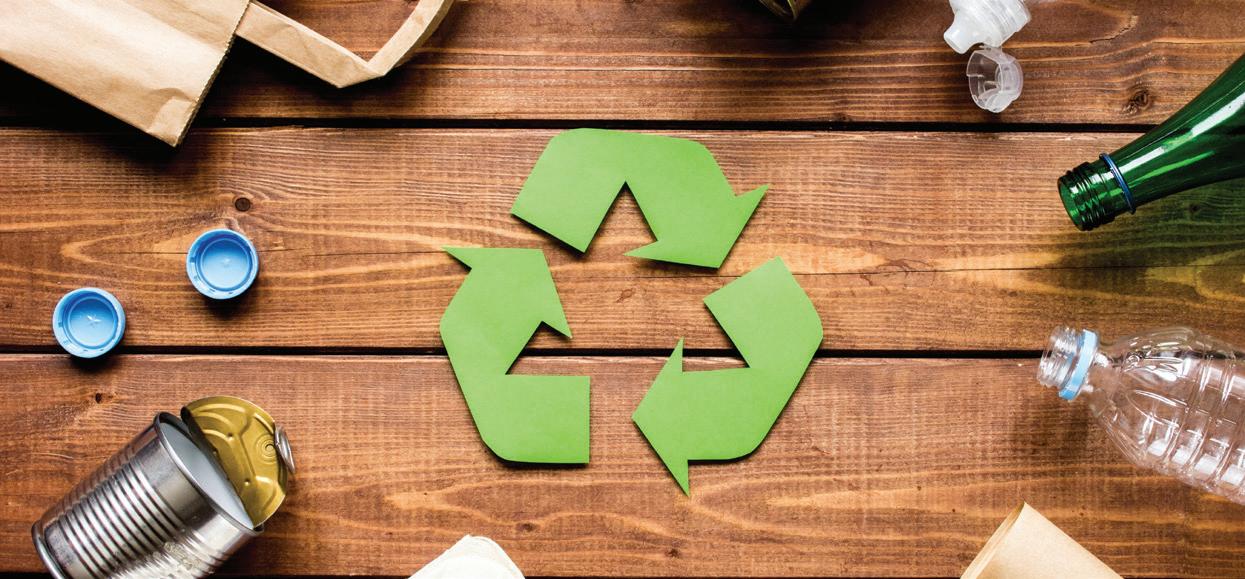
The announcement by China in 2017 of its National Sword policy, which dramatically reduced the contamination thresholds for imported solid waste from 5 per cent to 0.5 per cent impurities, put global reliance on international waste commodity markets under the spotlight.
The disruption that followed galvanised an Australian push for a more circular and sustainable approach to waste management, with responsibility for waste materials and resource recovery moving to the domestic economy. Since then, there has been significant government investment and policy development to support the sector. However, the looming possibility of a further China ban on the import of all solid waste points to an urgent need for this work to continue.
Emerging constraints on landfill capacity around Australia’s metropolitan centres and increasing landfill levies are clear commercial drivers for thermal energy recovery infrastructure. According to the report, there is a need for strong investment in recycling and resource recovery infrastructure to help meet Australia’s climate targets.
On behalf of the Australian Government, the CEFC has committed more than $400 million to the bioenergy, recycling and energy from waste sectors, with a total investment value of $1.7 billion. The CEFC also
operates the Australian Recycling Investment Fund, with access to $100 million in CEFC finance to invest in commercial, large-scale projects which use clean energy technologies to support the recycling and resource recovery sector and the broader circular economy.
According to the new CEFC analysis, the areas with the strongest investment potential are in large-scale thermal energy from waste facilities, which have the potential to reduce significant volumes of waste going to landfill while generating energy. Other significant opportunities are in processing organics from municipal solid waste generated by households and refuse-derived fuel facilities.
Thermal energy from waste is also a rapidly maturing infrastructure and technology option in Australia for the treatment of residual waste to create clean energy as well as reduce emissions by diverting waste from landfill.
One of the most exciting aspects of the sector is its diversity and adaptability to meet Australian markets, needs and contexts. The bioenergy and waste sectors include a broad range of feedstocks, technologies and end uses. For example, recycling is benefitting from the renewed focus on domestic opportunities and recovering more value for Australia.
There is also an increased focus on source-separation of organic waste which creates the opportunity for expanded infrastructure, including anaerobic digestion and composting, supporting emissions reduction by diverting organic waste from landfills. Bioenergy technologies like anaerobic digestion are also a very flexible energy source capable of producing clean energy. These technologies can support the decarbonisation of harder to abate sectors such as industry and manufacturing.
While the complexity of the sector may pose some challenges for potential investors and project proponents, international experience should give investors confidence that we can capture these opportunities in both metropolitan and regional Australia.
Factors critical to project success include appropriate feedstock supplies, careful site selection, a clear commitment to community engagement and importantly, the social licence to operate in the community.
Ensuring investment in mature and proven technologies, complemented by a commercial approach to infrastructure delivery and operation to underpin long-term performance, are vital to establishing an industry that can contribute so positively to Australia’s emissions reduction.
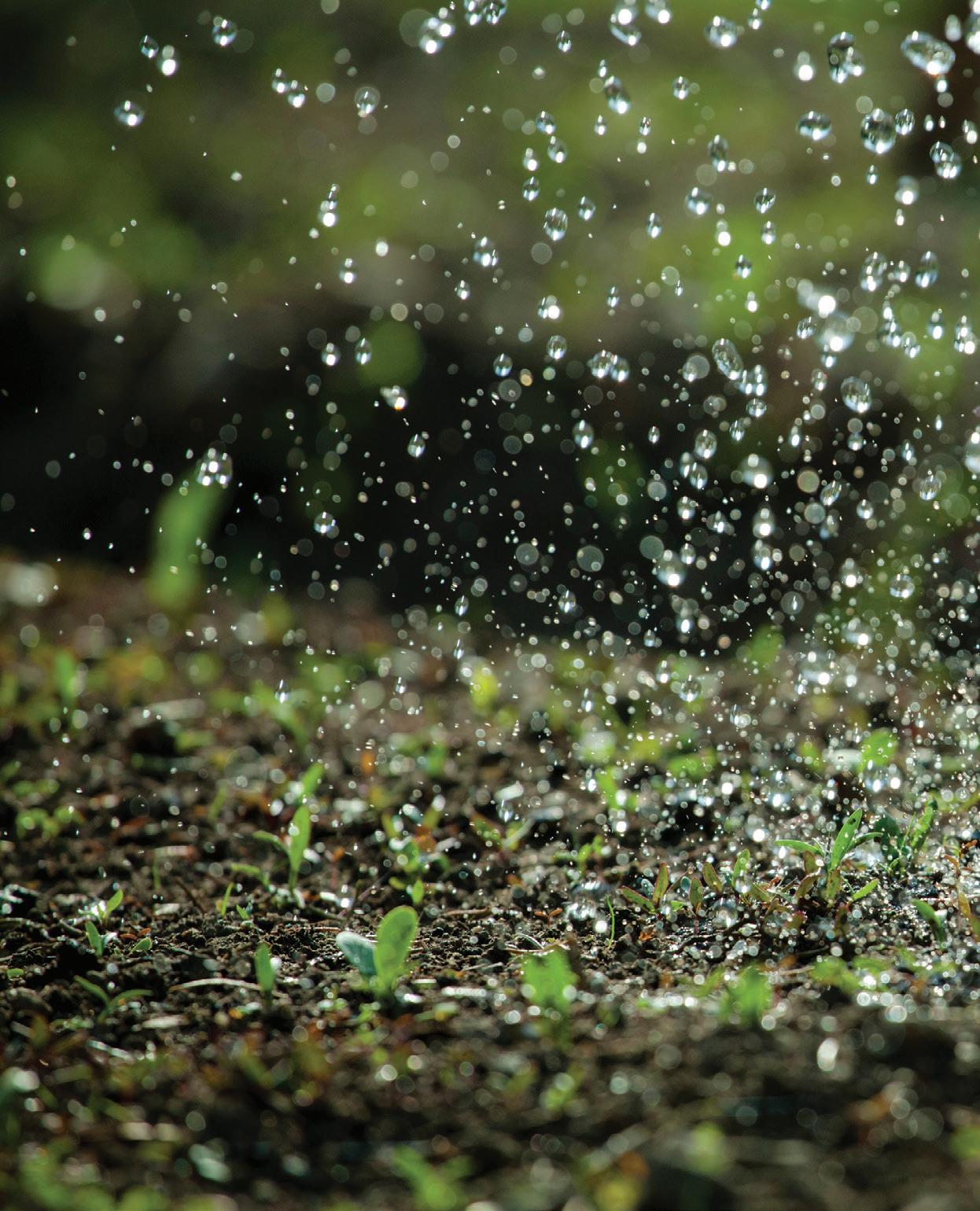
As average temperatures continue to rise, and the number of extreme heat days each year increases, keeping cool is more important than ever. In Australia and worldwide, our cities are particularly affected by hot weather, with severe public health, liveability, environmental and economic consequences. Adopting innovative smart irrigation can significantly and cost-effectively cool urban spaces, mitigating the effects of heatwaves while also saving water.
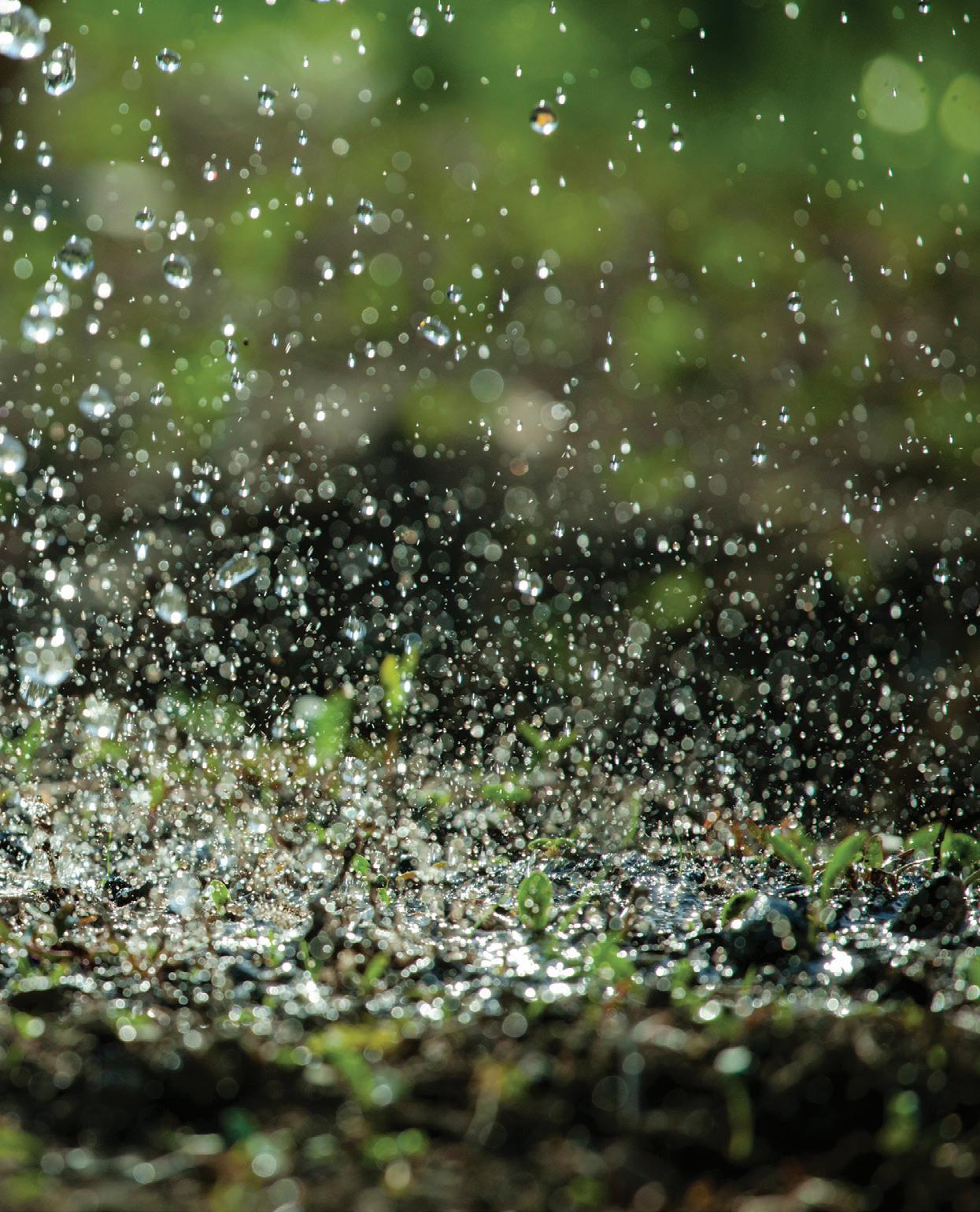
According to data from the Bureau of Meteorology, 2020 was Australia’s fourthhottest year on record, despite La Nina conditions which usually result in lower daytime temperatures. As a result of climate change, temperatures are expected to rise even further over years to come, even with strong climate mitigation action. Projections suggest that temperatures in cities worldwide could rise by up to 4°C or more by 2100, depending on emissions scenarios.
Australia is already a land prone to heat and drought, with our human population, wildlife and economy feeling the effects of heatwaves each year. These include an estimated 36,000 deaths between 2006 and 2017, flora and fauna die-offs, and an annual cost of $7.92 billion.
Undeniably, we have an urgent and growing need to find effective methods to keep spaces cool, especially in cities, where temperatures can be significantly higher than in less urbanised areas.
Cities are particularly vulnerable to high temperatures due to a phenomenon known as the urban heat island effect. The urban heat island effect refers to the tendency for built-up urban areas to retain more heat than their non-urban counterparts. In Australia, average temperatures in major cities can be 2-10°C higher than in surrounding regions.
Urban heat islands result from a combination of contributing factors including an abundance of dark, heat-retaining surfaces (like roads and buildings); fewer trees to provide shade and evapotranspiration to cool the air; closely spaced structures limiting air movement; impermeable surfaces reducing the moisture available for evaporative cooling; pollution; waste heat from cars, buildings and industrial activities; and more.
As a result, the urban heat island effect exacerbates the negative consequences of high temperatures, making it harder for people to cool down. This particularly impacts those most vulnerable to heat-related health risks, such as young children, the elderly and the poor. The higher temperatures also cause increased air pollution, greenhouse gas emissions and costs associated with cooling.
Evidence suggests that adopting smarter irrigation practices within cities, especially for irrigating urban green spaces, can markedly reduce ambient temperatures in these spaces and their surrounds, helping Australian city-dwellers cope with hot summers while optimising water efficiency.
Living urban green spaces, such as city parks and nature reserves, are well-established as one of the most cost-effective ways to combat urban heat islands. The urban green space cooling effect occurs due to shade, alteration of wind movement and evapotranspiration (the process
by which water is transferred into the atmosphere via evaporation from surfaces such as soil or wet vegetation, and the transpiration of plants).
This passive cooling means that urban parks can create a precinctscale microclimate that reduces temperatures by up to 1-1.5°C. Thus, they can be critical in assisting people, as well as urban flora and fauna, cope during heatwaves. The greatest cooling effects usually occur if the green space is effectively irrigated. While large, irrigated urban parks and reserves generally have the greatest impact on ambient temperatures, any other city vegetation and green infrastructure also contributes. Examples include street trees and hedges, lawns, community gardens, as well as green rooftops, walls and facades.
Every 1°C temperature reduction achieved through this kind of innovation equates to a five per cent saving in energy costs that would otherwise be expended on cooling. These reduced cooling loads bring with them substantial social, economic and environmental benefits, contributing to the long-term sustainability of Australian cities.
However, many of our green spaces are not currently being watered as efficiently as they could be. For instance, many public green open spaces are thought to be overwatered by around 20 per cent, because traditional irrigation systems don’t respond to weather conditions, soil moisture levels and other variable factors.

Smart irrigation uses real-time data to optimise green-space watering, maximising the cooling potential of urban green spaces, and increasing water efficiency. Unlike traditional irrigation systems operating on pre-set timers, smart irrigation delivers the right amount of water, at the right time, to maintain lush green spaces and facilitate cooling.
Urban green spaces are subject to variations in rainfall, temperature, winds, humidity, public traffic and other external factors, all of which can affect irrigation requirements and efficiency.
Smart irrigation systems employ cloud computing and the Internet of Things to collect and collate relevant data from multiple sources, such as weather forecasts and GIS data, as well as input from real-time sensors, monitoring parameters including air or soil temperature, humidity, light levels and soil moisture content.
The smart-irrigation platform combines the real-time data with information on the properties of the soil and characteristics of the plants in a green space to determine optimum irrigation volumes and schedules.
Smart irrigation saves water through increased water efficiency, safeguarding water security as a result. It can also be combined with the use of alternative water sources, such as recycled or rainwater, for appropriate applications. Doing so further reduces the amount of potable water required to keep urban spaces green and cool, and our cities liveable despite the summer heat.
An expanding number of smart irrigation projects across Australia are already demonstrating its urban cooling potential. These include a smart irrigation initiative by SA Water, which saw smart systems installed in 25 council-operated public green spaces in Adelaide. The project involved effective, site-specific use of water in the spaces, using real-time data from an integrated system of soil moisture probes, daily weather forecasts and smart water meters, with information provided to water users through a weekly irrigation schedule to optimise water efficiency. Due to the project’s success, SA Water intends to expand the program in the future.
SA Water also undertook a threeyear world-first heat mitigation trial at Adelaide Airport, using smart irrigation to maintain soil moisture and cultivate green space. Recycled water from SA Water’s nearby reuse scheme was used to irrigate four hectares of lucerne crops near the airport’s runway, cooling average ambient temperatures by more than 3°C.
Temperature reductions of this magnitude can have a measurable effect on jet-engine performance during take-off, reducing the required fuel burn, and, in turn, the associated emissions. Expanding on the concepts of this project, in future we could see airport land transformed to green spaces growing profitable crops that sequester carbon and cool the airport and surrounding suburbs, protecting travellers from heat and saving on fuel and air-conditioning costs.
In Victoria, South East Water’s urban cooling and development project, a collaboration with the University of Melbourne and the Cooperative Research Centre for Water Sensitive Cities, is investigating the effectiveness of smart irrigation and misting to cool the urban landscape, mitigating innercity warming and heat islands.
Data is fed into a specialised controller, called OneBox®+, and SEW’s SCADA system, from the project’s lowcost prototype environmental sensors. This smart irrigation system uses the data from the sensors and the Bureau of Meteorology to determine when to water for maximum cooling effects, and utilises rainwater backed up by recycled water supply for irrigation and misting.
Innovations in smart irrigation, combined with a proliferation of urban green spaces, offer data-driven, cost-effective solutions to help cool our cities, and enhance water efficiency and security. As such, these technologies and systems will be vital tools in the ongoing battle against urban heat islands exacerbated by increasing temperatures caused by climate change.
The widespread rollout of intelligent irrigation in our urban green spaces could unlock better public health, environmental and economic outcomes, and improve the long-term liveability of Australian cities in a warming climate. All things considered; smart irrigation is a smart investment in our future.

Pipeline installations have the potential to cause significant damage to existing infrastructure and utilities because the very act of excavation creates the risk of the ground moving in the vicinity of the installation taking place.
This is a problem particularly associated with tunnelling in urban environments where there may be multiple buildings in close proximity and limited construction space. The deeper the excavation, the higher the risk that the ground will move because the ground pressures become out of balance, resulting in both the movement of the ground and the infrastructure on top or underneath it.
Compared to other trenchless methods, the AXIS laser-guided boring system is able to perform keyhole pipeline installations, which greatly reduces the risk of ground movement.
Keyhole installations enable a pipe to be installed through one small incision, rather than having to dig up the whole area. As only entry and exit pits need to be excavated, and by only coring out the minimum amount of ground where the pipe needs to go, the surrounding ground can be left in harmony and there is minimal impact on existing infrastructure.
In contrast to most microtunnelling machines on the market that can only move in a forward direction, the AXIS also has the ability to perform a pilot line through the ground and retract if any issues are encountered, allowing contractors to inspect the ground, and do any ground treating if required.
Pilot lines have traditionally been installed via a displacement method. For this method to be successful, the ground being tunnelled through must be displaced, however, this method is often not able to be used due to changing ground conditions.
Unlike traditional methods, the XIS system extracts the ground being tunnelled through rather than displacing it. It is designed to cut and extract the ground as it proceeds, meaning it has little to no influence on the ground directly surrounding the installation.
Microtunnelling also reduces the chances of sinkholes forming in the future, which are another cause of structural damage. A lot of sinkholes are the result of a pipeline being installed – possibly incorrectly – and the ground being disturbed around it. The pipe acts like a venturi and syphons the ground out from underneath it – when this happens, the slightest bit of pressure can cause the ground to collapse.
This is a common occurrence around water pipes which have been leaking. As the water finds its way in, the ground moves in with it, creating a void. As microtunnelling doesn’t require the ground to be filled back in around the pipe after installation, this shouldn’t become a problem.
Another advantage of microtunnelling is that it often requires a jacking pipe, which is less likely to have the joint issues that open cast pipes have. Open cast pipes are laid following excavation, which involves making a new bed and pulling all the material around the pipe to prevent it from moving.
The surface must then be rebuilt by layering and compacting the earth; this constant interference results in a settling period as the ground adjusts to the changes created by the installation. During that settlement period, movement will occur and everything within the installation area has the potential to become structurally less sound than before.
When a pipe is cored through the ground like during pipe jacking, the ground guides the pipe but remains unaltered, sitting snugly around the pipe while staying in the position it’s always been in.
When it comes to installing pipelines, especially in urban settings, maintaining the stability of the existing infrastructure is a major consideration. Microtunnelling is a trenchless solution that reduces the impact on the ground surrounding the installation, making it ideal for use in installations close to buildings and critical underground services.
Global microtunnelling pioneer Stuart Harrison is the Managing Director of Edge Underground, where he specialises in on-grade microtunnelling installations with millimetre accuracy.
Stuart is also the inventor of the AXIS Guided Boring system, and he is constantly working to improve the effectiveness of this and other trenchless systems used in the installation of gravity sewers.
To discuss your next microtunnelling installation, contact Stuart on 1300 JACKED or at stuart@edgeunderground.co
Brisbane Convention & Exhibition Centre
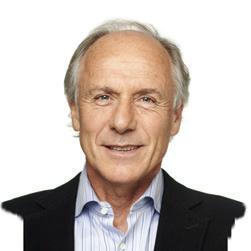

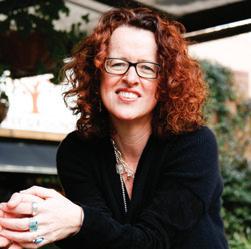
Dr Alan Finkel AO
Special Adviser to the Australian Government on Low Emissions Technology Chair of the Australian Government’s Technology Investment Advisory Council
Dermot Nolan Former CEO, OFGEM UK
Distinguished Professor
Genevieve Bell AO Director, School of Cybernetics, ANU
www.EN2021.com.au
FEBRUARY
FEATURES
BIG DATA
CYBER SECURITY SOLAR
SYDNEY WATER
SPECIAL FOCUS
MAPPING, GIS & SURVEYING
UTILITY LOCATION
SEWER REHABILITATION
EMBEDDED NETWORKS
DISTRIBUTED GENERATION
CUSTOMER EXPERIENCE
EVENT DISTRIBUTION (TBC)
OZWATER
MAJOR FEATURES
WATER MANAGEMENT
DEMAND MANAGEMENT
ENERGY NETWORKS
SUSTAINABILITY
ENERGY STORAGE CONFERENCE AND EXHIBITION
SPECIAL FOCUS
INSPECTION, CCTV & CONDITION ASSESSMENT MOBILITY
VEGETATION
MANAGEMENT
ENERGY STORAGE
FUTURE FUELS
WIOA VIC
WIOA QLD
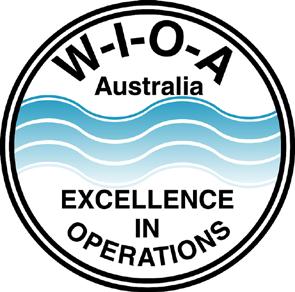

All industry personnel involved in the operation and maintenance of urban, rural and industrial water related infrastructure for the management, conveyance, treatment, discharge and reuse of water and trade wastes should attend this conference.
• 22+ speakers over 2 days
• 150+ exhibiting companies
• Ixom 2021 Best Tasting Tap Water in Victoria
• Victorian Main Tapping competition
Promoting best practice in water management by building the knowledge, skills and networks of operators.
• Listen to the experience of others through the latest “operational” technical and research based information platform and poster presentations.
WIOA is a national association facilitating the collection, development and exchange of quality information between people undertaking operational roles in the water industry.
• View and discuss the latest advances in technical equipment, products and services with suppliers and trade consultants.
• Update your knowledge and skills through interaction with fellow water industry employees.
Supported by
Sponsored by Hosted by Media Partners








